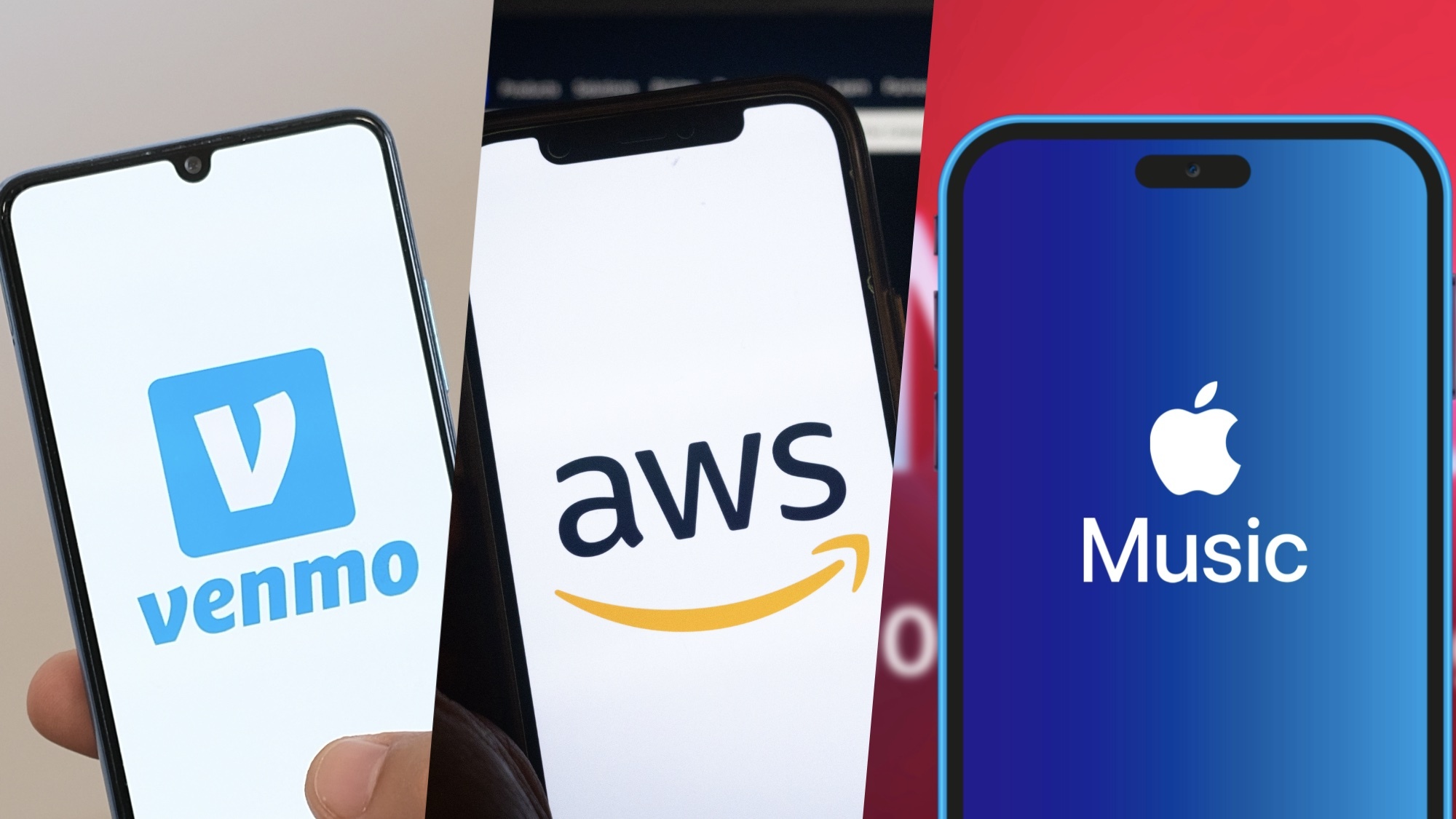AI translation face-off: I tested iPhone vs Samsung Galaxy vs Google Pixel and here's the winner
Which AI platform offers the best translation performance?
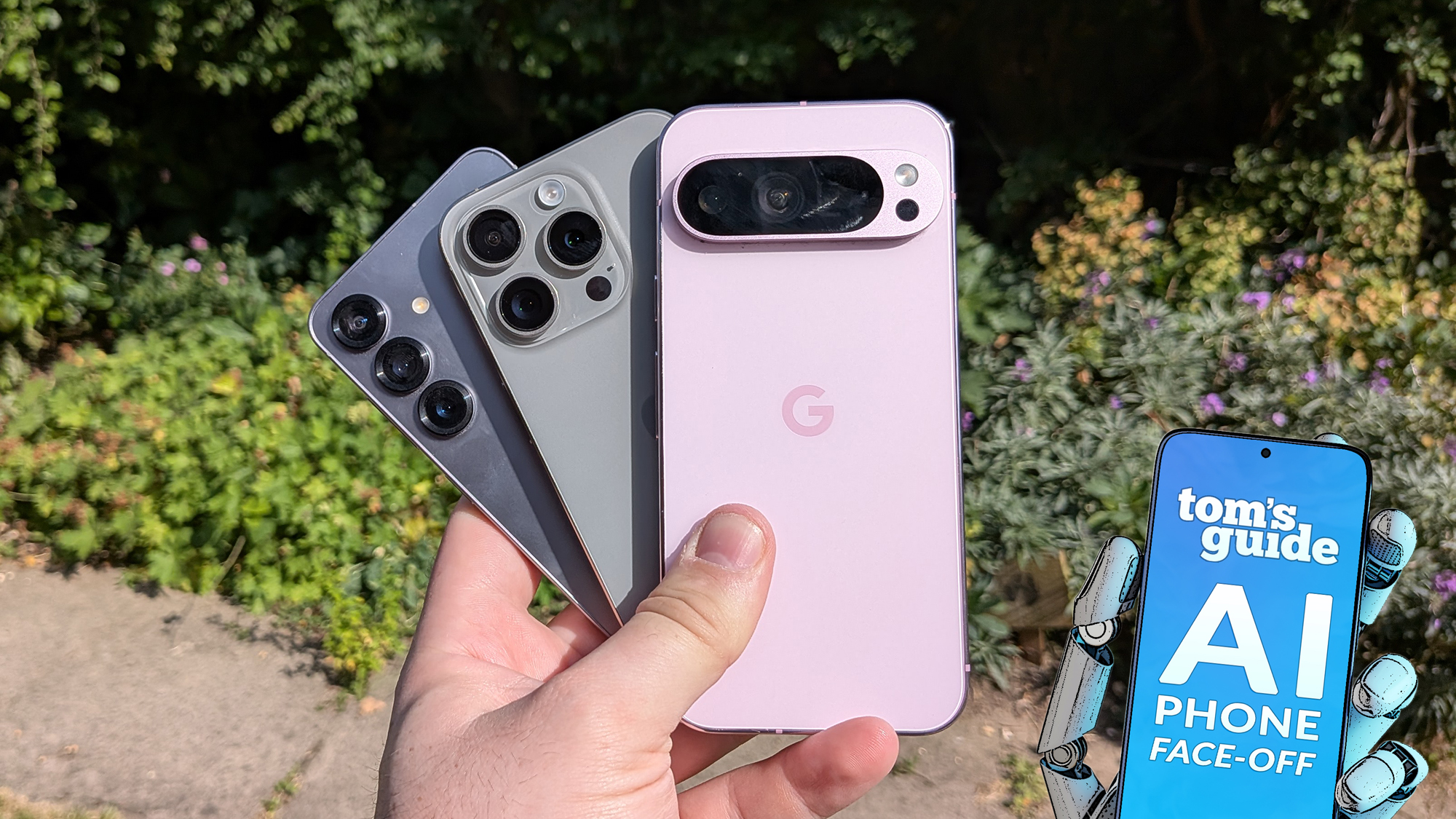
This article is part of our AI Phone Face-Off. If you're interested in our other comparisons, check out the links below.
Translation is one of those things that has benefited from AI integration for a long time now. It's not always about swapping one word for another, which is why companies like Google have been utilizing AI to ensure we get as few "all your base are belong to us" gaffes as we can.
The question is, how successful are they at doing this? To test out how different AI translation platforms actually perform, we put three different rivals to the test. A head-to-head between Google Translate on the Google Pixel 9 Pro, Galaxy AI on the Samsung Galaxy S25 and Apple Intelligence on iPhone 15 Pro Max.
We'll be testing all three phones in three separate languages: French, Spanish and Mandarin. We'll be looking at how well those three languages are translated with text translation, using camera/image translation tools and finally audio translating real speech. Which one does the best? Let's find out.
Text translation
Unless you're off travelling the world, or hanging out in particularly touristy areas of your hometown, the one place you're most likely to come across a foreign language is online. We've all been in that situation where we click on a link, and are suddenly met with a wall of indecipherable text.
Fortunately there are tools to help you figure out what's going on, and in a way that is significantly easier than copying it all into a translation app. Samsung, Google and Apple all have translation tools built into their respective browsers, and can convert entire webpages into a different language at the tap of a button.
For Google Chrome on the Pixel 9 Pro, the translate option is found in the three dot menu at the top right side of the screen. Safari on iPhone 15 Pro Max has a "Translate to English" option in the reader button on the left side of the URL bar. Samsung Browser on the Galaxy S25 has the most outwardly AI-looking option, with a "translate" option when you tap the AI-logo at the bottom of the screen.
For this test I utilized the Apple Newsroom, since Apple posts localized versions of different press releases in countries around the world. That means I had content available in French, Spanish and Mandarin, and an official English version to refer back to.
Get instant access to breaking news, the hottest reviews, great deals and helpful tips.
French
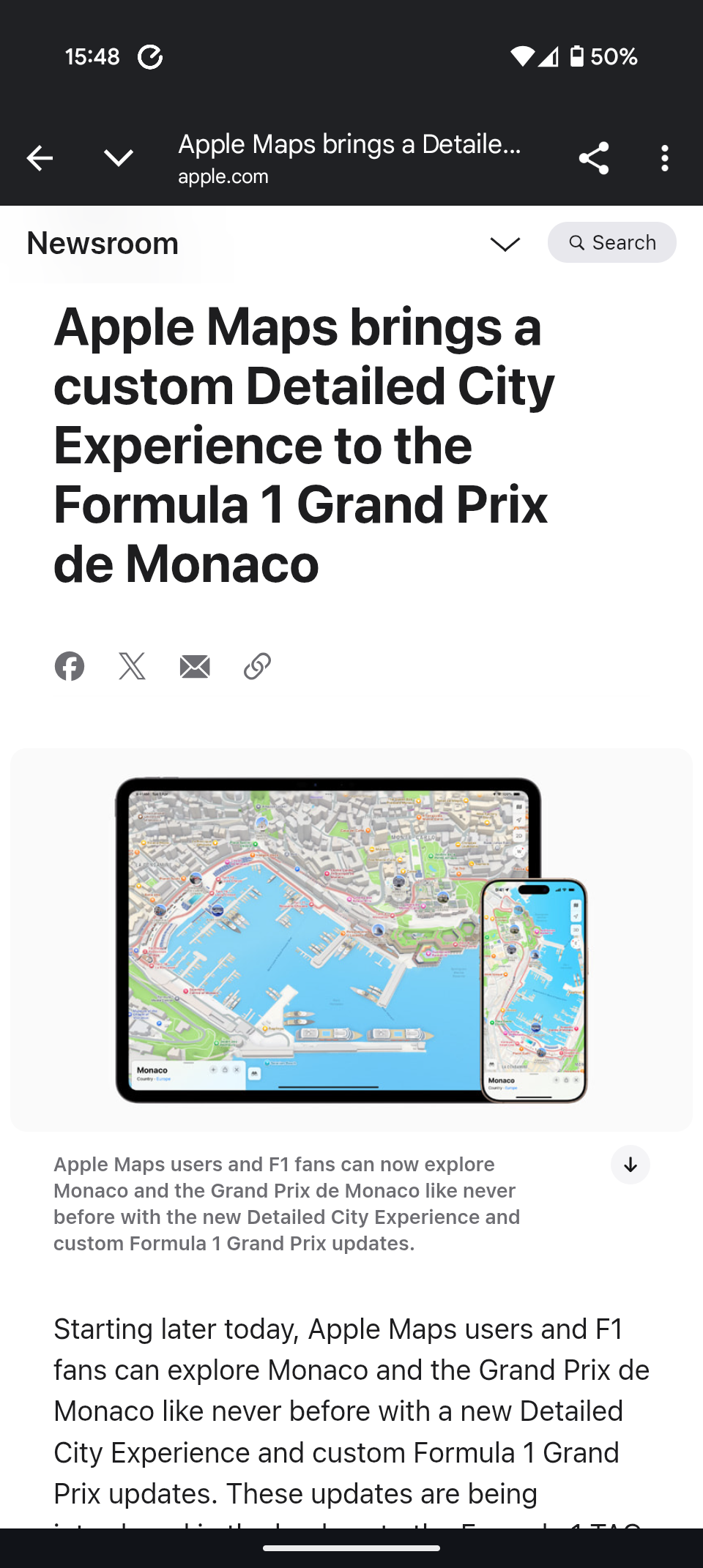
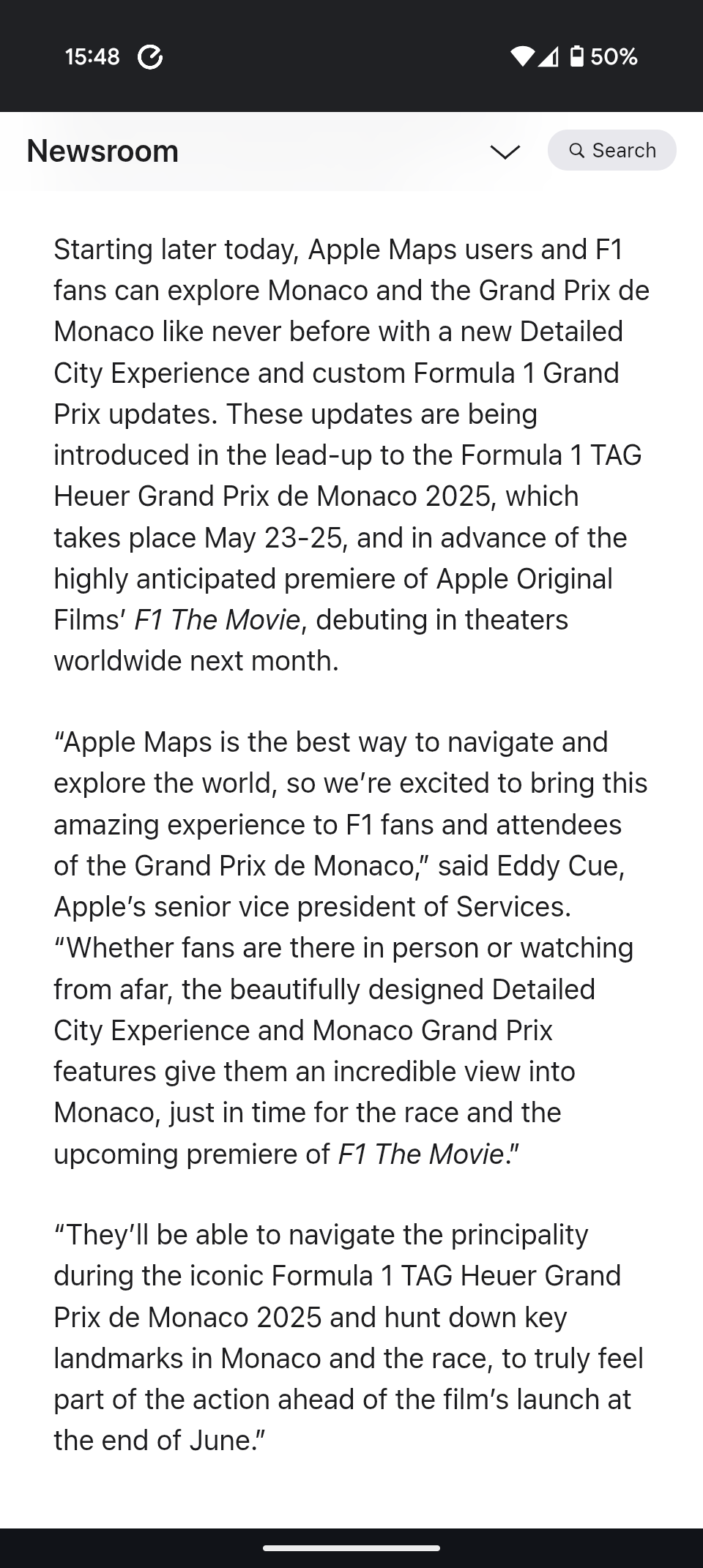
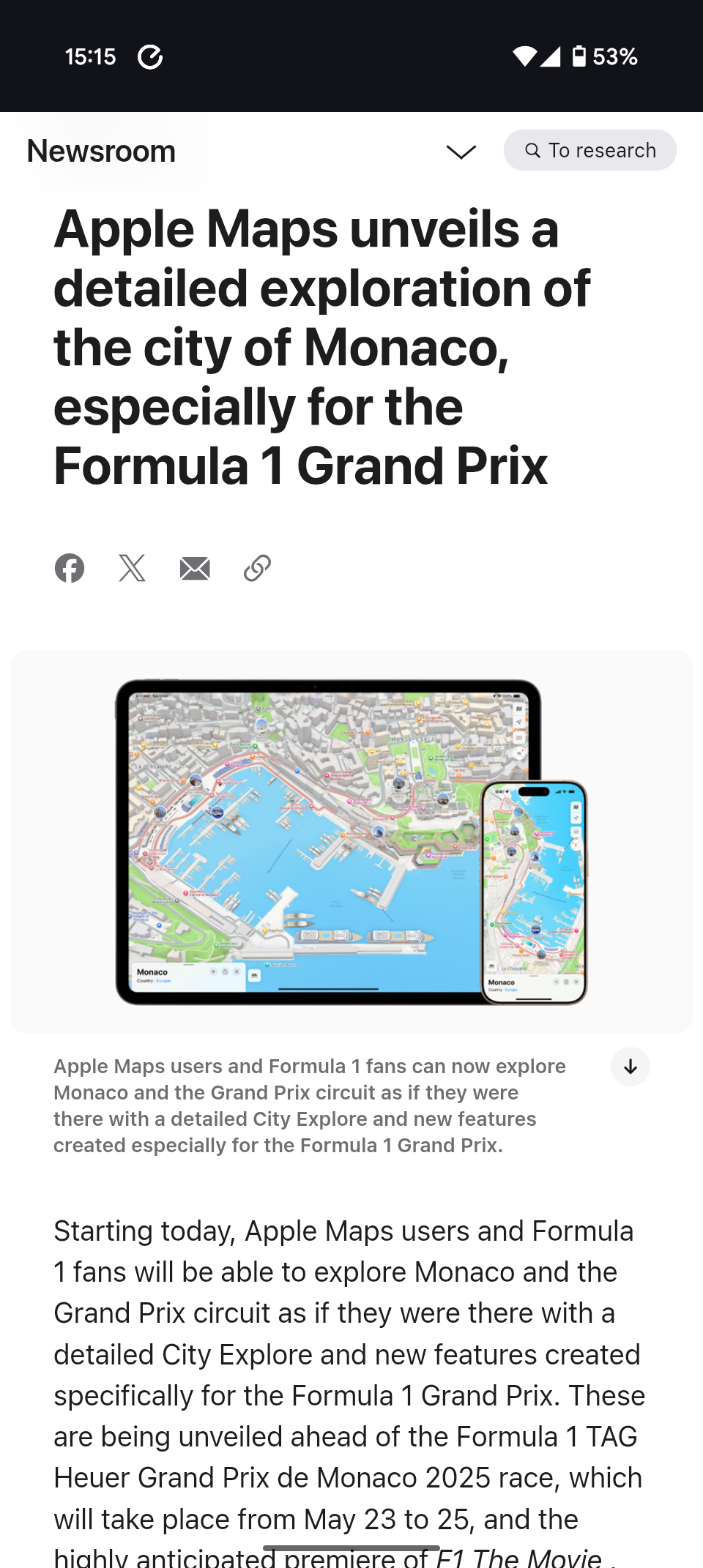
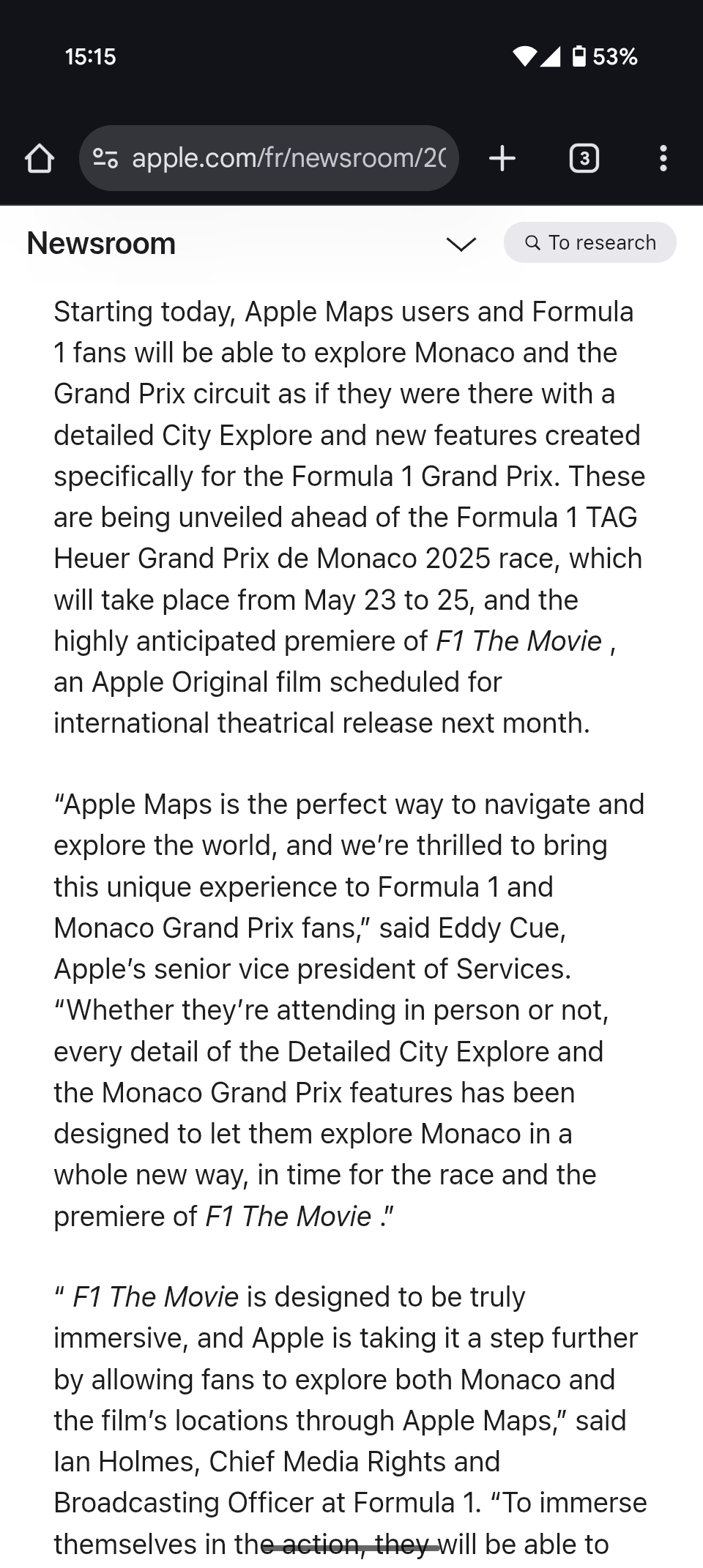
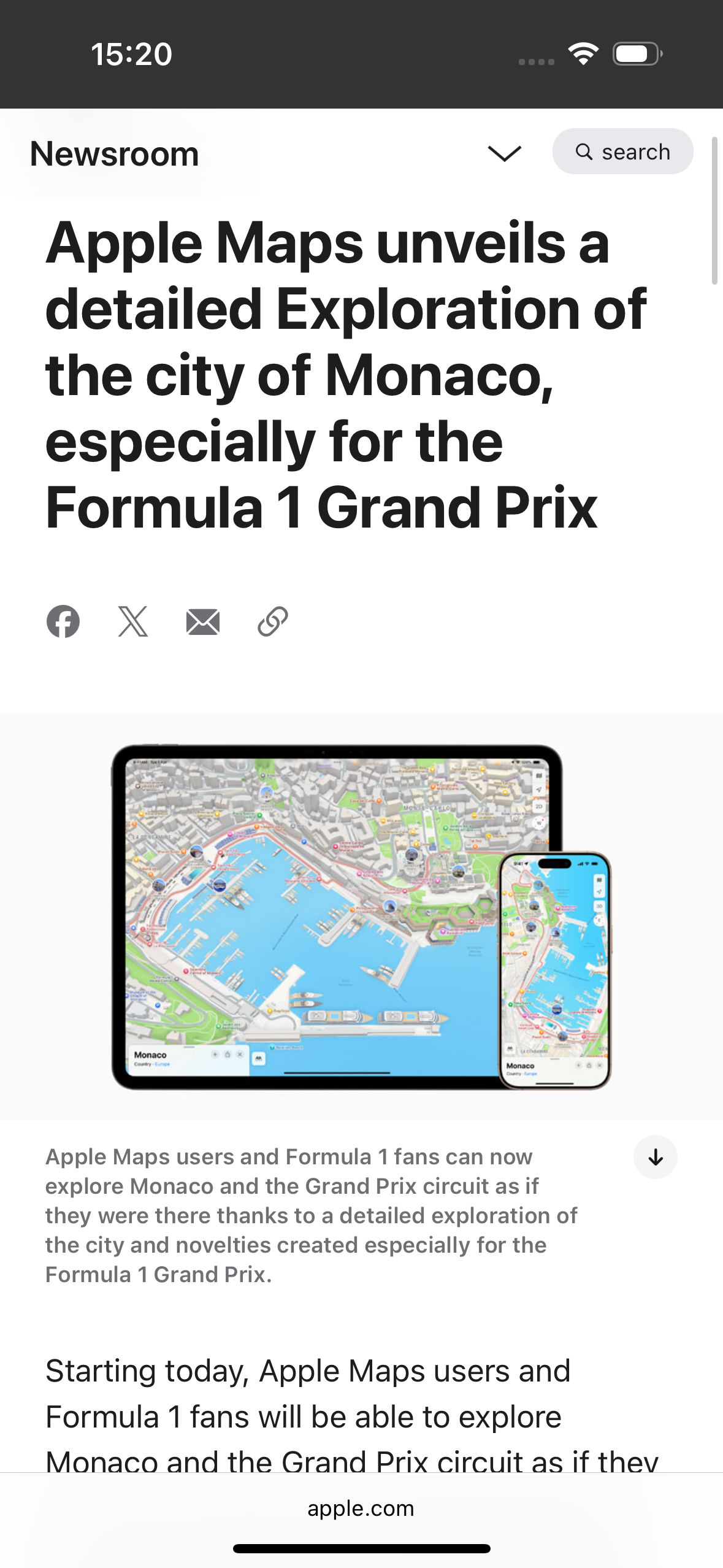
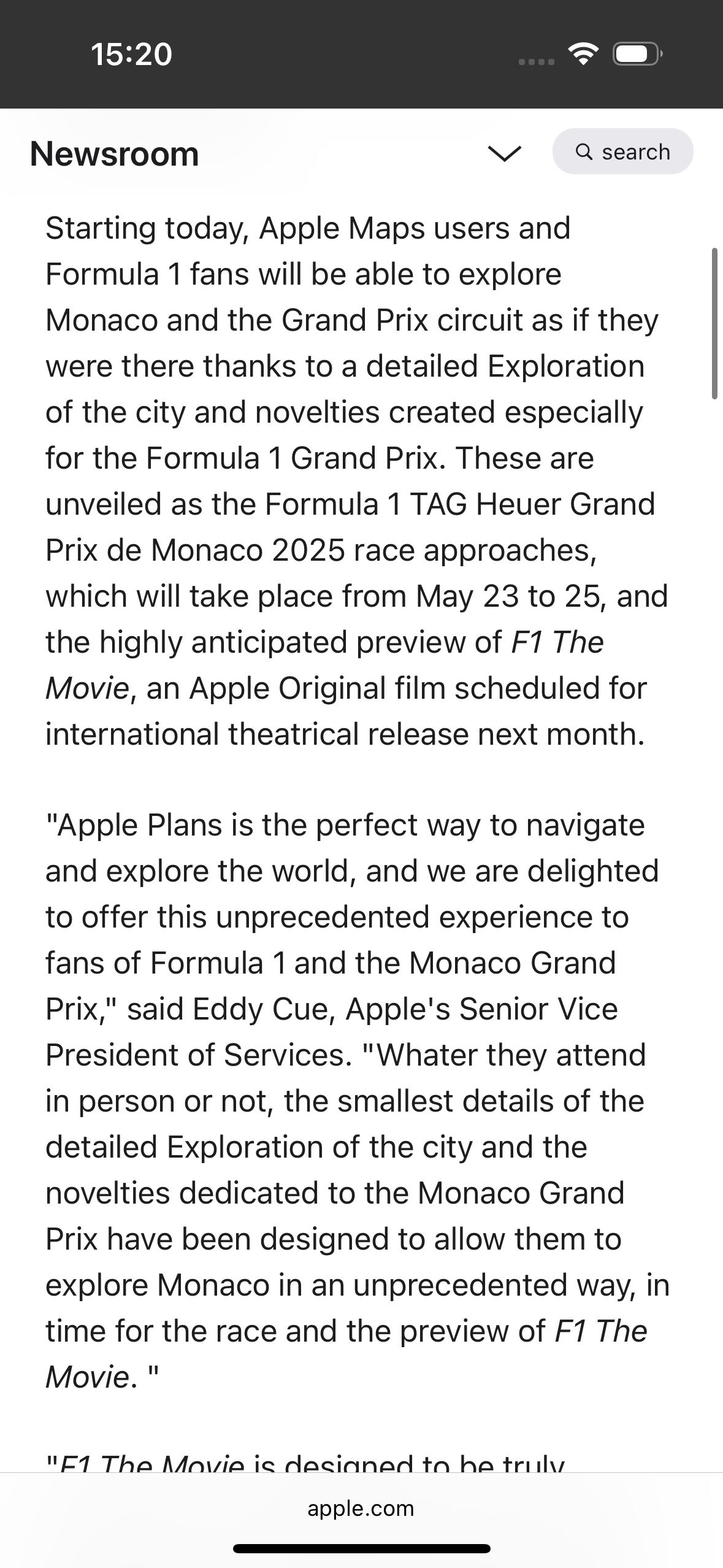
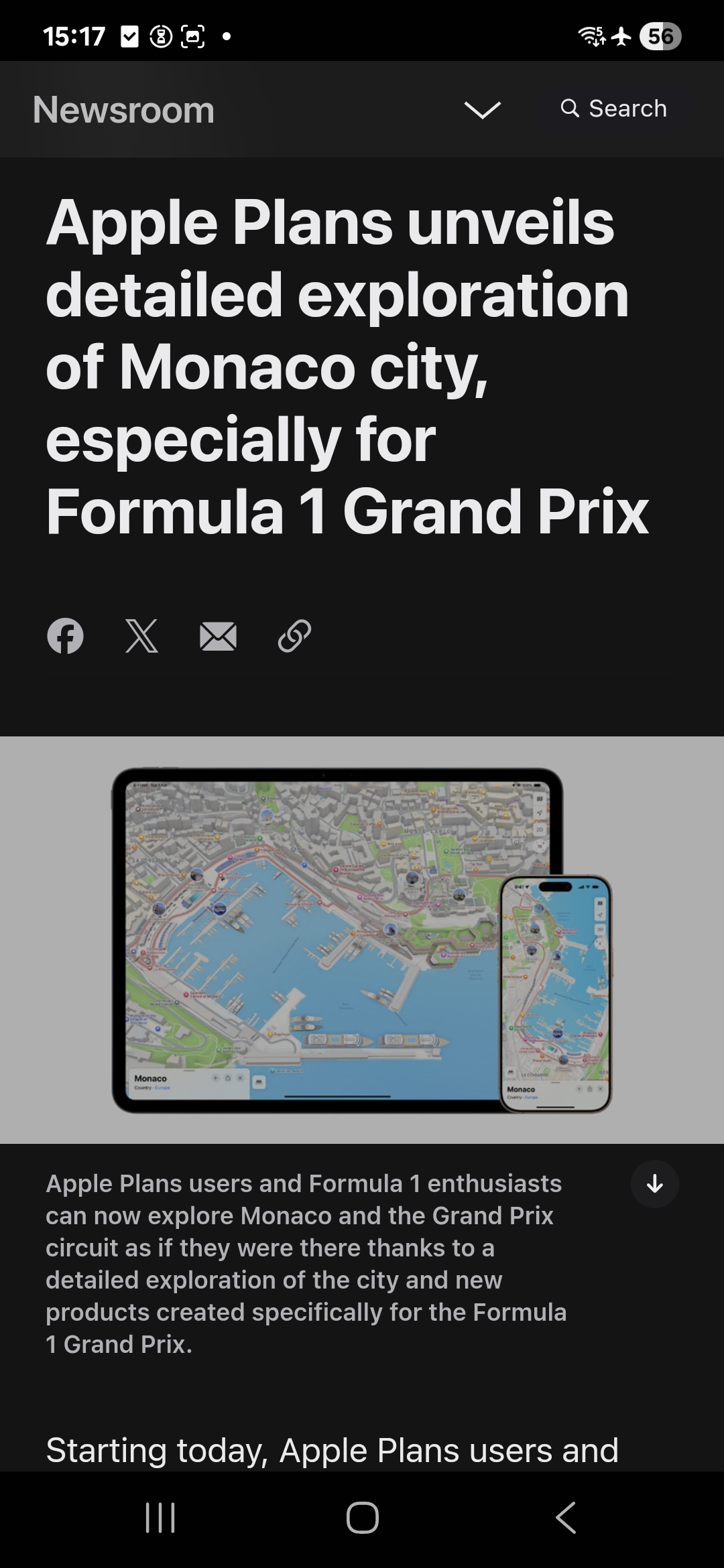
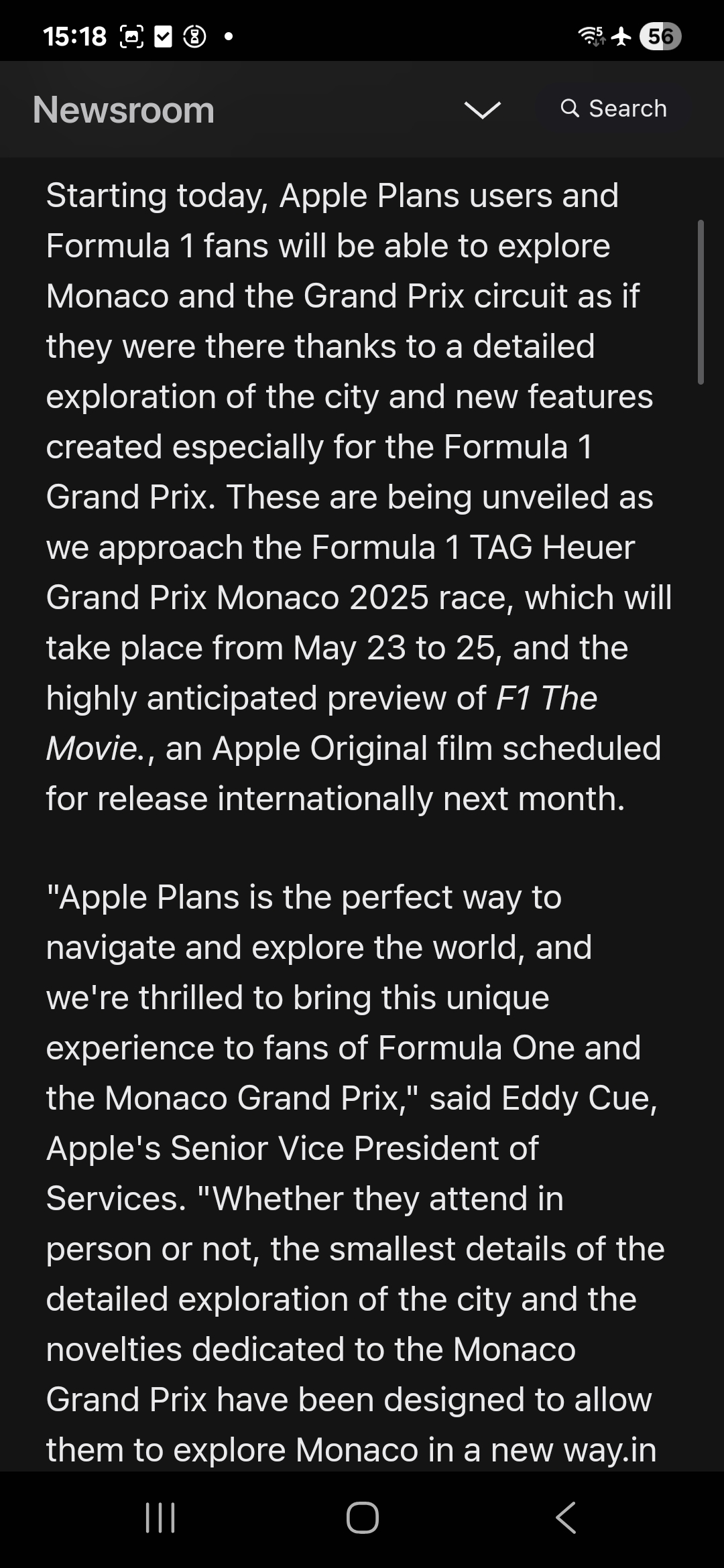
First French, where I translated this press release about Apple Maps updates released for the Monaco Grand Prix. All three phones were able to translate the entire page in a fraction of a second, which is a good start.
Almost immediately you can see some of the differences between the translation and Apple's official English release.
The headline in English is "Apple Maps brings a custom Detailed City Experience to the Formula 1 Grand Prix de Monaco". However, the translations read "Apple Maps unveils a detailed exploration of the city of Monaco especially for the Formula 1 Grand Prix". Which isn't exactly the same wording, but it is easily understood.
Interestingly, aside from a single letter "A" in the Samsung translation, and a few different capitalizations of words, the headline was identical across all three devices, with one exception. Galaxy AI was not able to register that "Apple Plans" is the French name for Apple Maps, something Apple and Google had no issue with.
Reading a bit further and you start to see a few more variations here and there. For instance, Apple and Samsung translated the phrase "grâce à" as the more literal "thanks to" while Google went for the less literal but still correct "with a." Nothing serious, but small changes that show they're not translating in exactly the same way.
All the phones' translations deviate from the official English quite a bit. One thing that stood out to me in particular was a quote from Apple's Eddy Cue, who said that "Apple Maps is the best way to navigate and explore the world" while all three translation tools changed best to "perfect". Since Eddy Cue likely gave that quote in English, I'm guessing the difference was so uniform thanks to being translated into French and then back to English.
In any case, while the translated text may not completely synchronize with the official English, you can still understand what's being said without issue. And the fact that all three devices have more or less the same translation goes to show how relatively easy it is to translate from one European language to another — as weird and cobbled together as English may seem at times.
Spanish
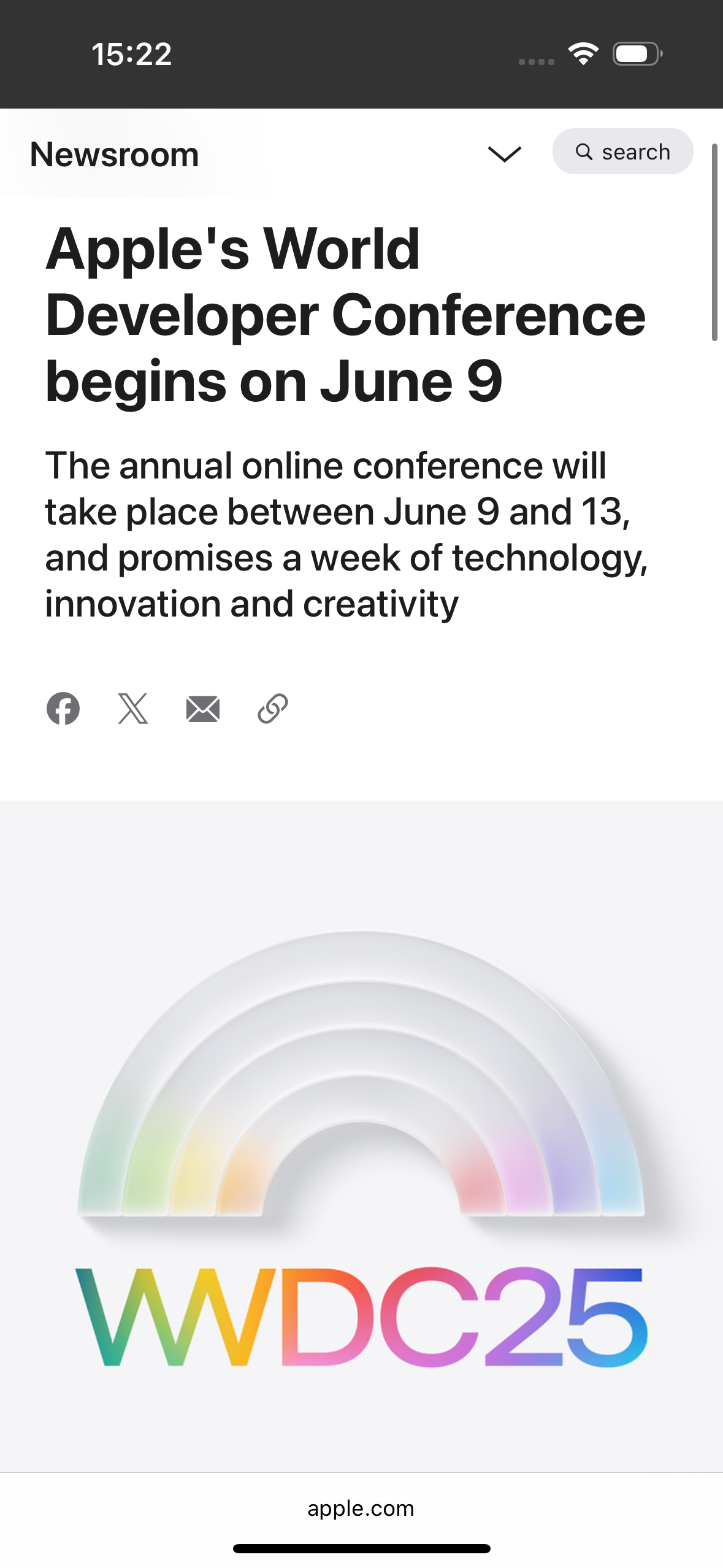
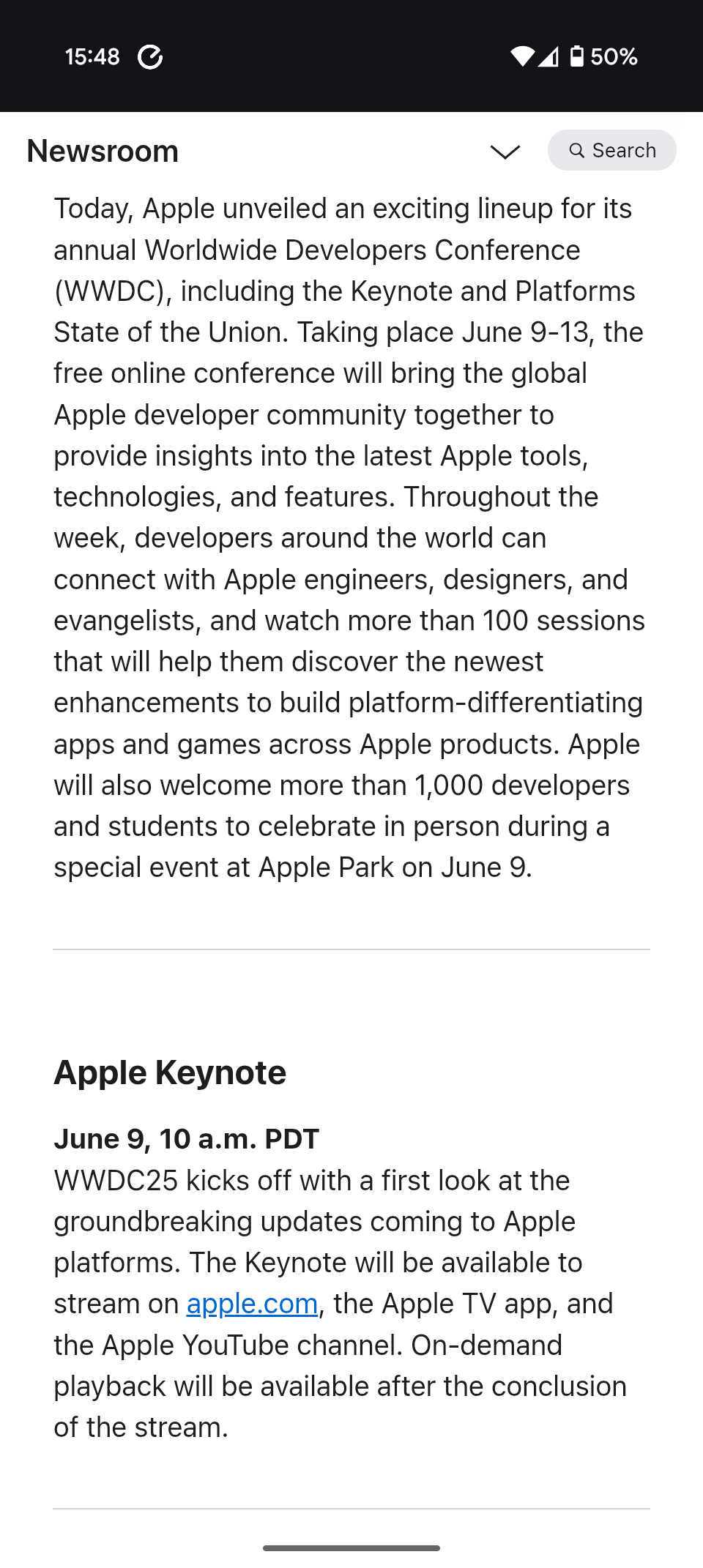
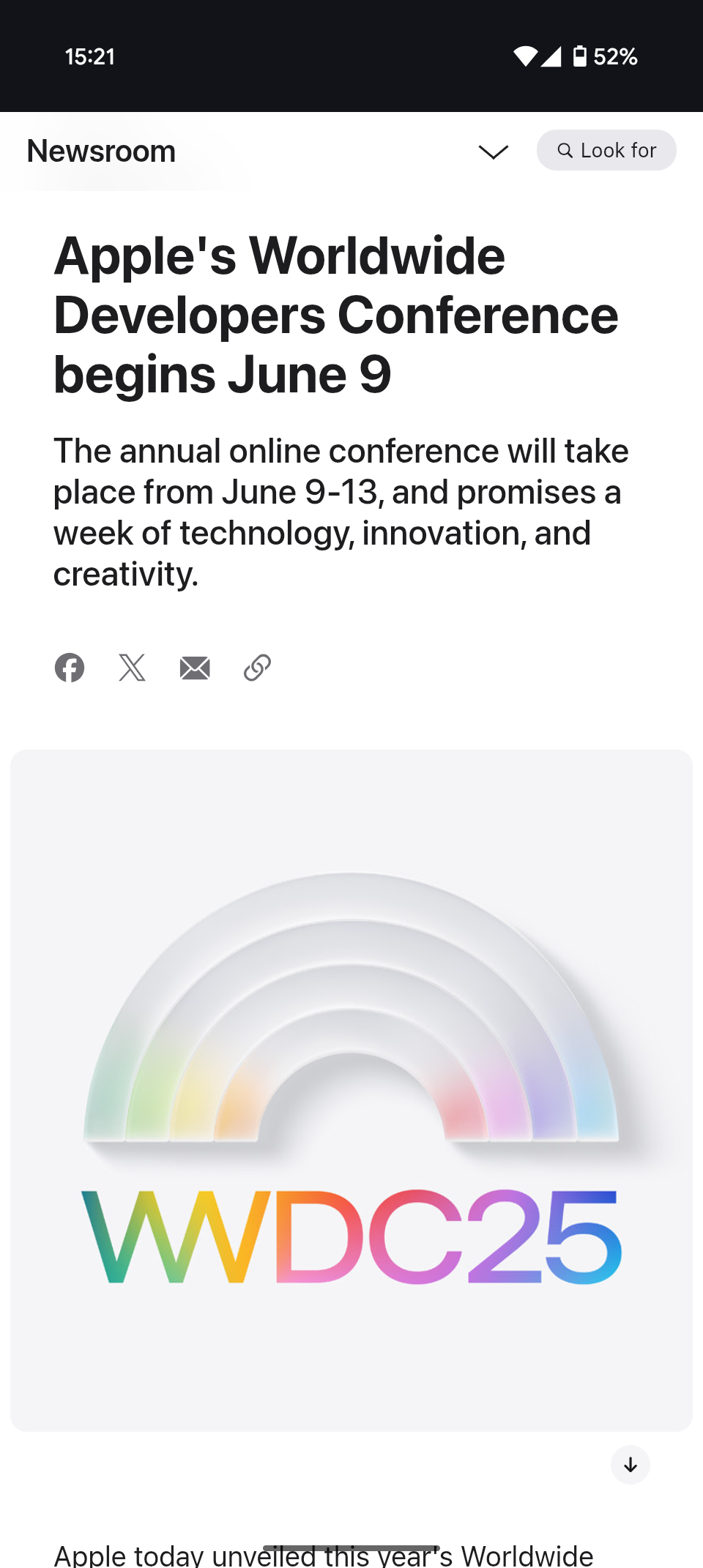
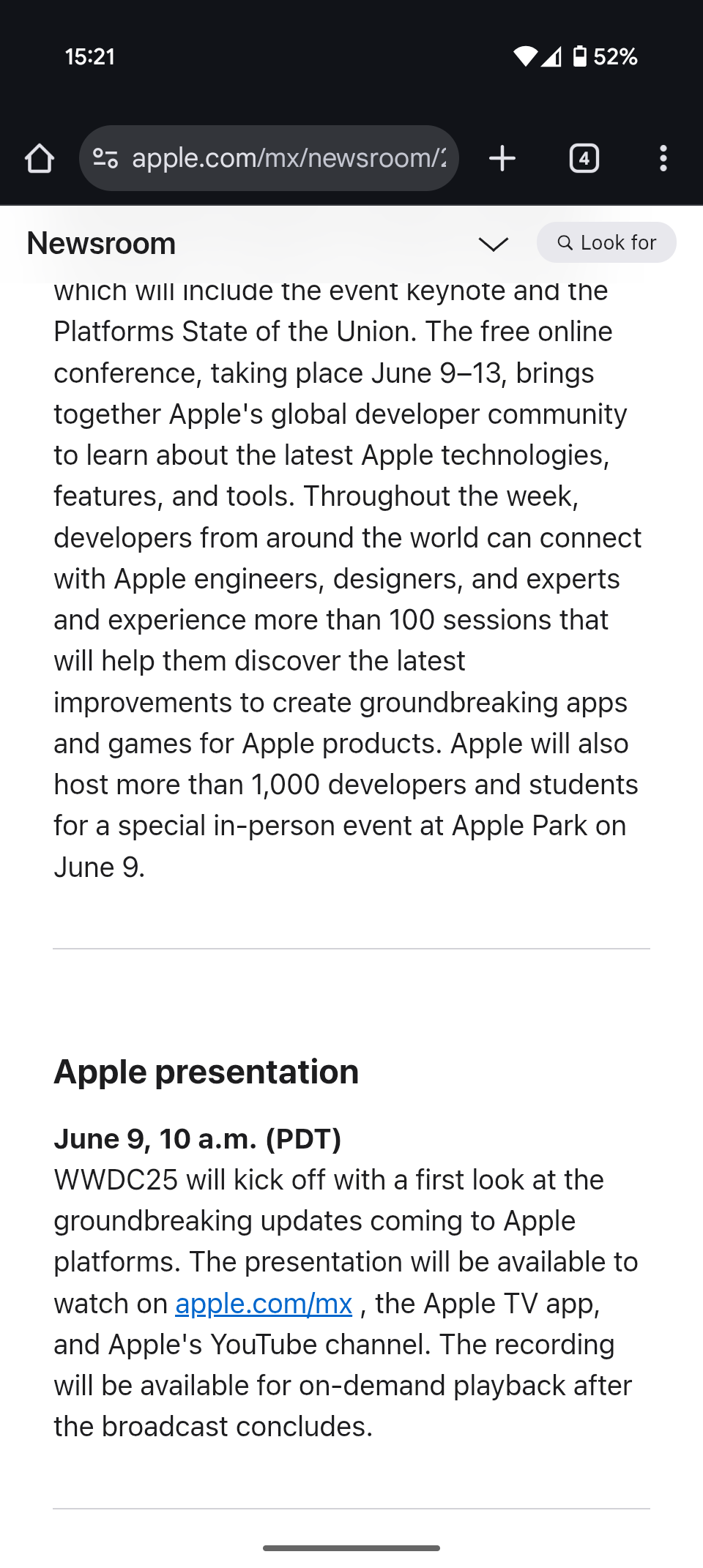
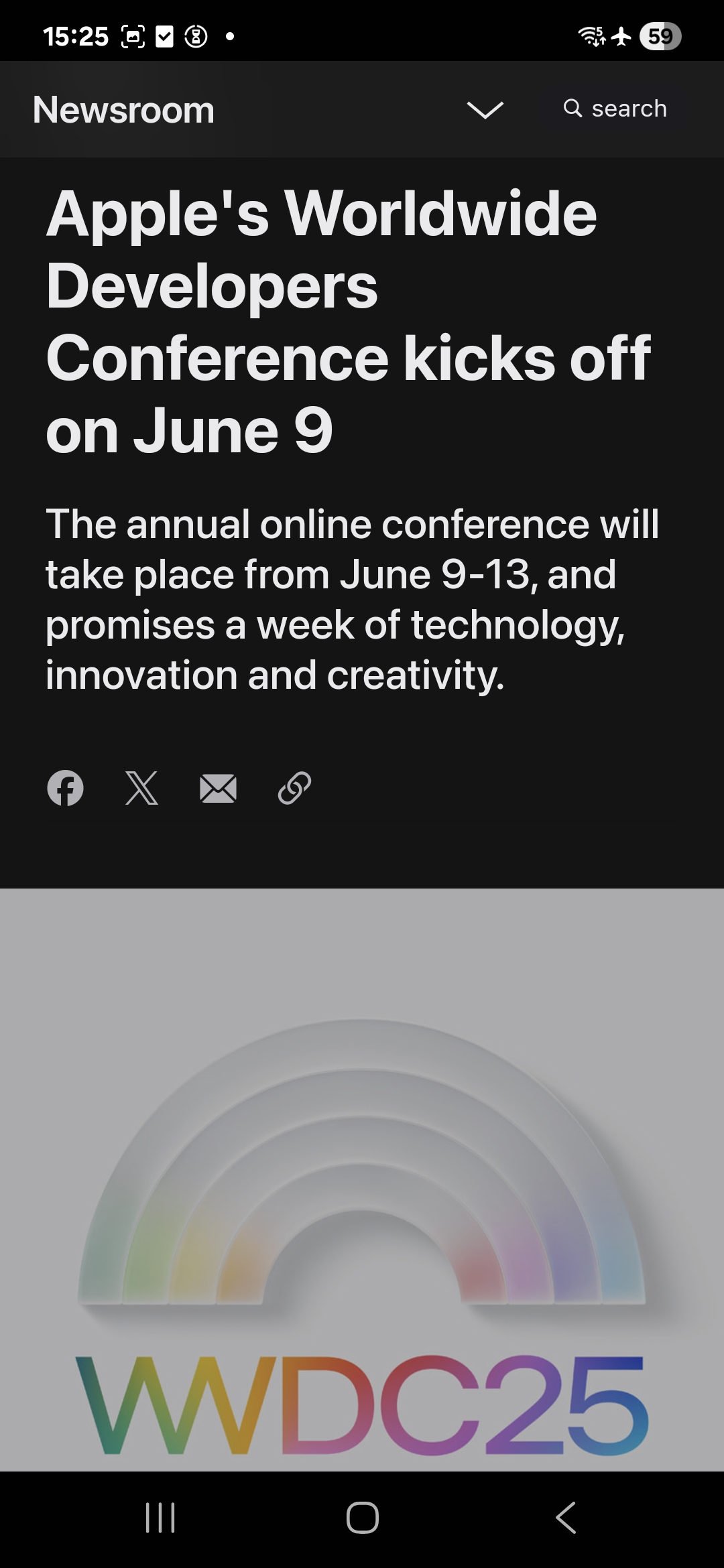
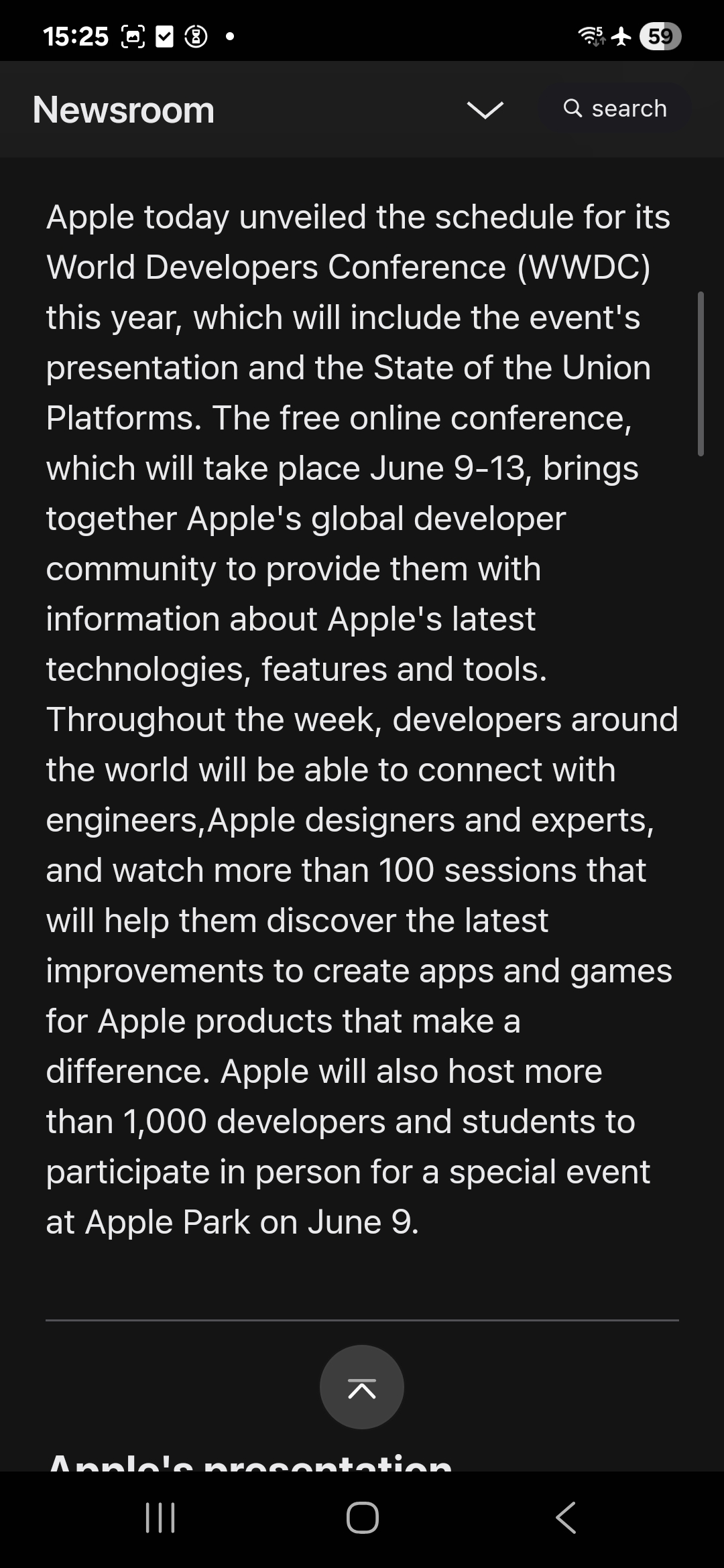

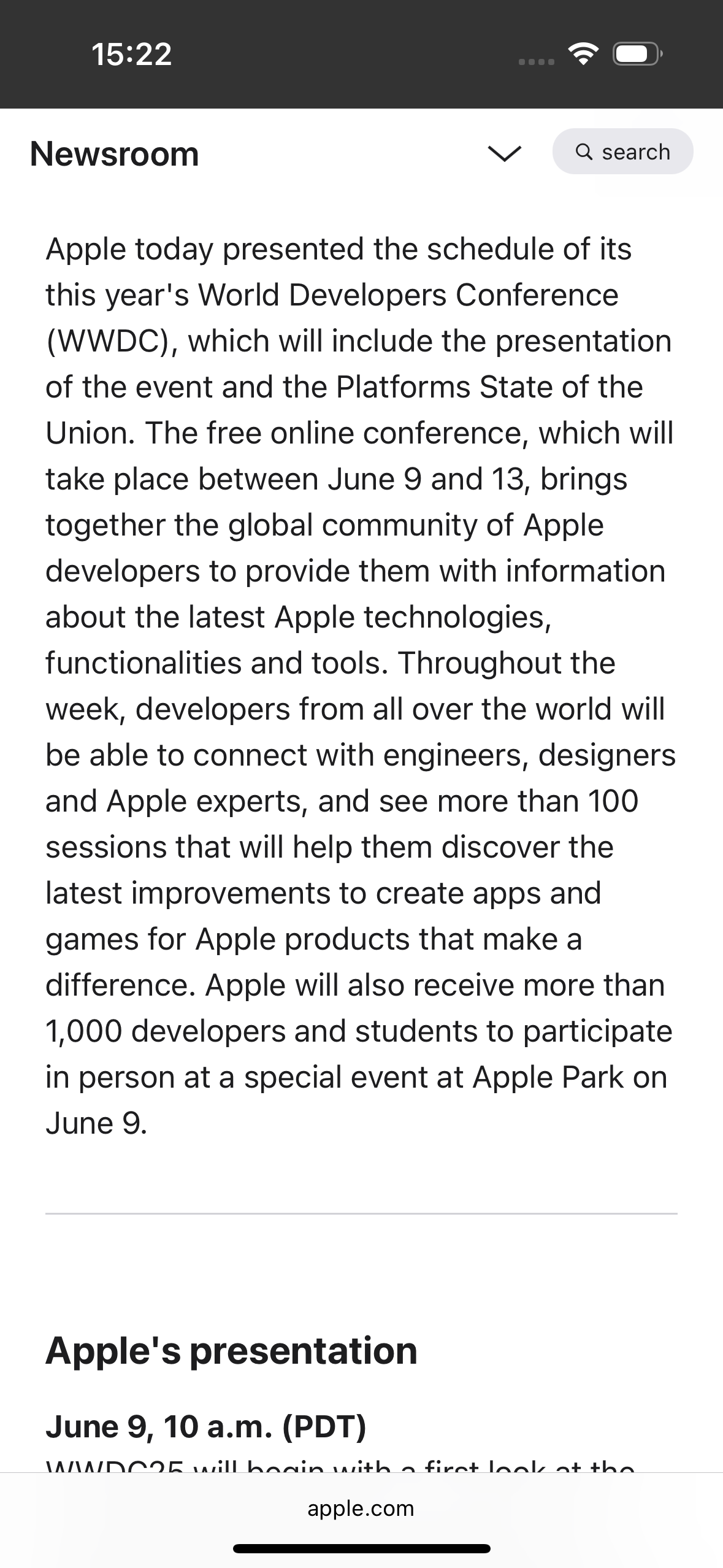
For Spanish, I opted for this press release from the Mexican version of Apple's Newsroom — covering the official announcement of Apple's WWDC 2025 developer's conference.
The very first sentence of the release is where things change. The English release talks about the WWDC "lineup", whereas Apple's translation of the Spanish uses the word "schedule". Obviously not the same word, but close enough that nobody is going to be confused. However, both Google and Samsung refer to the "program," which threw me off because I've never actually seen the word used in this context. It's a valid translation (think of the paper program you get at theaters and other live performances) but not the most obvious one.
Again, there are some minor differences in the headline, no doubt thanks to Apple using the phrase "kicks off" in the English version. Idioms generally don't translate directly between tongues, so it's understandable that the Spanish-to-English translation uses "begins" instead.
Going further down and there are other examples of this going on. For example, the English release says that "Apple will also welcome more than 1,000 developers and students to celebrate in person during a special event at Apple Park." The Apple translation says that Apple will "receive" those guests while Google and Samsung both say "host."
Apple's translation also says that the guests will "participate in person" rather than celebrate, while Samsung expands that to "physically participate". Google Translate opted for "special in-person event." None of this is wrong, per se, but you're getting rather different expectations of what that event might be based on the translation.
Weirdly, the English version refers to "Apple engineers, designers, and evangelists," whereas the translations swap the final word for "experts." It's an odd word for Apple to pick for the English release, given its strong religious connotations.
Mandarin
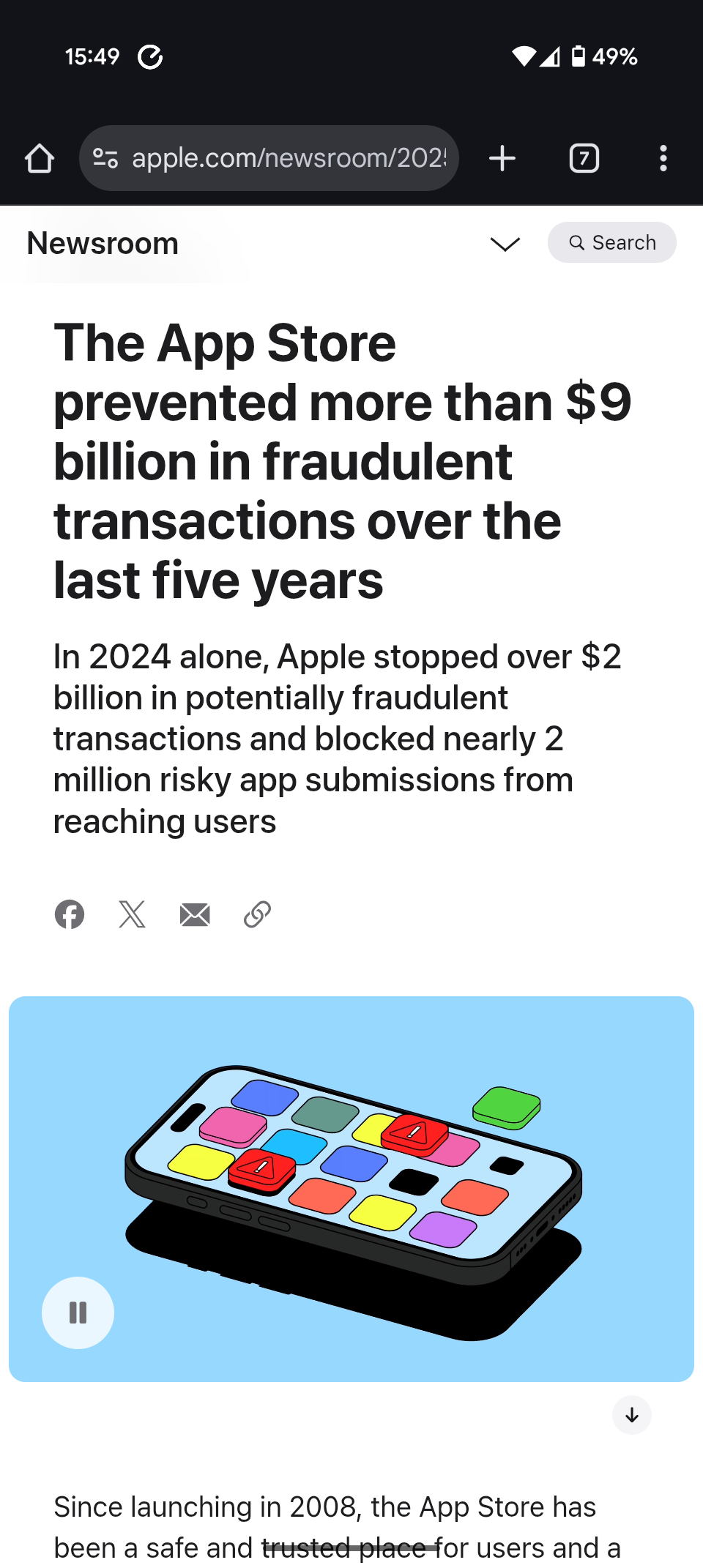
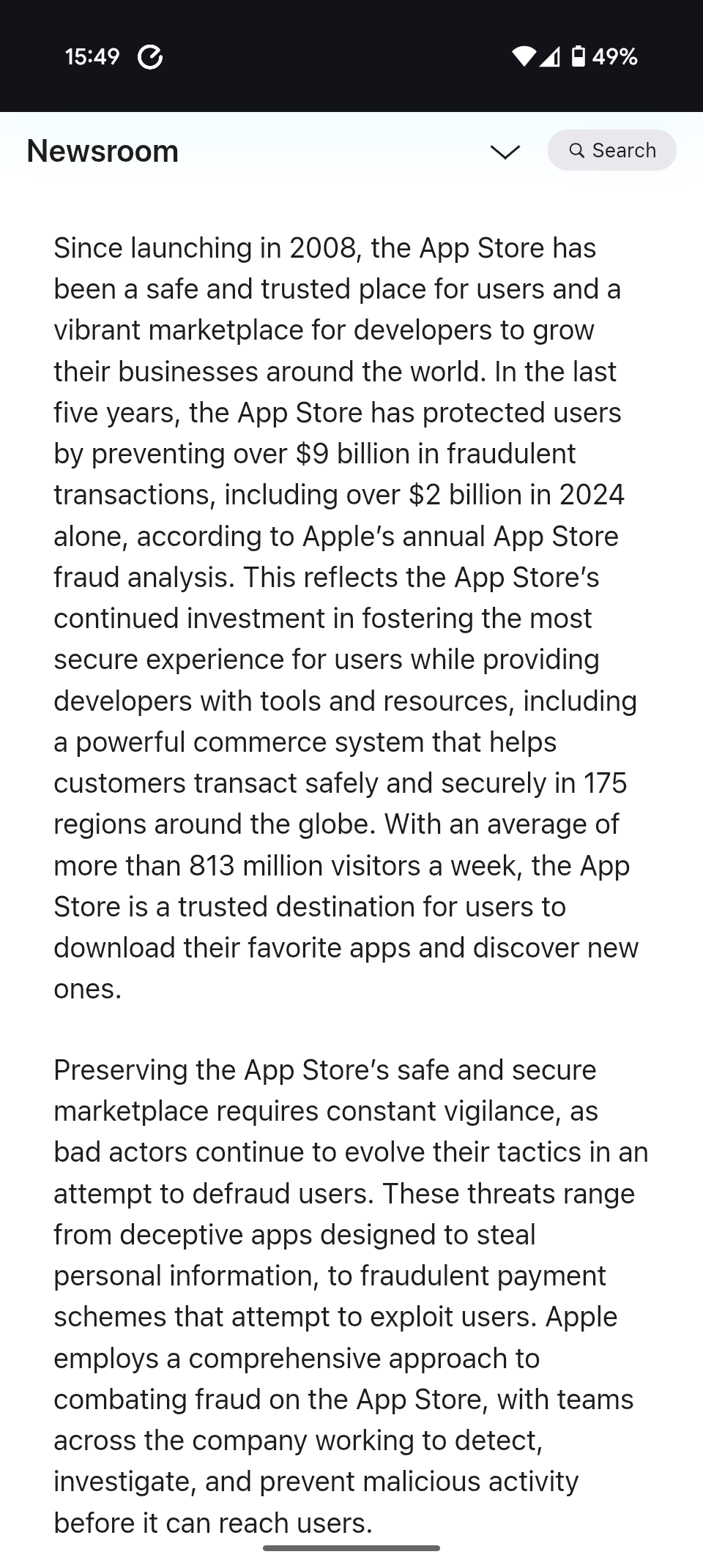
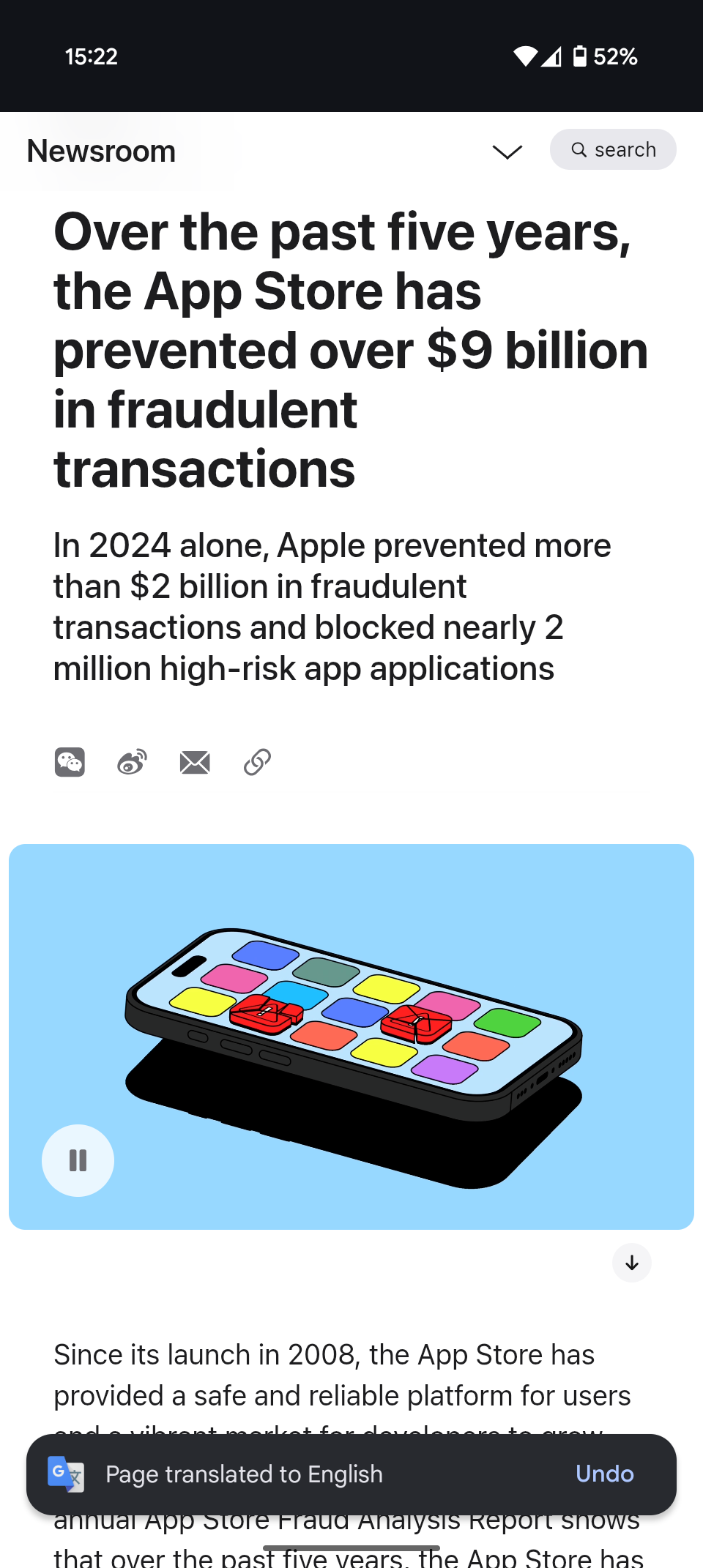
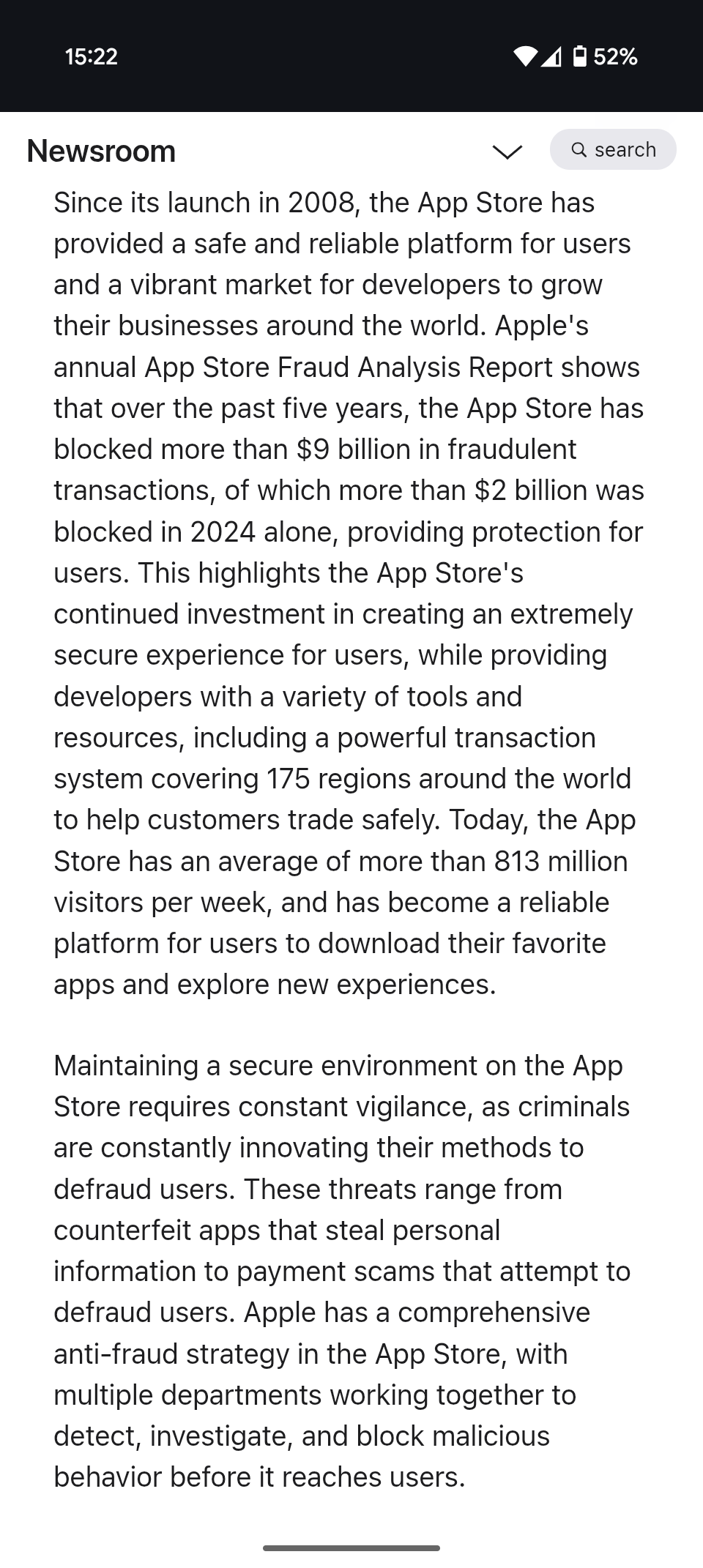
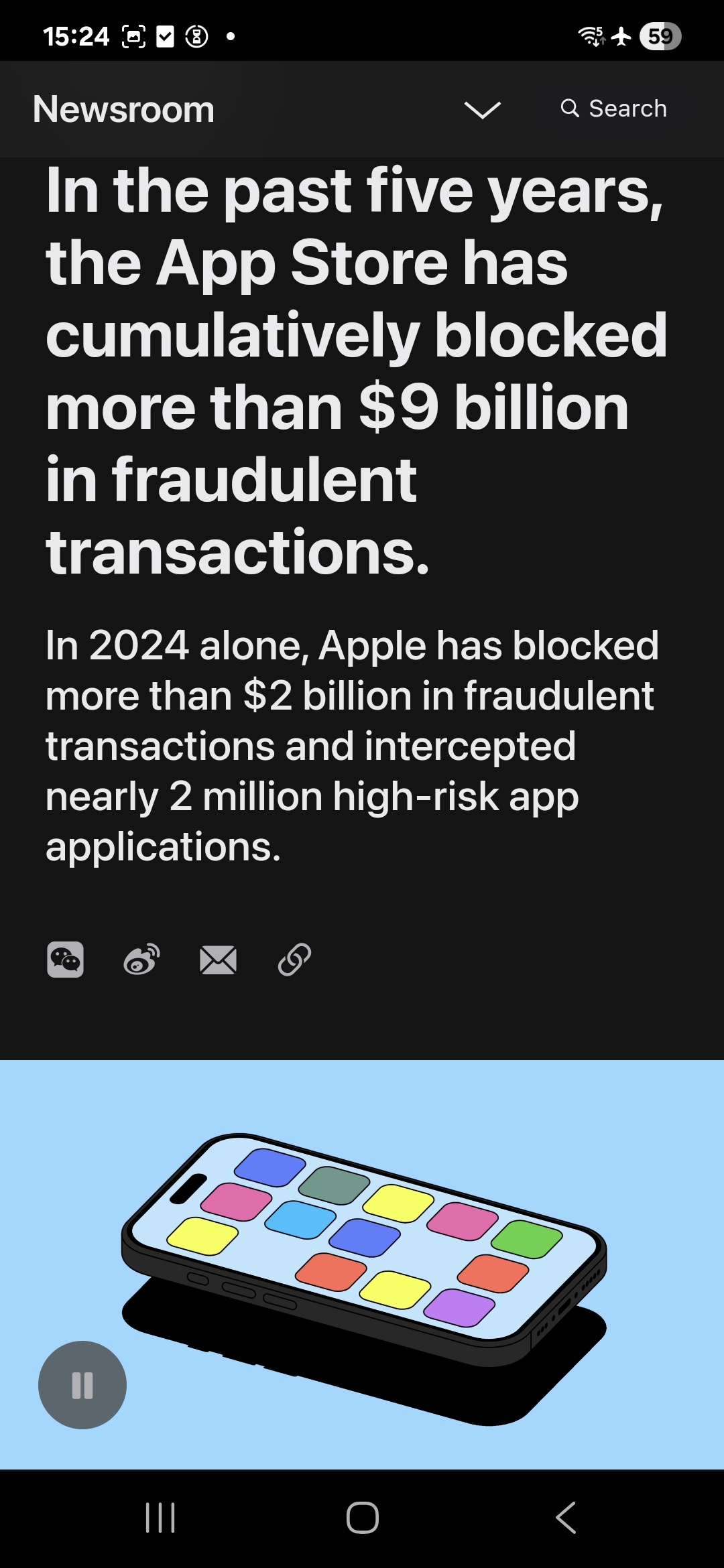
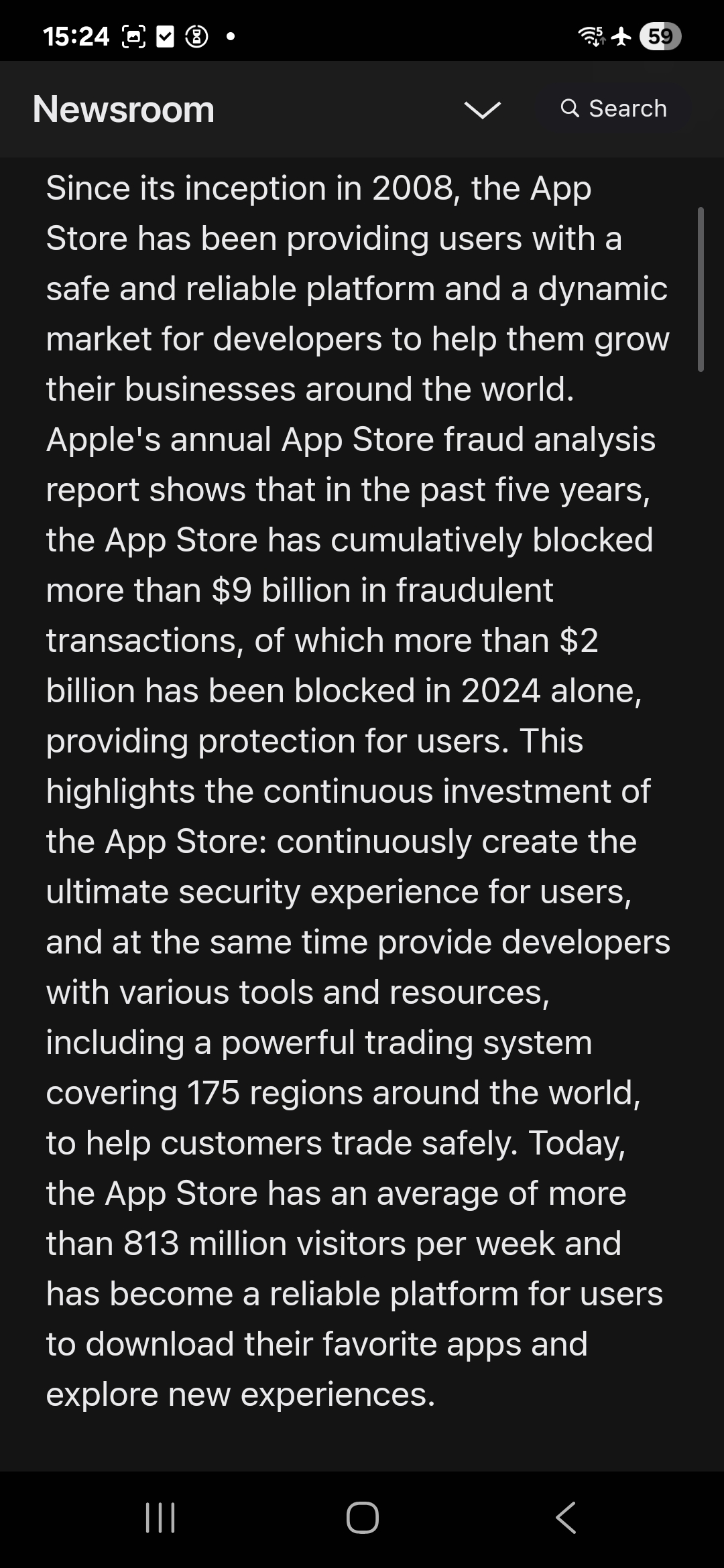
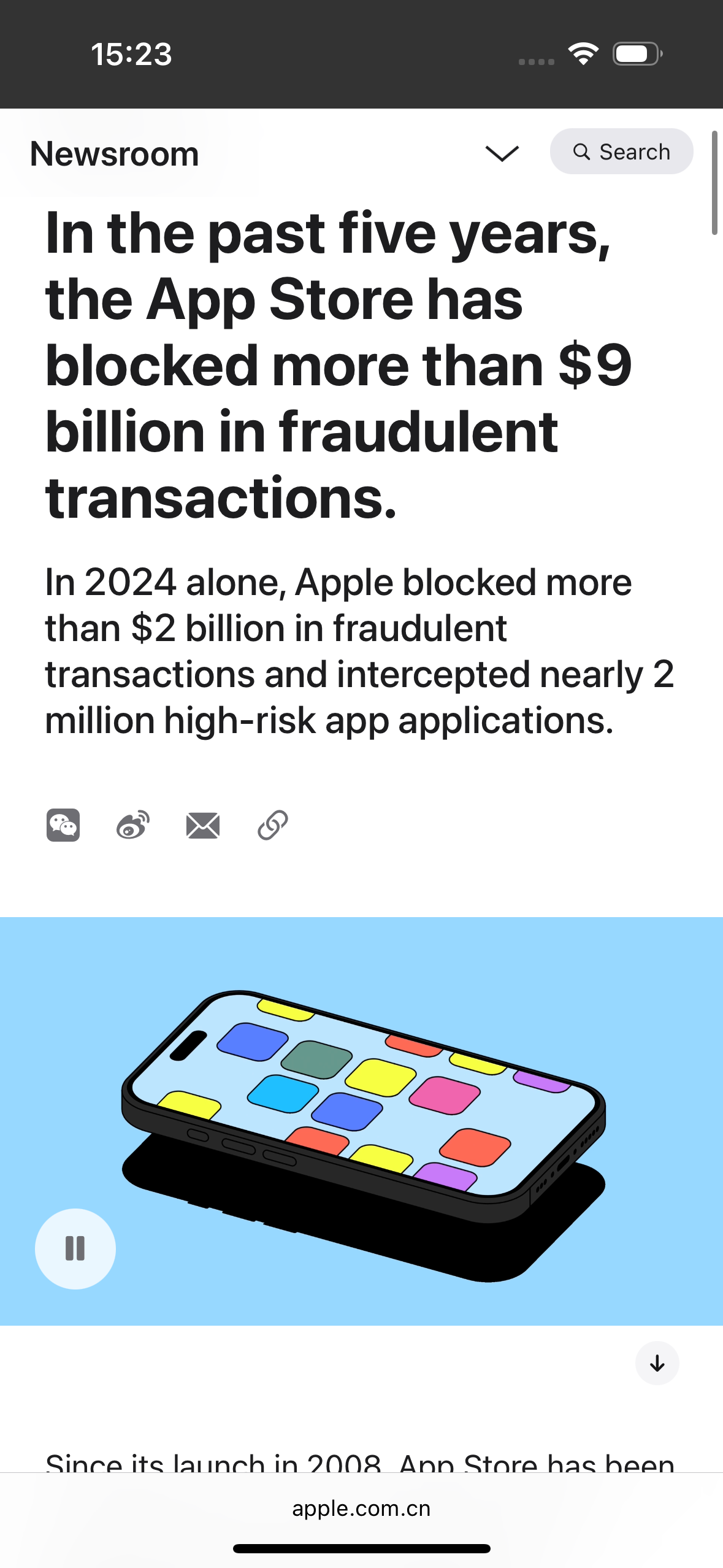
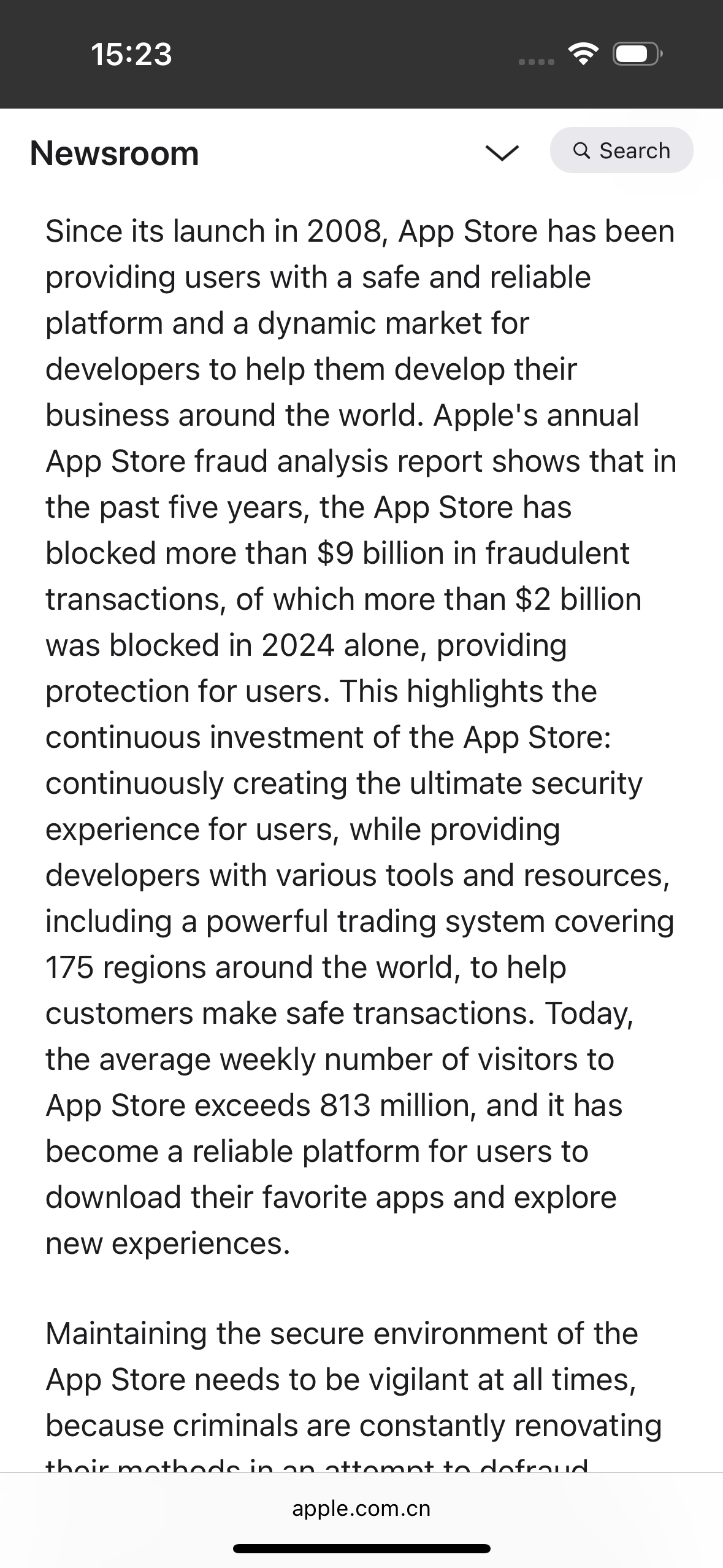
Translating between English and romance languages is fairly easy. They share a lot of common ground, which makes sense given that English is essentially three languages in a trench coat that mugs other languages to cherry-pick their lexicon. Meanwhile, Mandarin, the main language spoken in China, is often referred to as the most difficult language for English speakers to learn.
I've opted for this press release, focusing on how Apple has blocked $9 billion in fraudulent transactions from the App Store over the past 5 years.
What immediately stands out is that all three translations have a very different sentence structure compared to the English release — mentioning the five-year timeline first, rather than at the end of the sentence. Samsung also translated the headline as saying "cumulatively blocked" rather than the simple "blocked" and "prevented" used by Apple and Google. But the general idea of the topic is still there.
For the most part, the translation of Mandarin is pretty clear. The general wording and structure do deviate from the English version by quite a bit at times, especially compared to French and Spanish, but the majority of the text is easily understandable.
There were a few confusing word choices, though. In the English press release it mentions that criminals "continue to evolve" their tactics to try and defraud users. But the Apple translation turned "evolve" into "renovating", with Samsung making the more bizarre switch to "refurbish". Google didn't use evolve either, but the choice of "innovating" at least better captures the meaning of the original sentence.
Another minor goof involved Apple's translation saying "activate after passing audit" rather than "activated," which was employed by Samsung and Google. The iPhone also seemed to have an accident with the caps lock key, by replacing a word with "unSPECIFIED" rather than producing the whole word in lower case.
The others weren't so perfect, though. In a section detailing "problematic apps" in English, Samsung's translation referred to them as "hanging sheep's heads and selling dog meat" apps. I know a single word of Mandarin, so I'm no expert, but I feel like something went spectacularly wrong there. Especially since Apple and Google used the phrase "problem apps" and "dummy apps."
This issue stuck around after I refreshed and retranslated the page, which suggests it wasn't a one-time glitch. I didn't find any other examples of serious screw ups in the rest of the press release, and for the most part all three offered a clear and concise translation — even if it isn't a word-for-word copy of the original English release.
Other text translation tools to note
It's also worth mentioning that there are a lot of tools capable of doing the same thing. Apple Intelligence allows you to ask Siri to translate what's on your screen, which it does with the aid of ChatGPT. Once you've asked, Siri will send a screenshot to ChatGPT, which then returns a text translation at the top of your screen. No need for you to go anywhere, though the downside is that you only capture a small snippet of what's on offer.
Google Gemini isn't quite so helpful in that regard. You can ask it to translate URLs that you paste into the chat bar, but I found it defaulted to summarizing the webpage for me instead. Asking Gemini to offer a full translation rather than a summary didn't help either, and I was instead pointed towards Google Maps. However, Circle to Search can do what Apple offers, albeit with a gesture rather than a voice command
Camera translation
Sometimes you need a quick and easy translation of something you're looking at, something that isn't already on your phone. This is where camera translation comes into play, with the iPhone 15 Pro Max, Galaxy S25 and Google Pixel 9 Pro all offering their own take on camera-based translation.
The Google Pixel 9 Pro probably has the most versatility when it comes to translating via the camera — because you can do it with either Google Lens or Gemini Live. Both the Google Translate camera mode and Circle to Search can translate through the camera, but since they are powered by Lens, all three are functionally the same thing.
Gemini Live is arguably the most inconvenient of the lot. While it will translate foreign text when prompted, it only seems capable of reading it out to you. Not to mention the fact you have to open and activate Gemini Live first. As for Google Lens, it depends on how you access it. Personally, I found that opening the camera with the double-tap shortcut and then using Circle to Search was the best way of translating quickly.
Google offers a clean translation experience too, completely blocking out the original text and overlaying the translation in an easily readable way. Or at least as clean as the source actually allows.
Apple also has two options: Visual Intelligence and the Camera mode in its translation app. The one that's most convenient for you will all depend on whether you have one paired to the Action Button or not. Meanwhile, Samsung's Bixby Vision won't show a Translate option until you activate it in the settings. It's not clear why it isn't on by default.
Bixby Vision is also the hardest of the lot to find. The easiest way to do it is to go through the Bixby voice assistant, and ask it to open Bixby Vision. The only other way is to go through the Camera app's "more" menu, or search for it in the app drawer — because there isn't even an option to pin a shortcut to your home screen. Plus, unlike Google and Apple, Samsung doesn't appear to have a camera option in its first-party translation app.
French
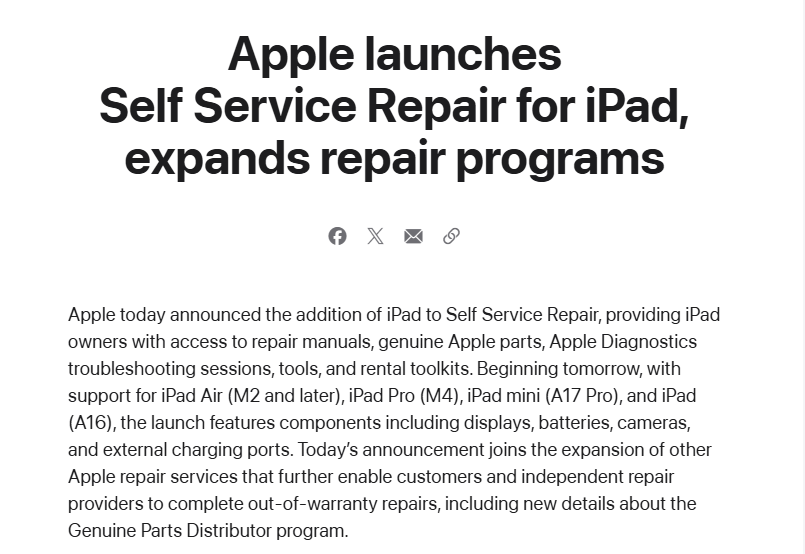

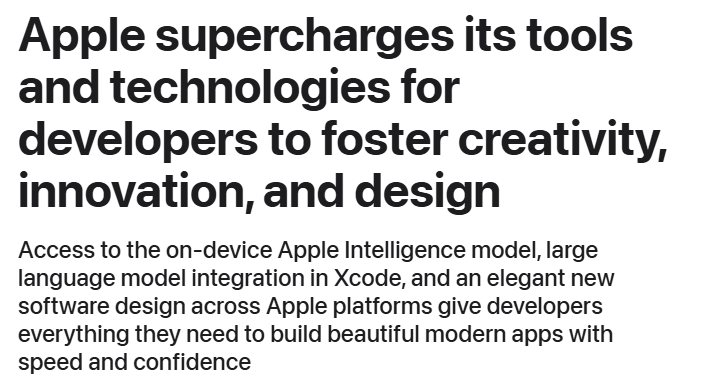
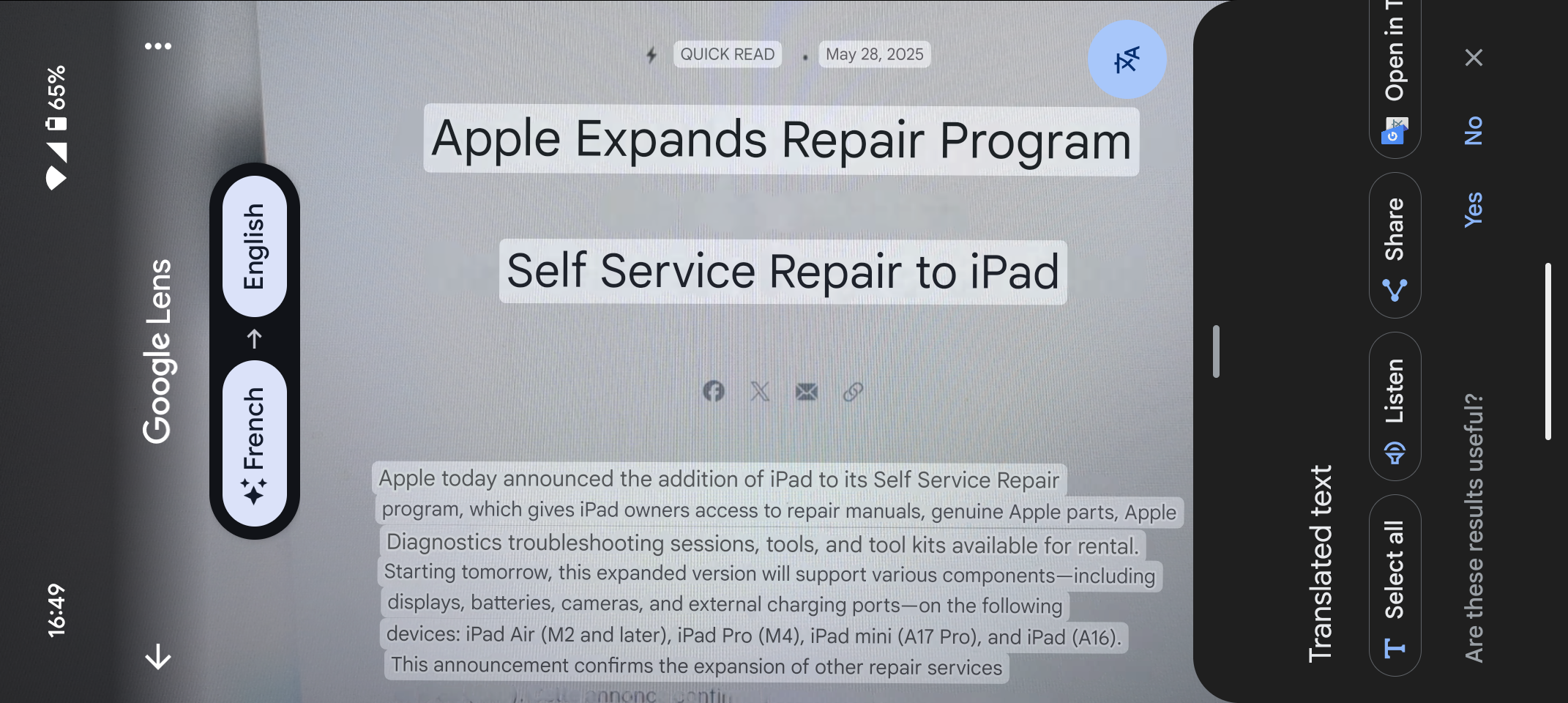
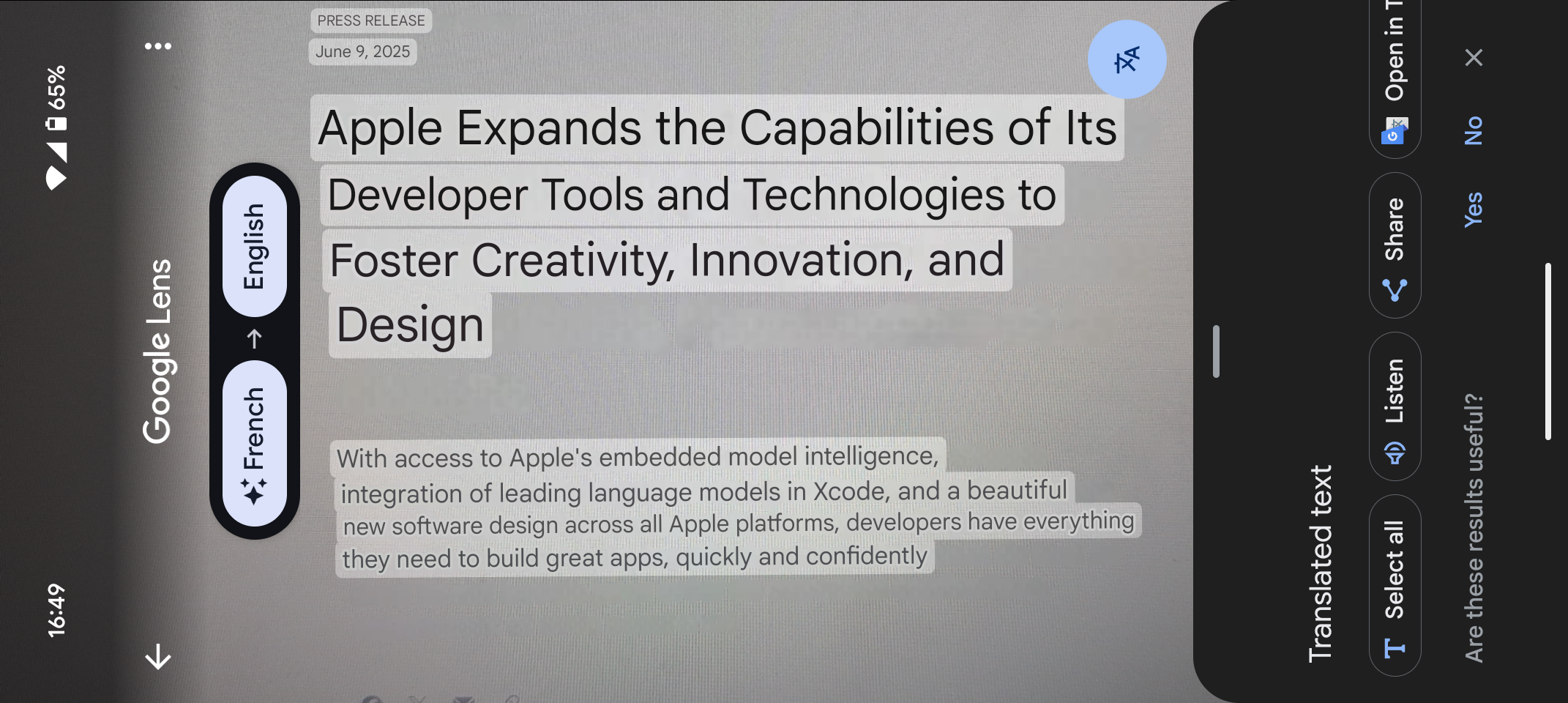
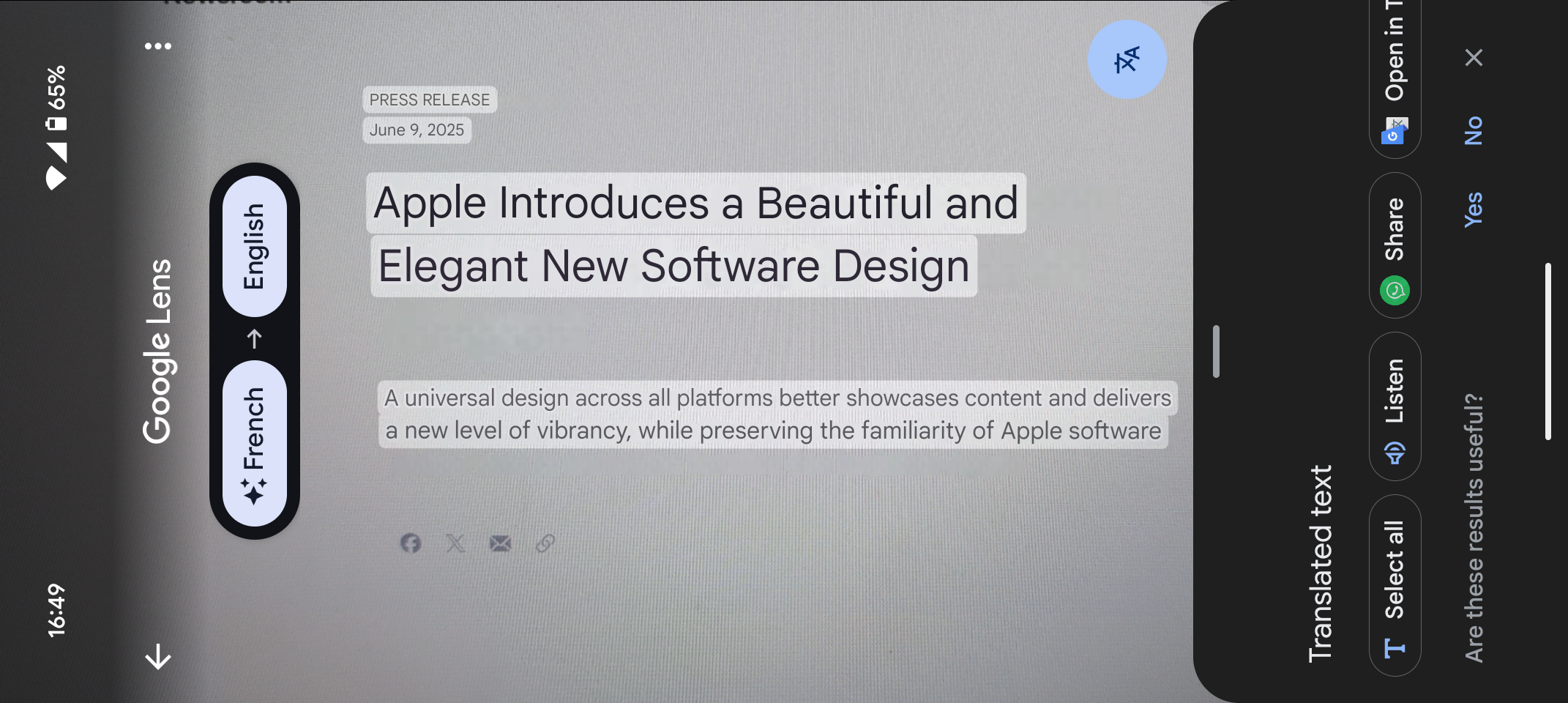
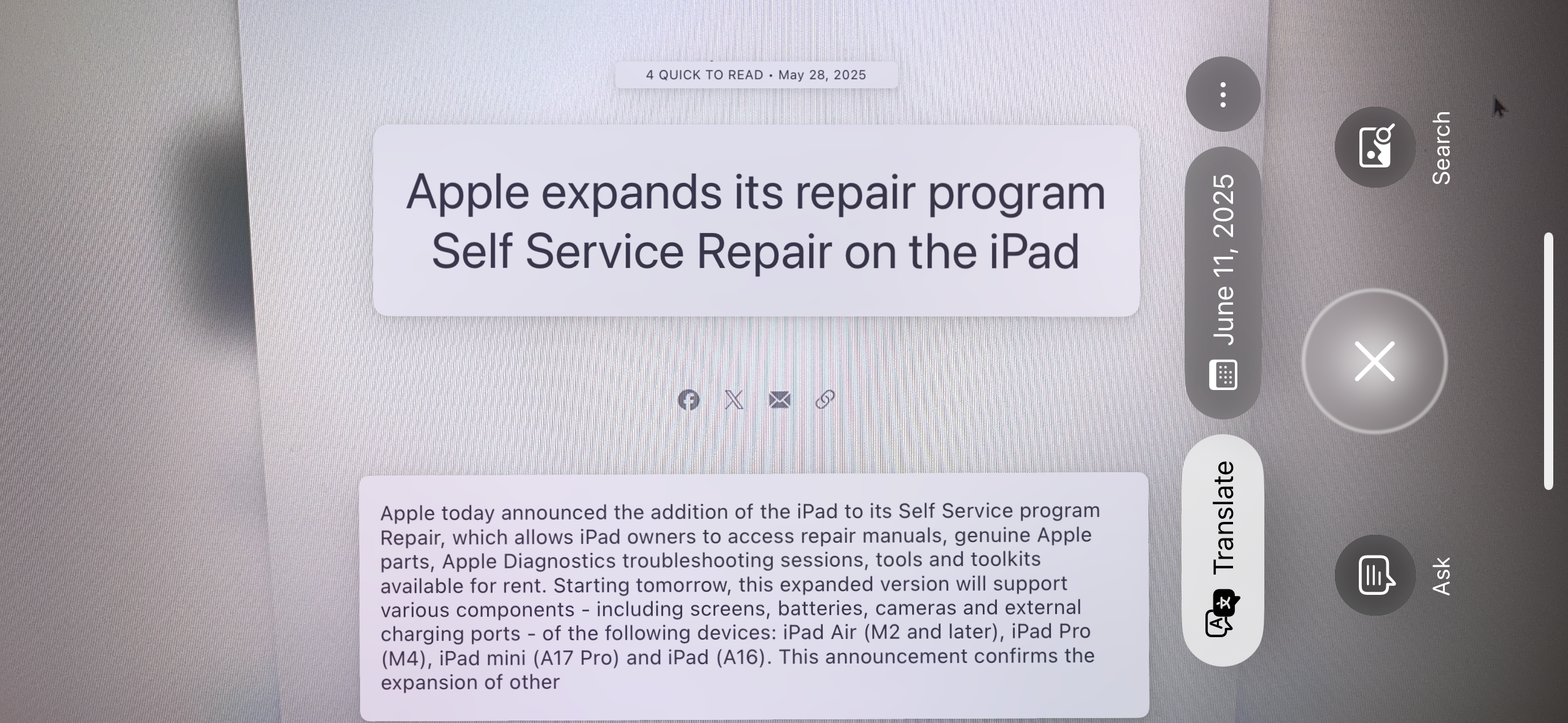
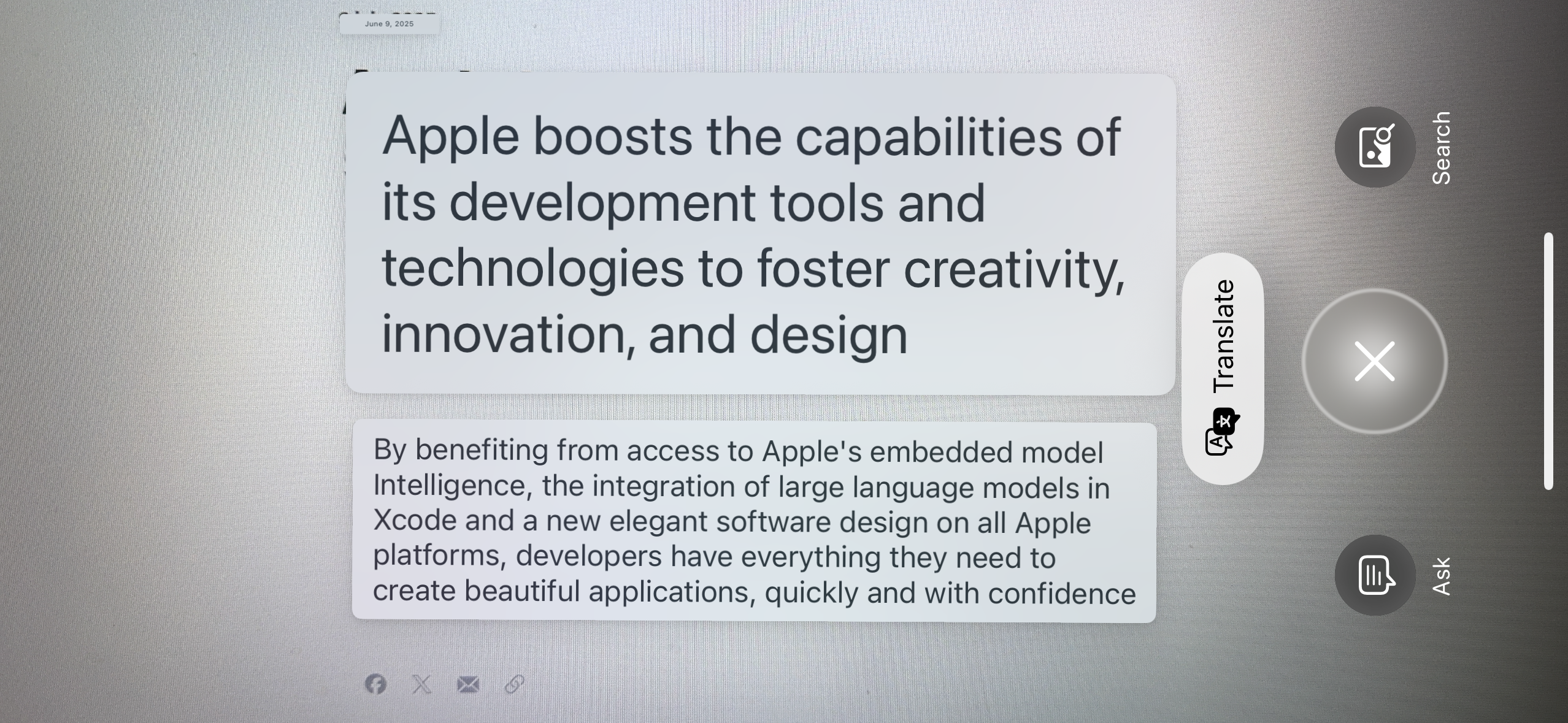
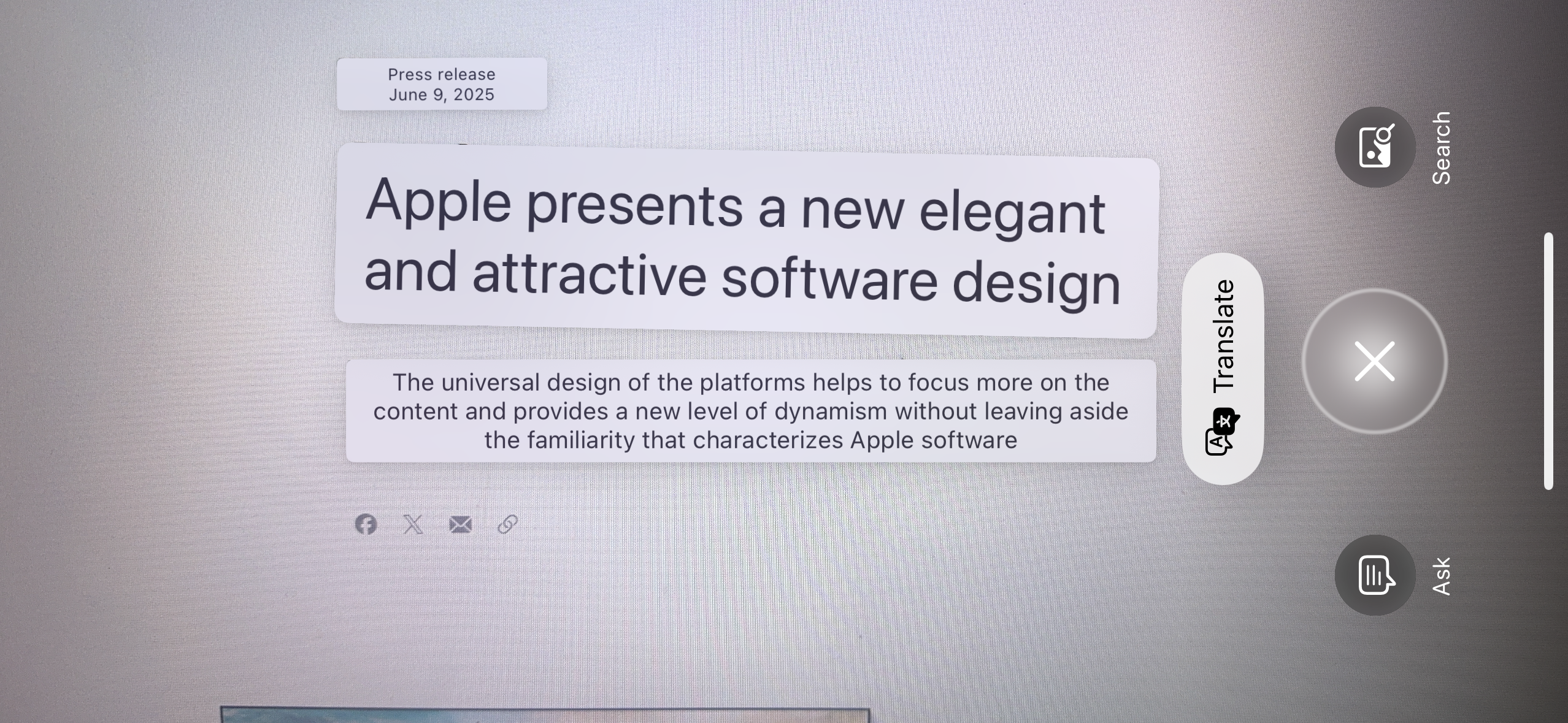
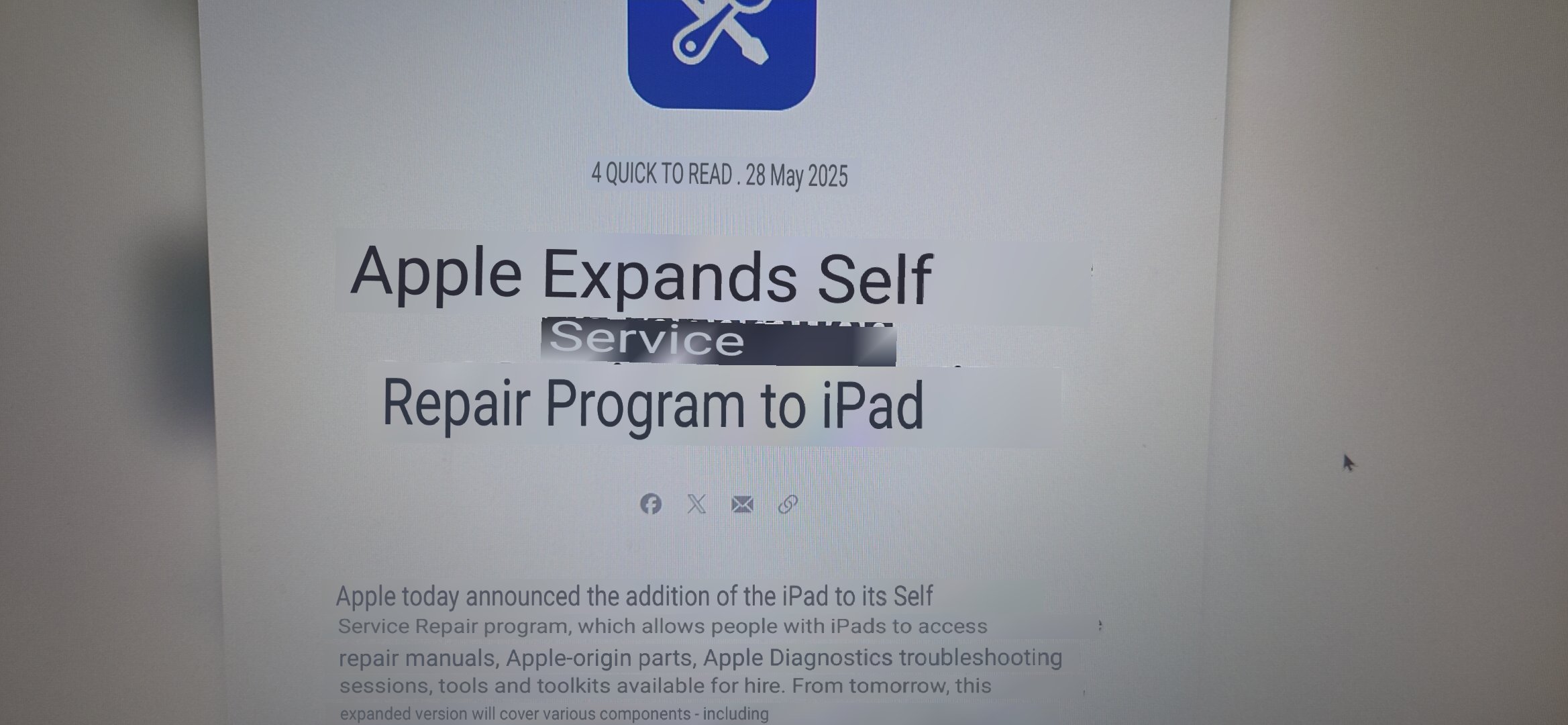
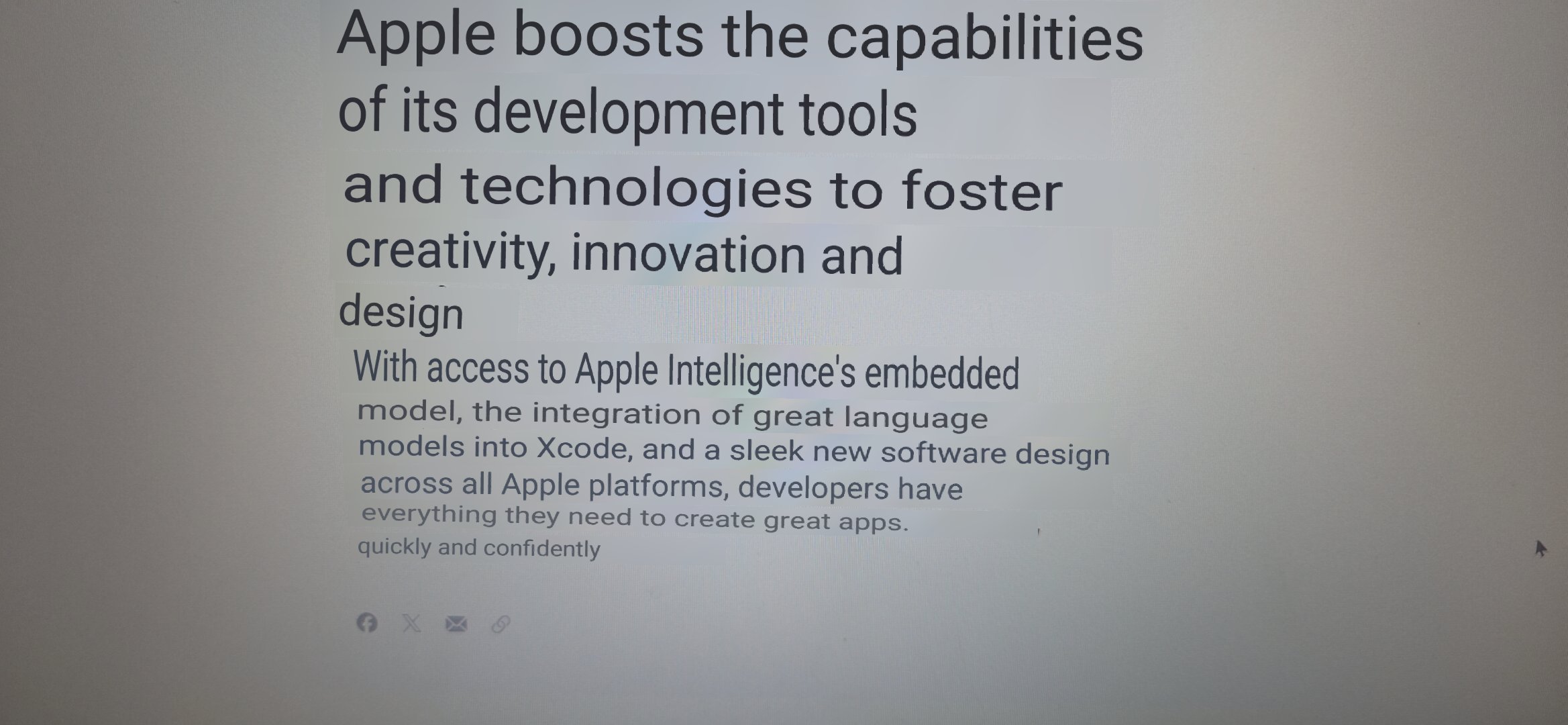
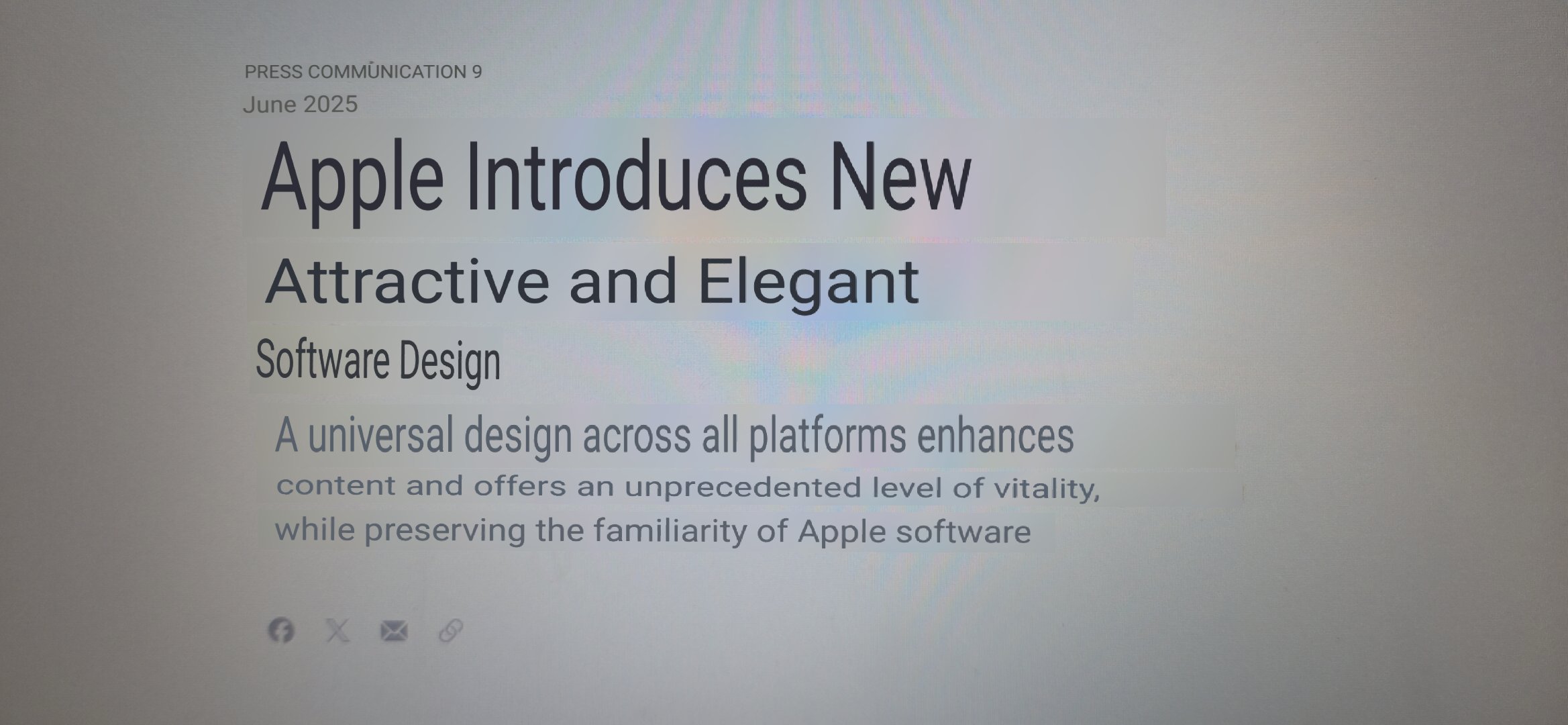
The first thing I notice when looking at these is how much nicer Google's translation looks than the other two. Apple's isn't bad, but it certainly could look better. Sadly Samsung's translation looks like an absolute mess, almost like a ransom note made with cut-out letters from newspapers.
Google probably has the cleanest translation of the three, and while it seems the French press releases skipped the idioms for obvious reasons, I can't spot any serious gaffes in the end result. Meanwhile, Apple's translation has some questionable syntax in places.
No sane person would write the sentence "by benefitting from access to Apple's embedded model intelligence", since both Samsung and Google opted for "with access to." You can still understand what's being said, but it's not ideal.
While all three phones did a good job of translating the text within a reasonable amount of time (and auto-detecting the language in question), I can't ignore the fact that Apple's sentence structure was a little out of whack, and that Samsung really needs to work on making its camera translations more legible.
Spanish

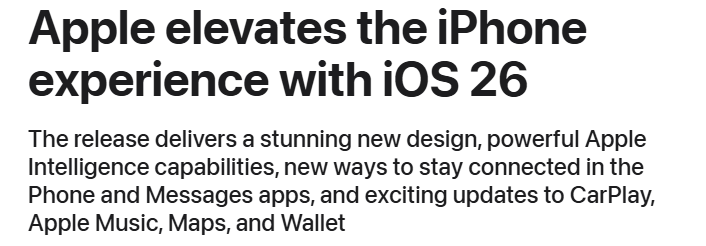

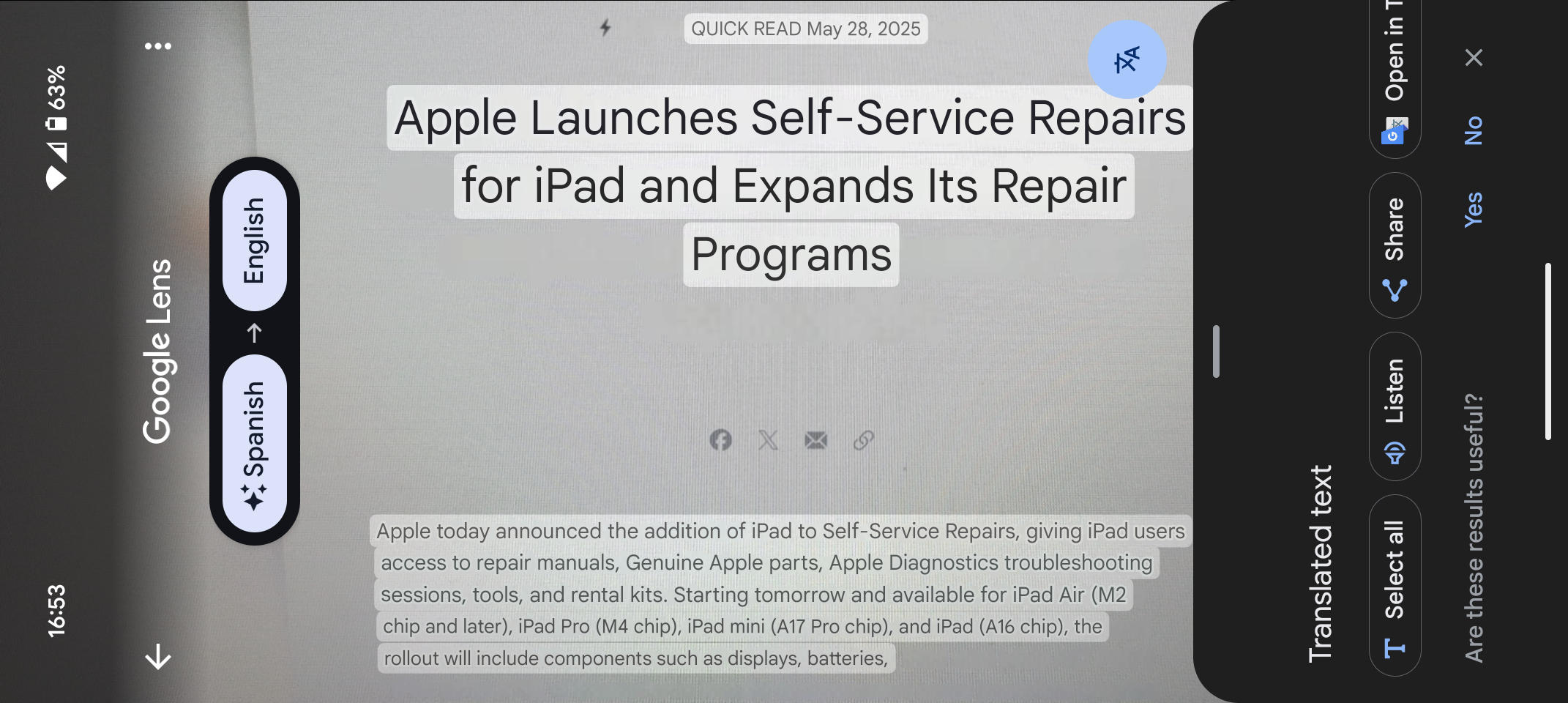
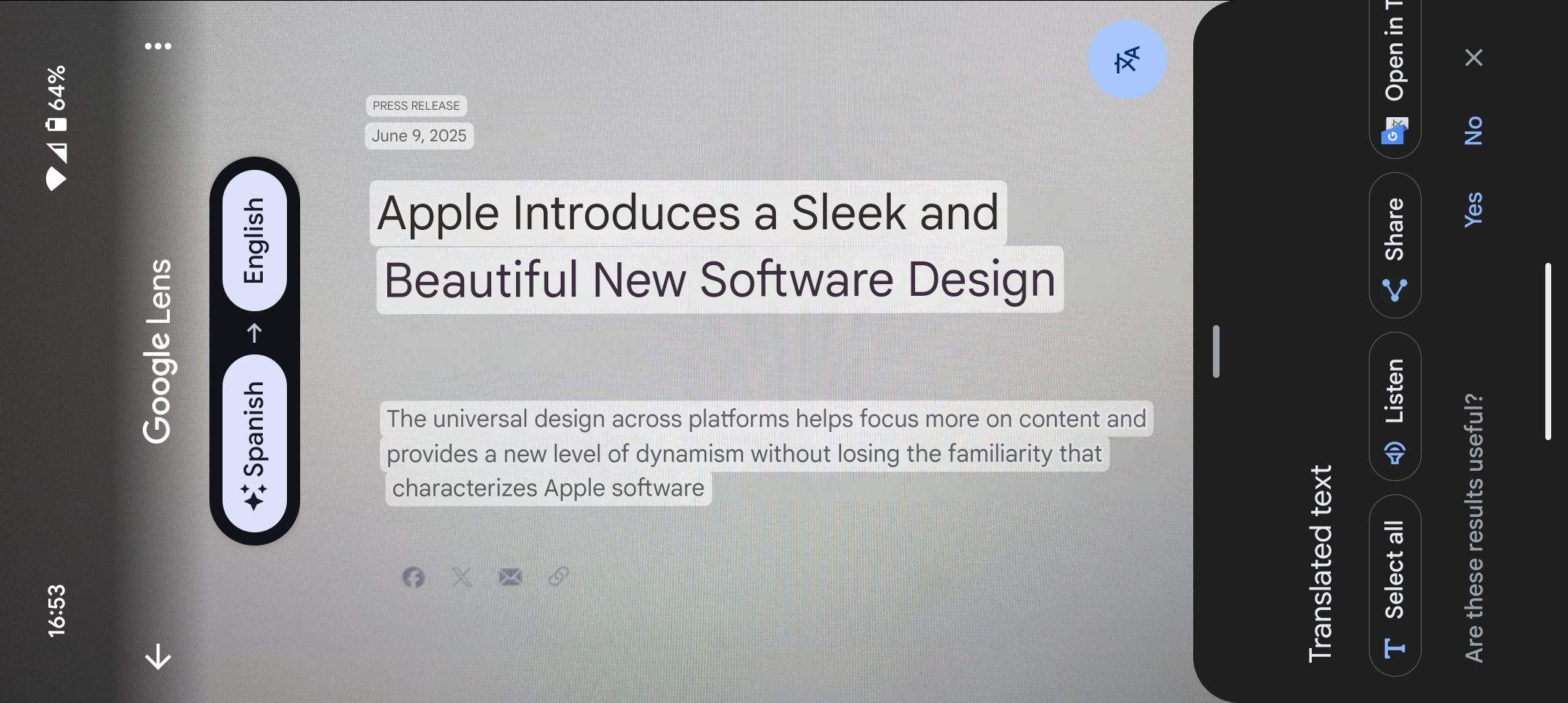
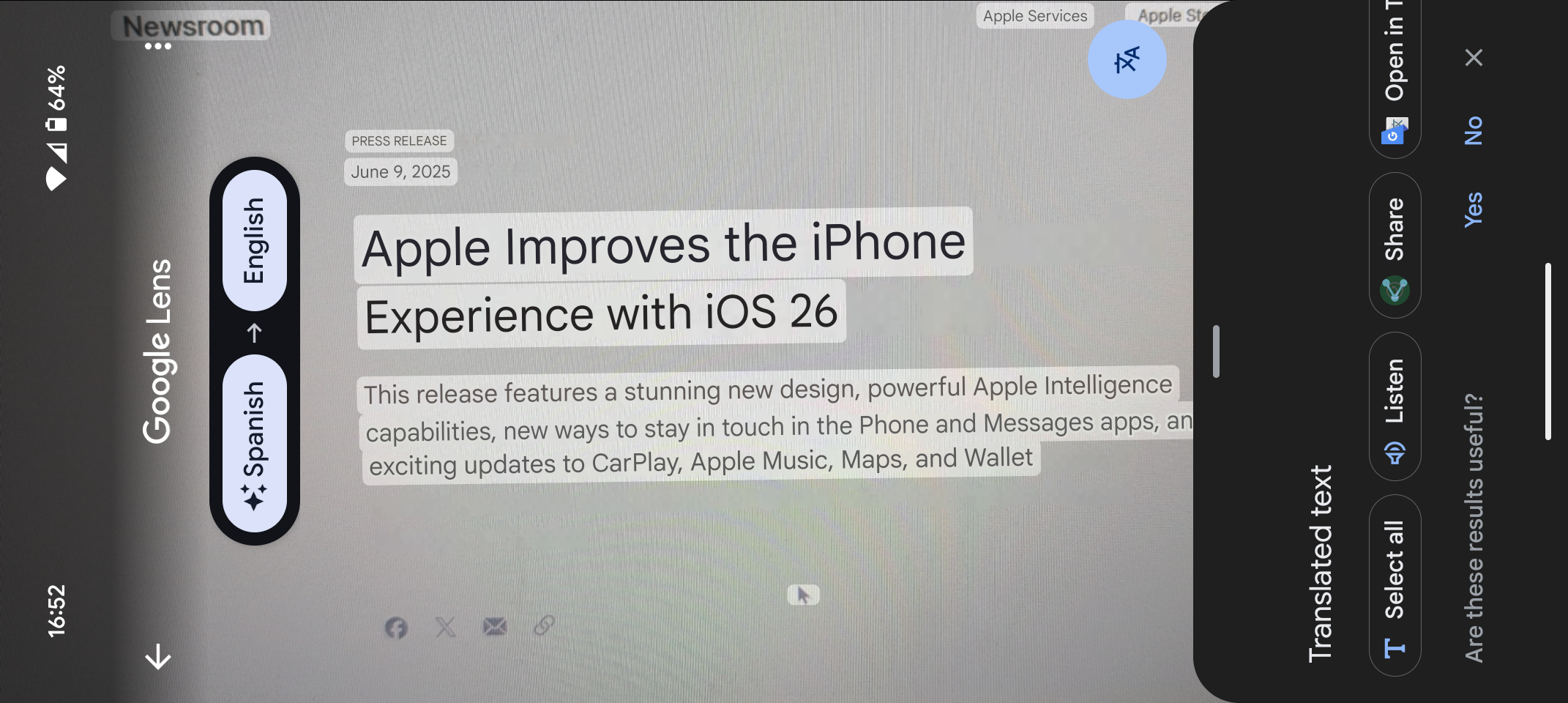
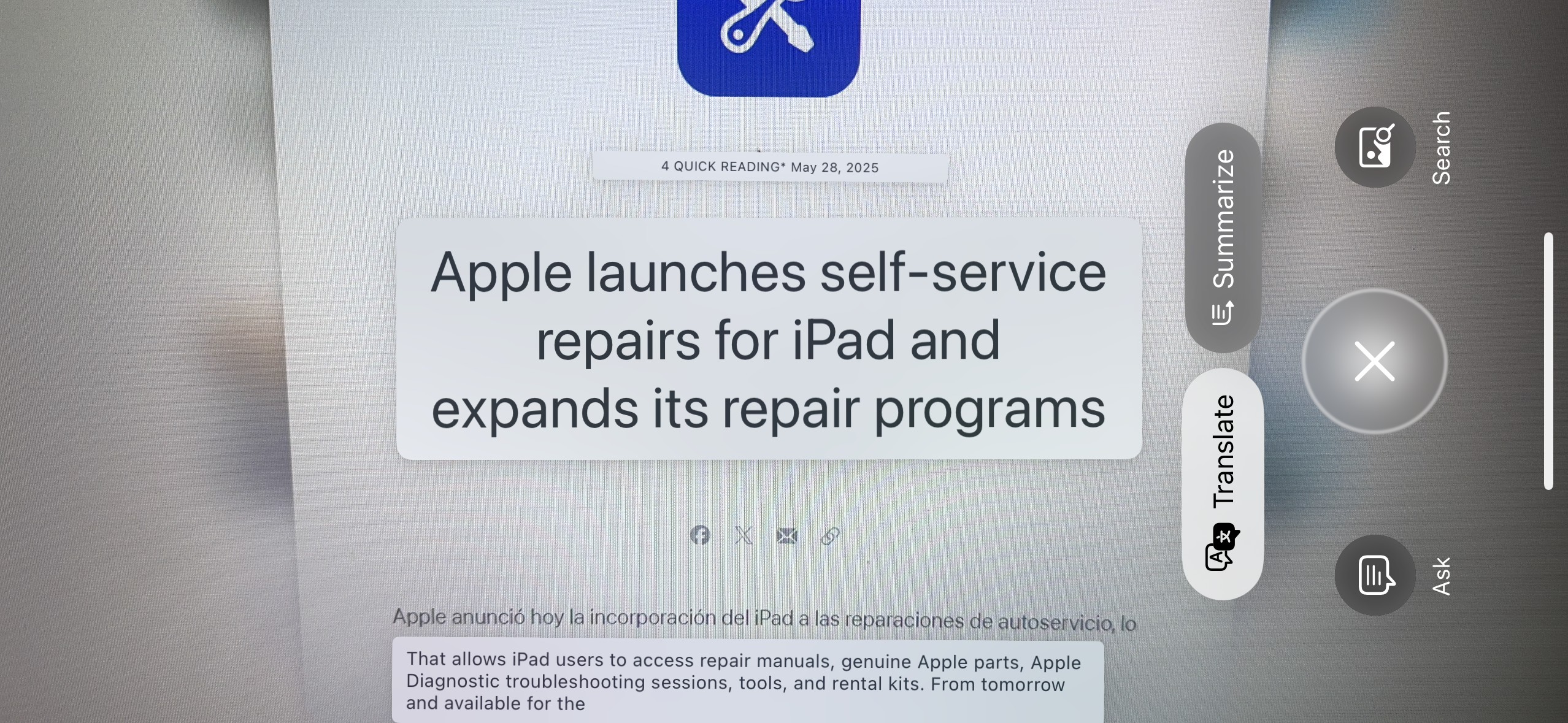
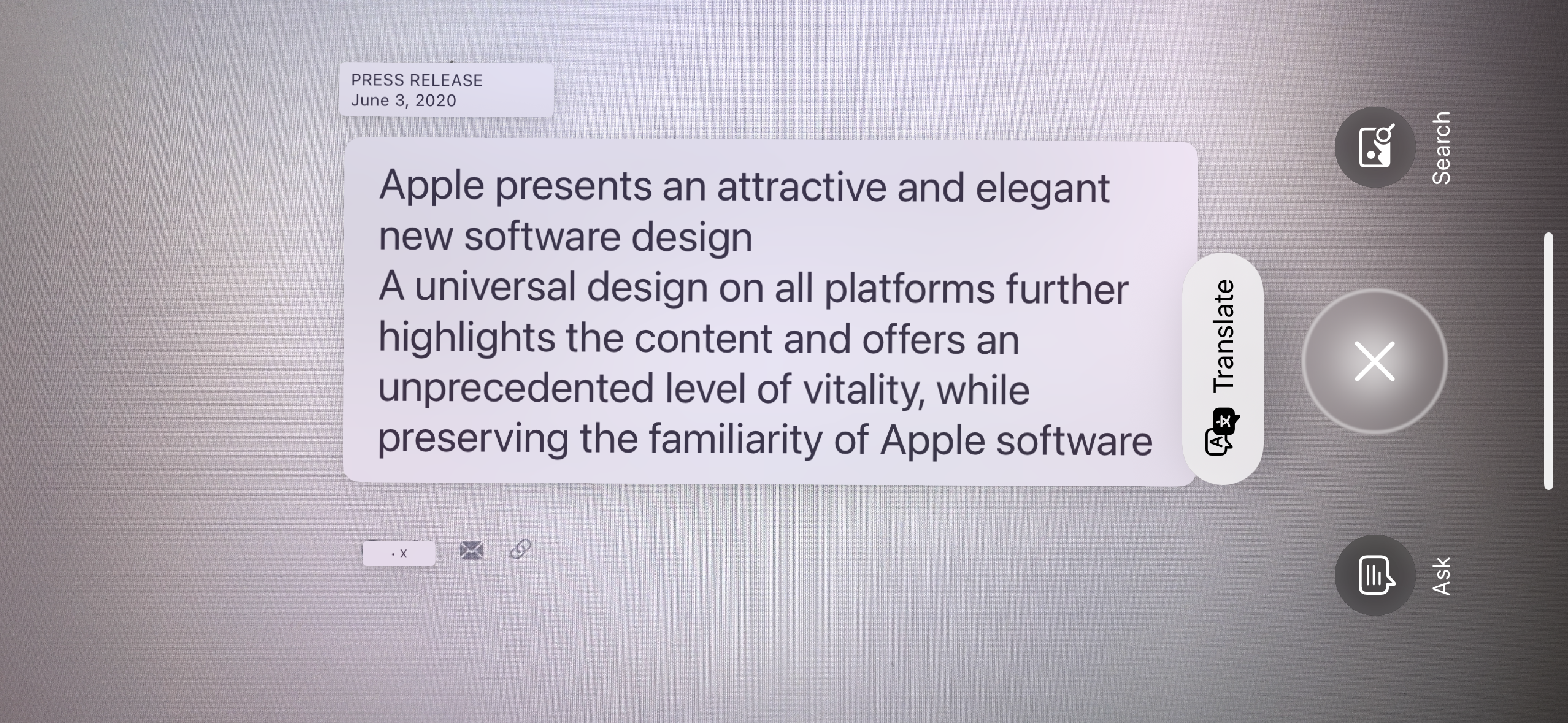
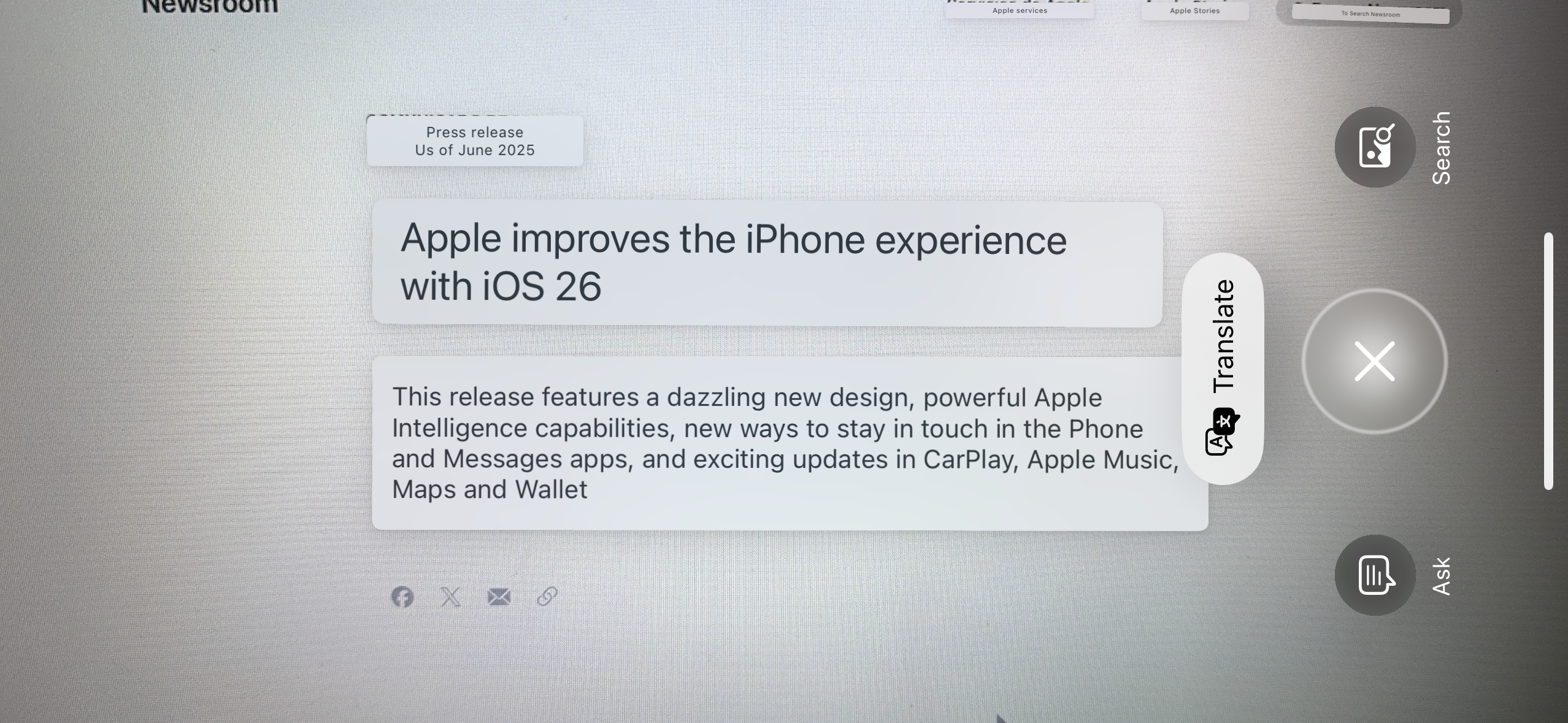
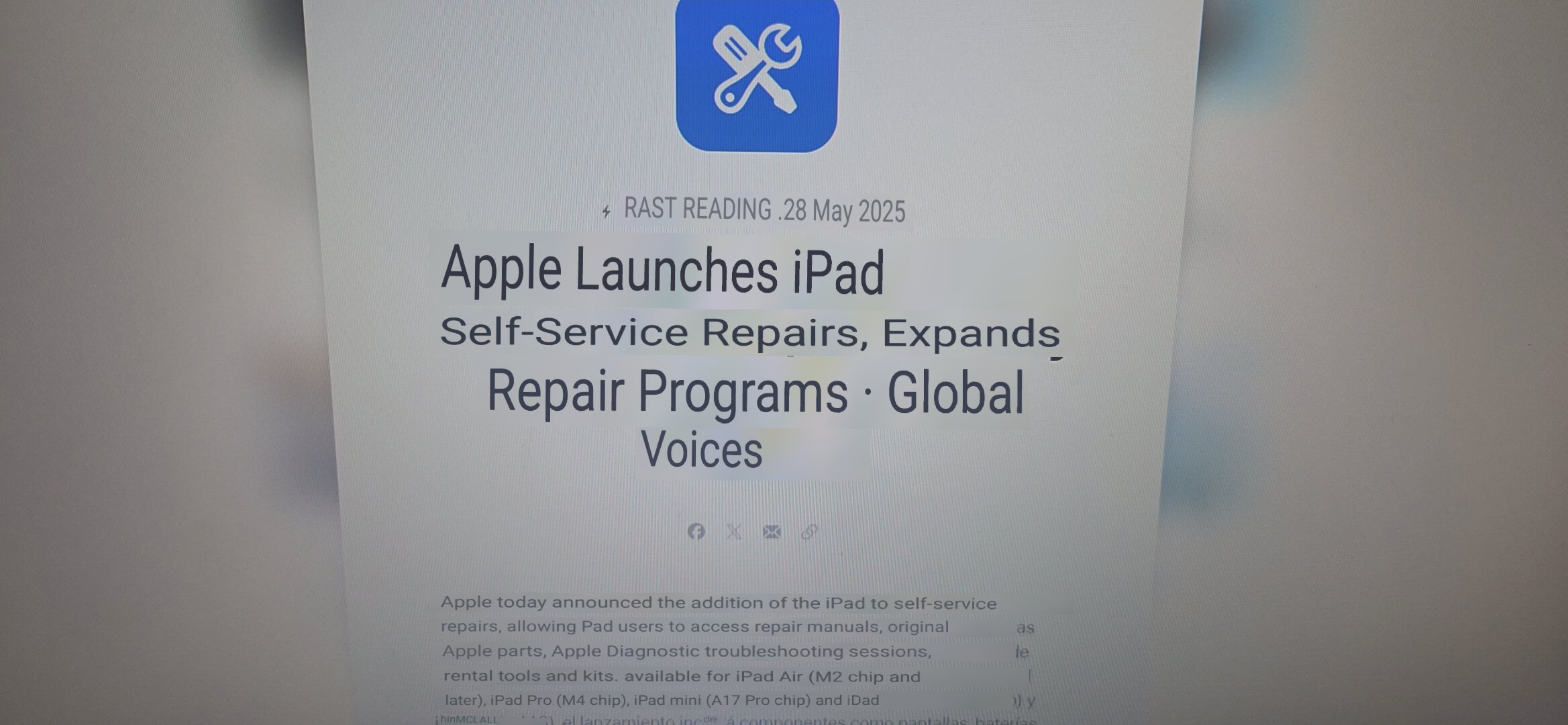
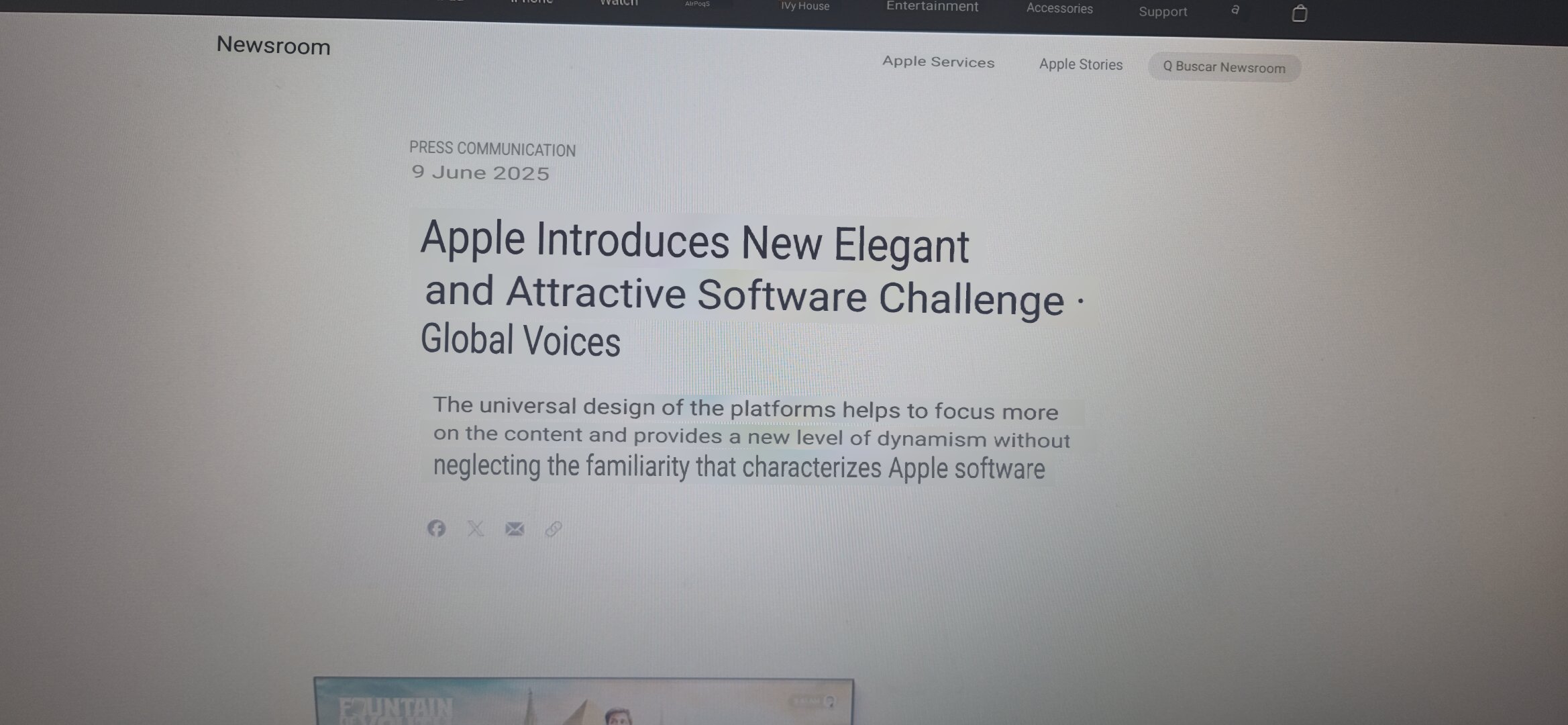
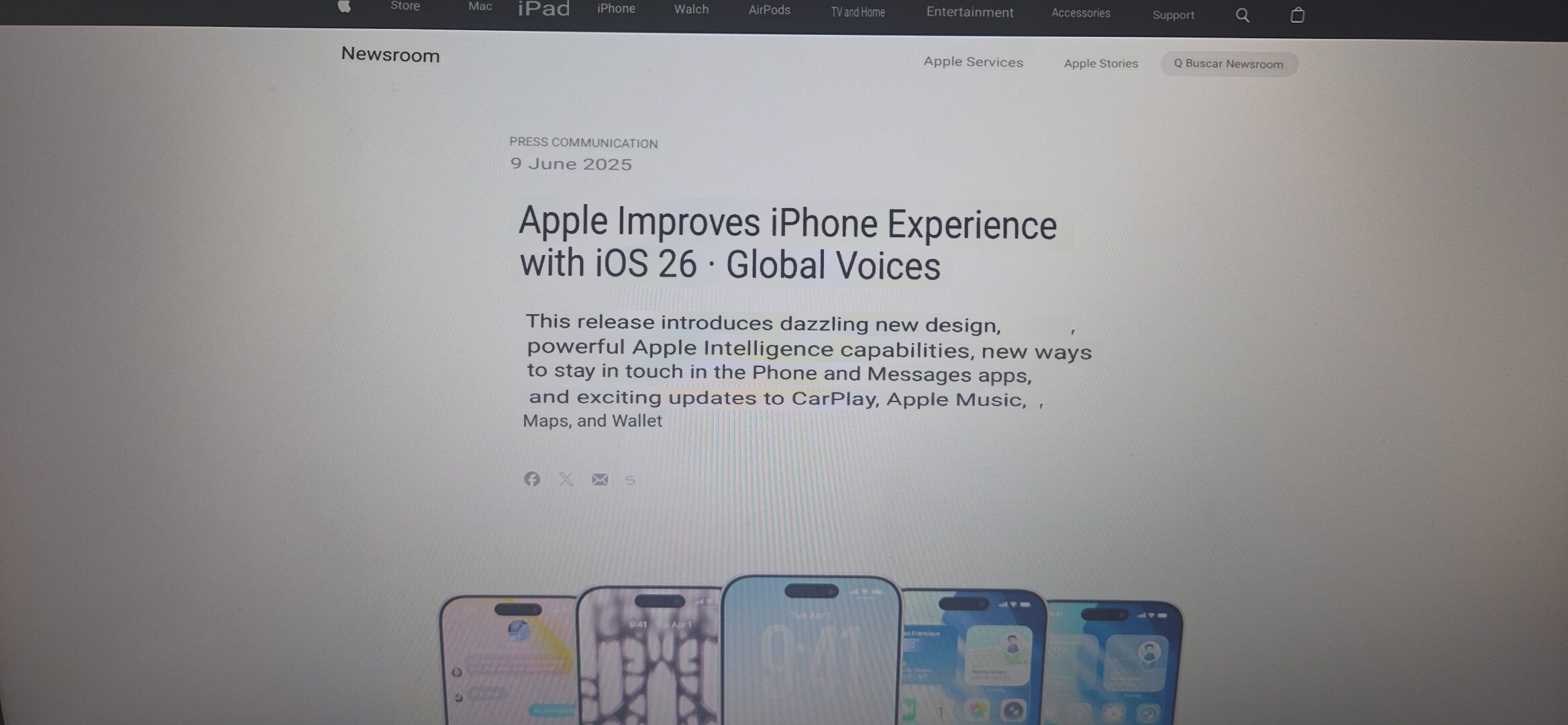
It's a similar kind of story when it comes to Spanish too, which isn't hugely surprising. All the text on all three platforms is legible, but there are some issues that certainly need to be addressed — especially with Samsung's whole layout.
Some of the syntax is a little bit weird, but that seems to be present across all three platforms, especially with phrasing like "Apple today announced" coming up twice. The actual translation itself is fairly good and consistent, and while not a direct like-for-like translation, it is easy to understand.
However, I did spot that Apple and Samsung struggled to pick up the correct text in places, Samsung dropped in "Global Voices" seemingly out of nowhere, and translated "Design" to "Challenge" at one point. Meanwhile, Apple apparently missed a whole sentence of text, though what it did translate was usually fairly readable.
Mandarin



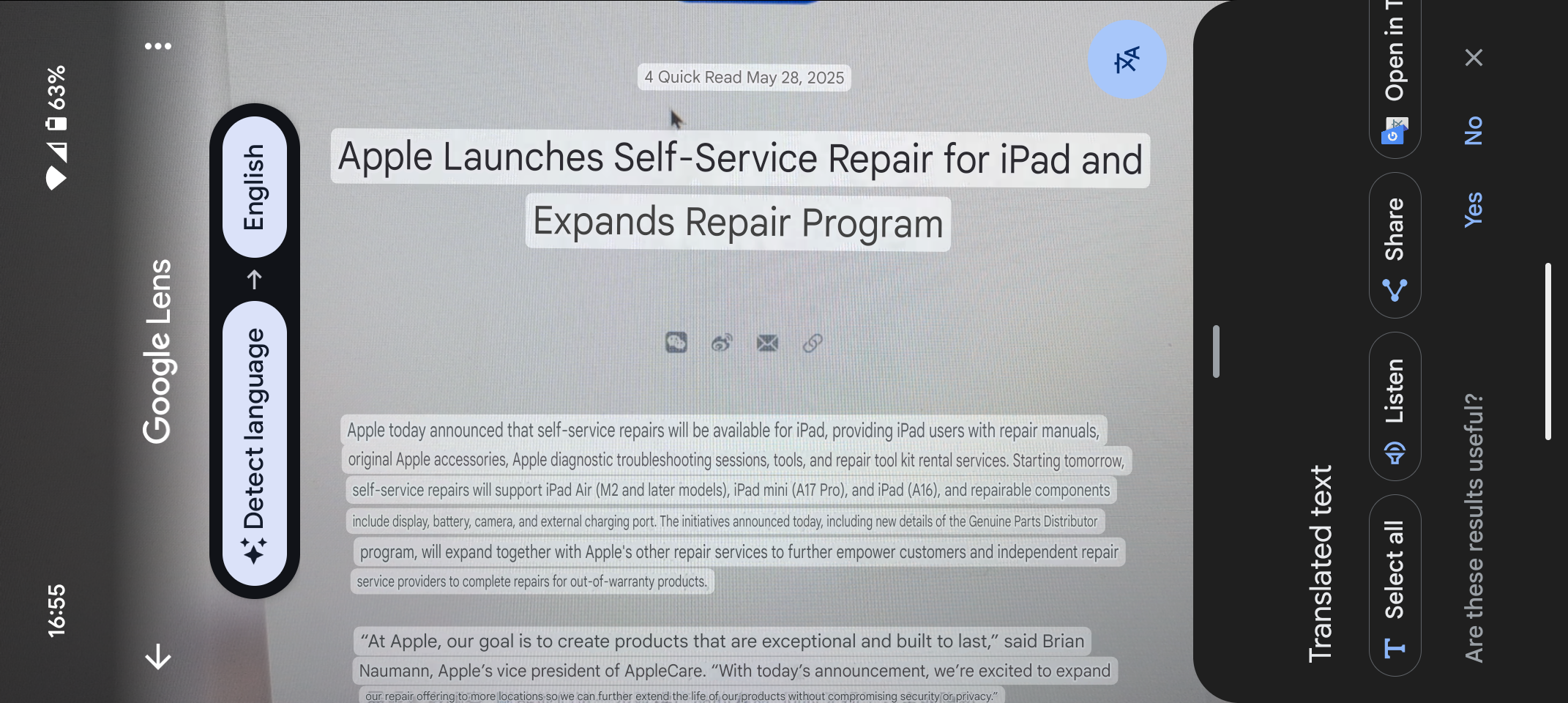
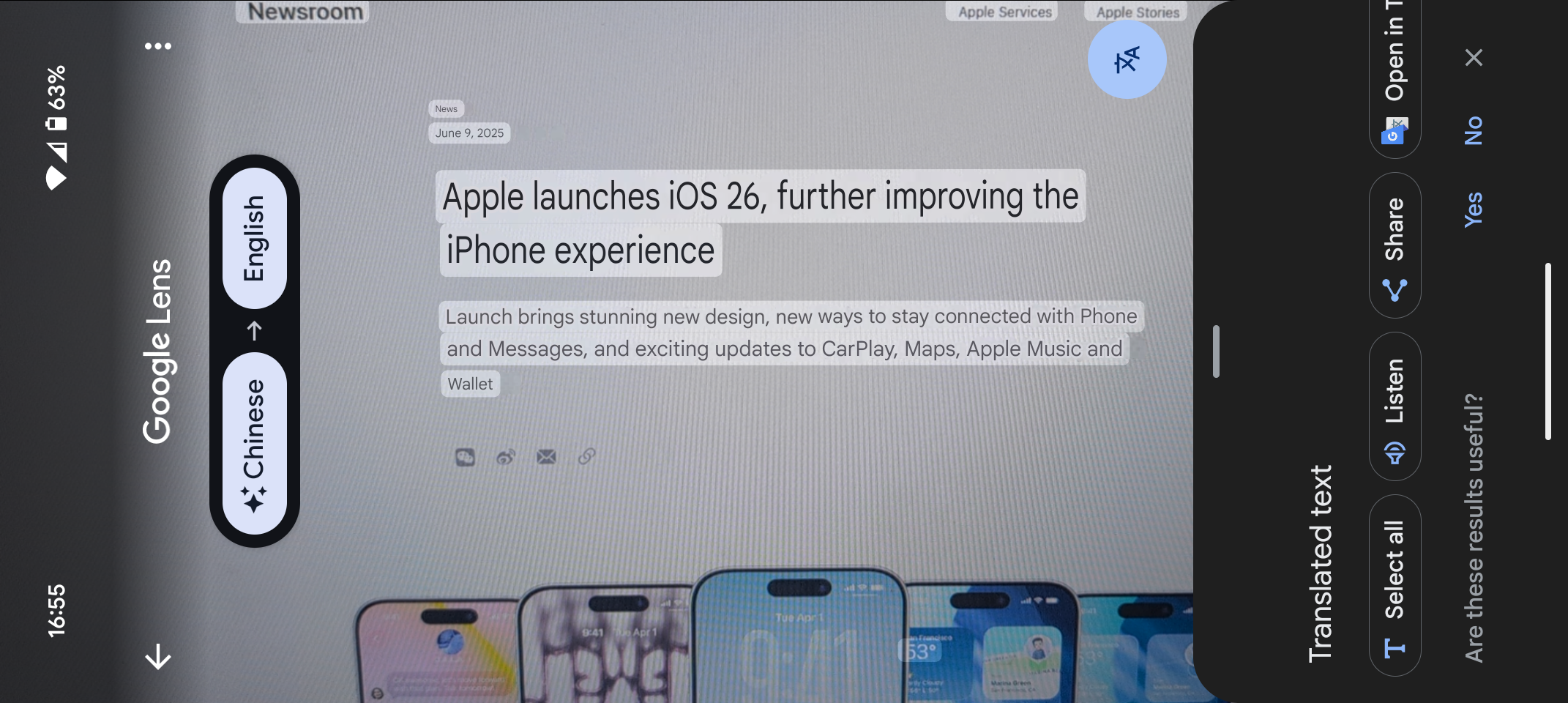
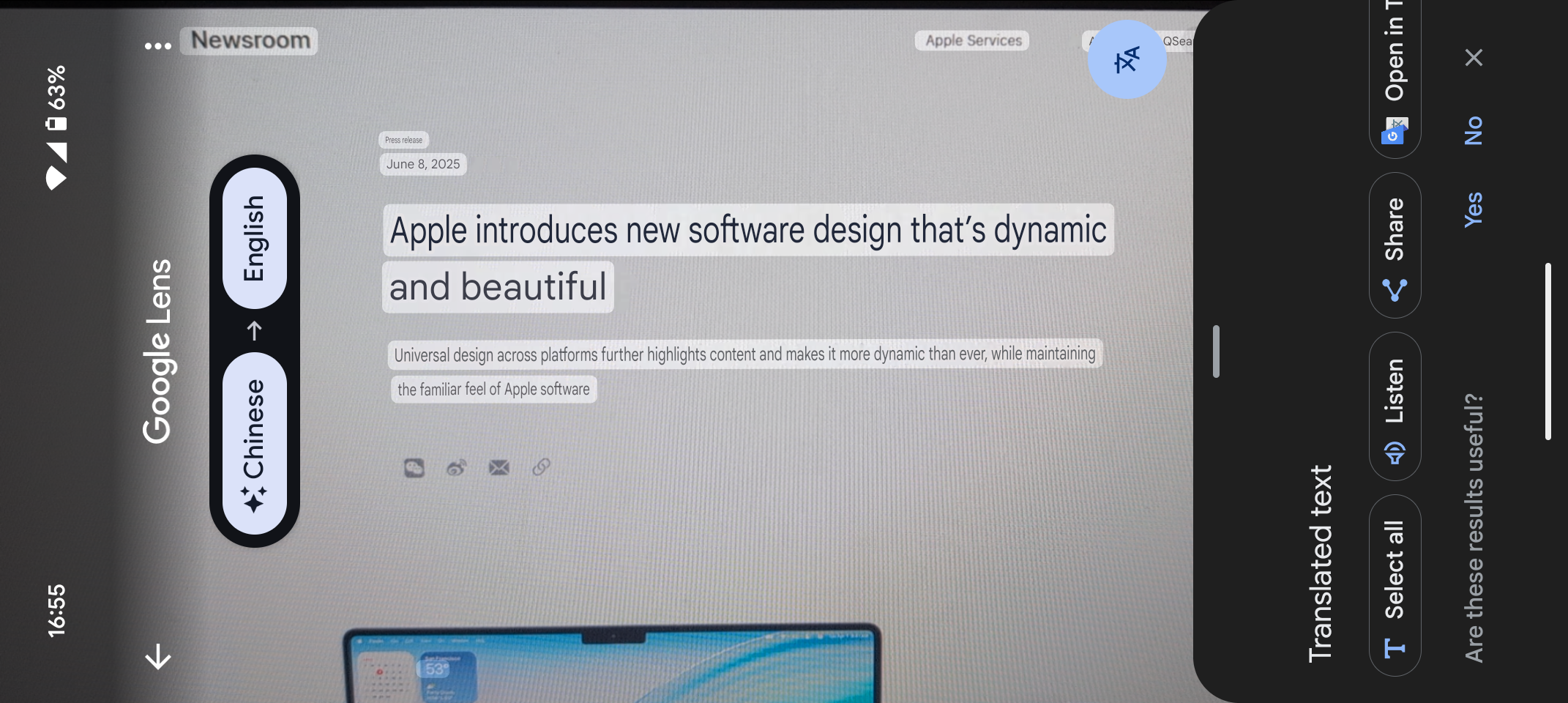
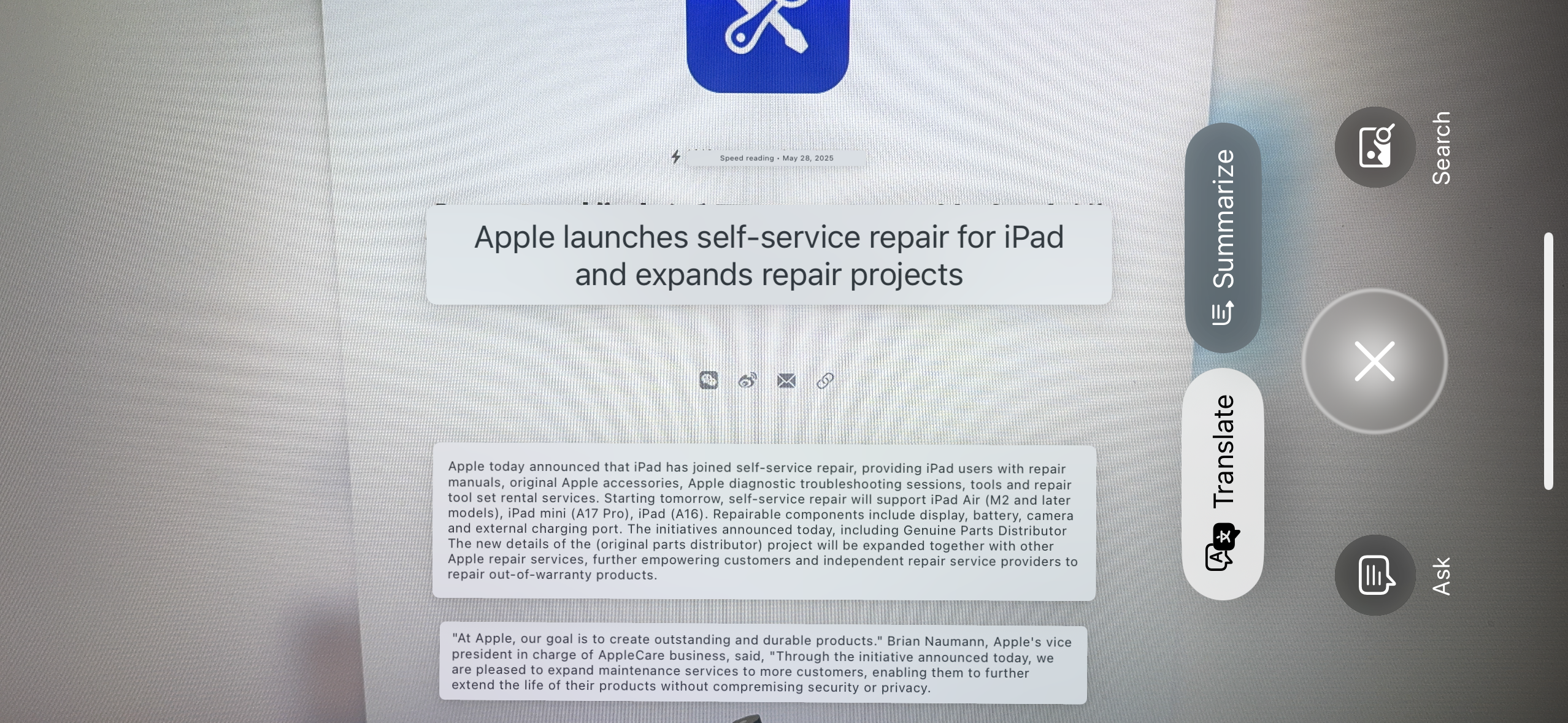
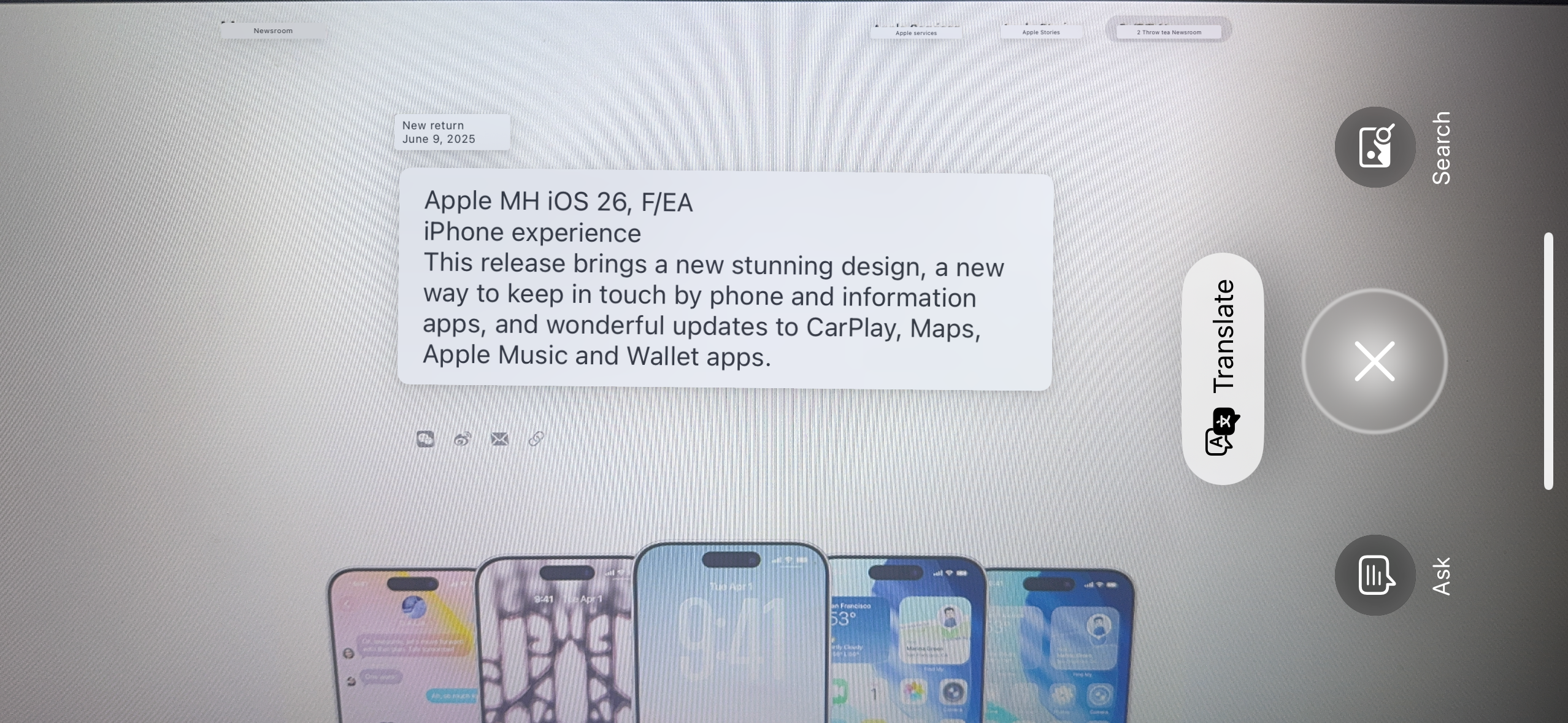
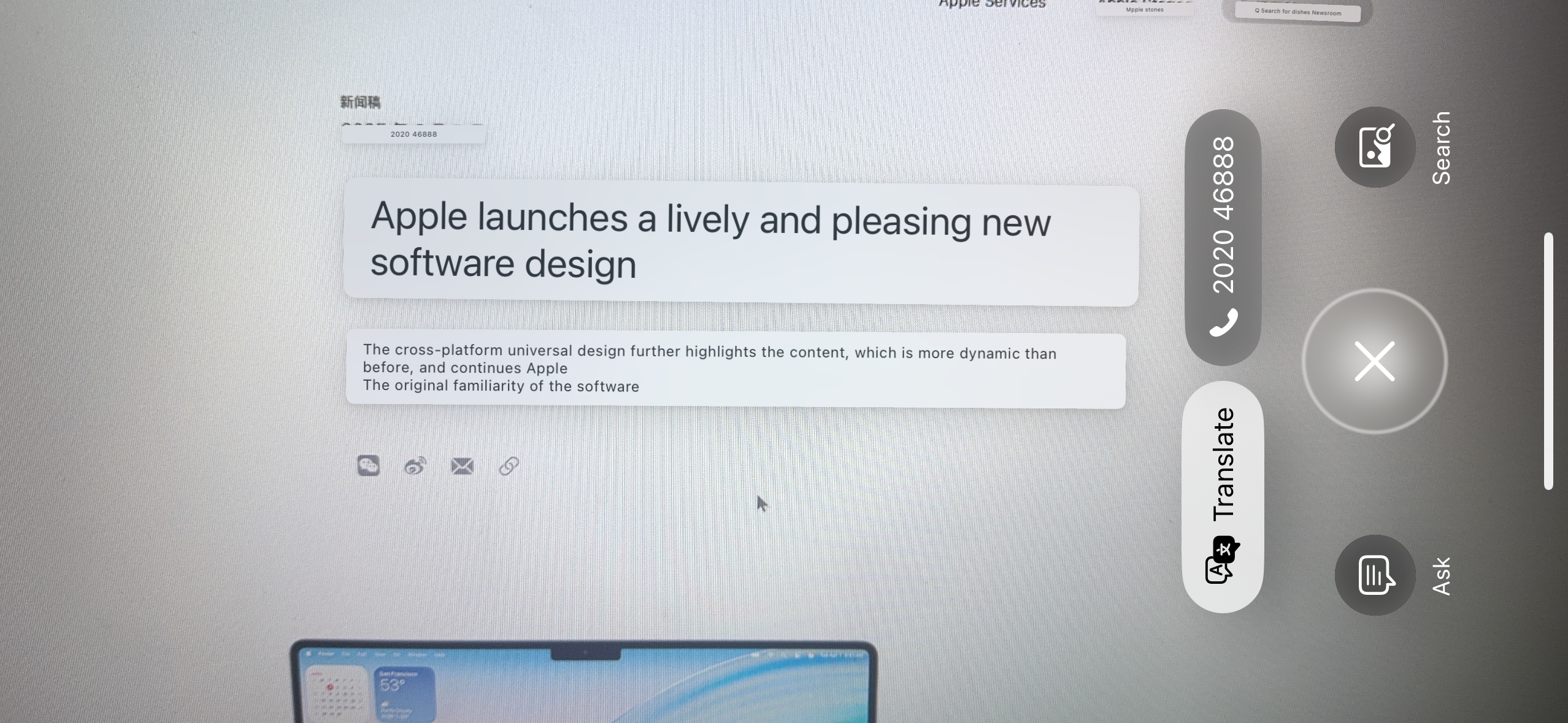
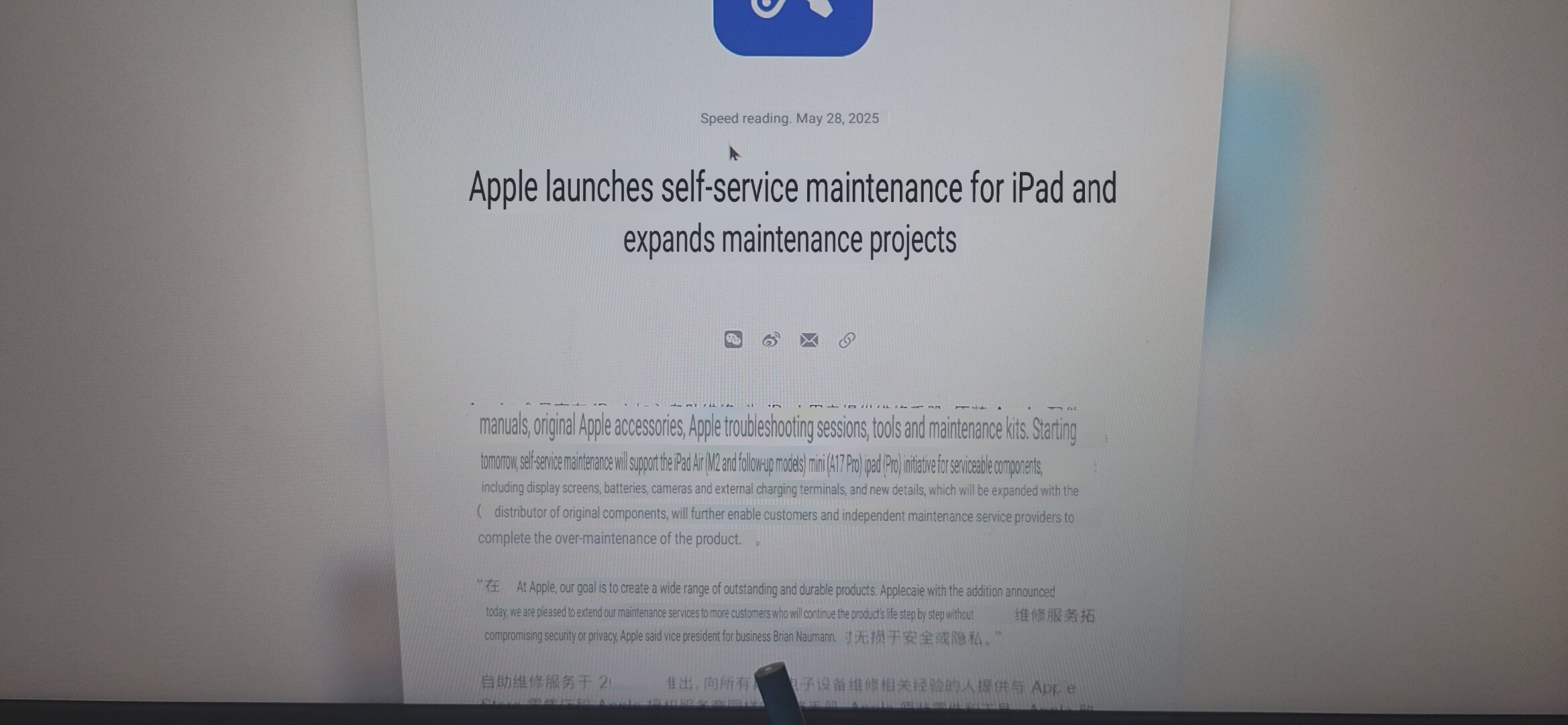
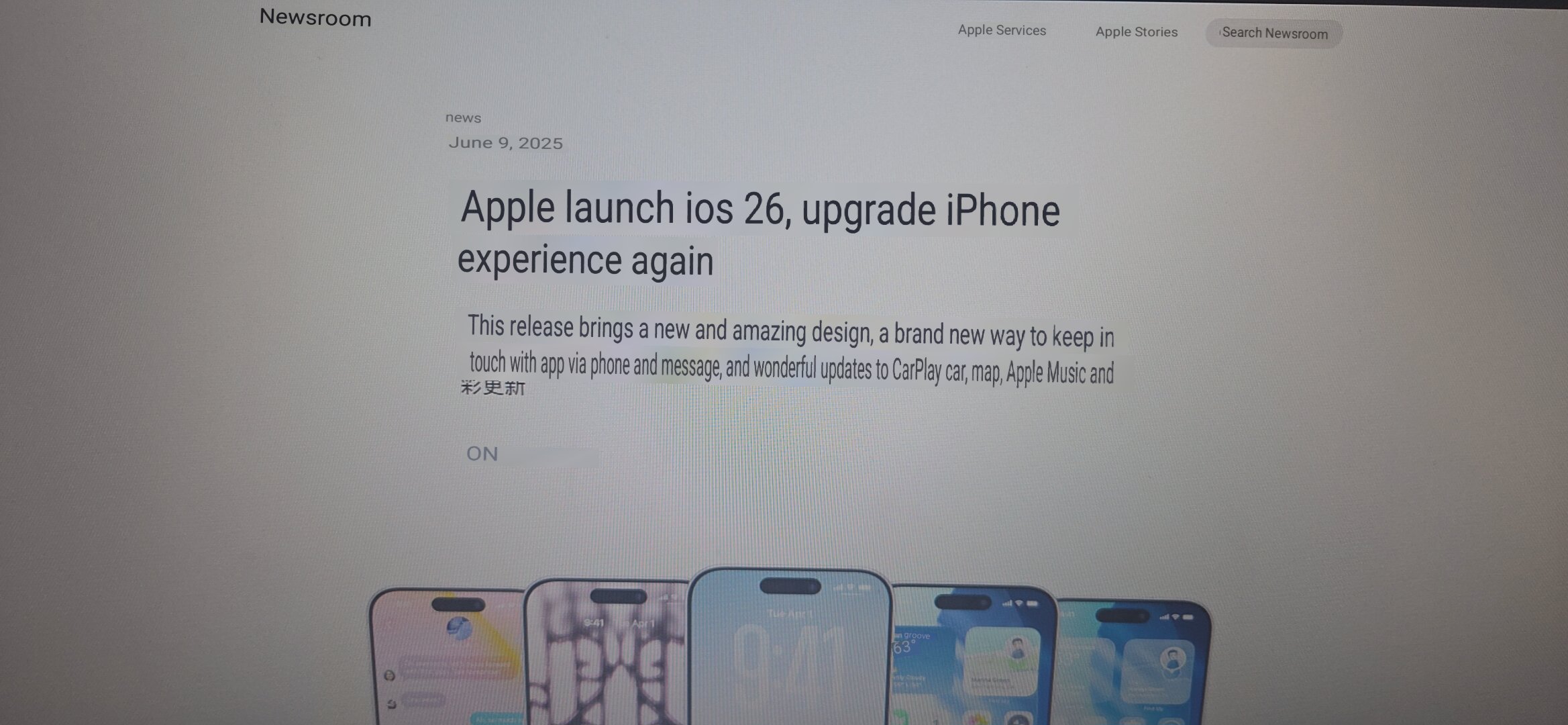
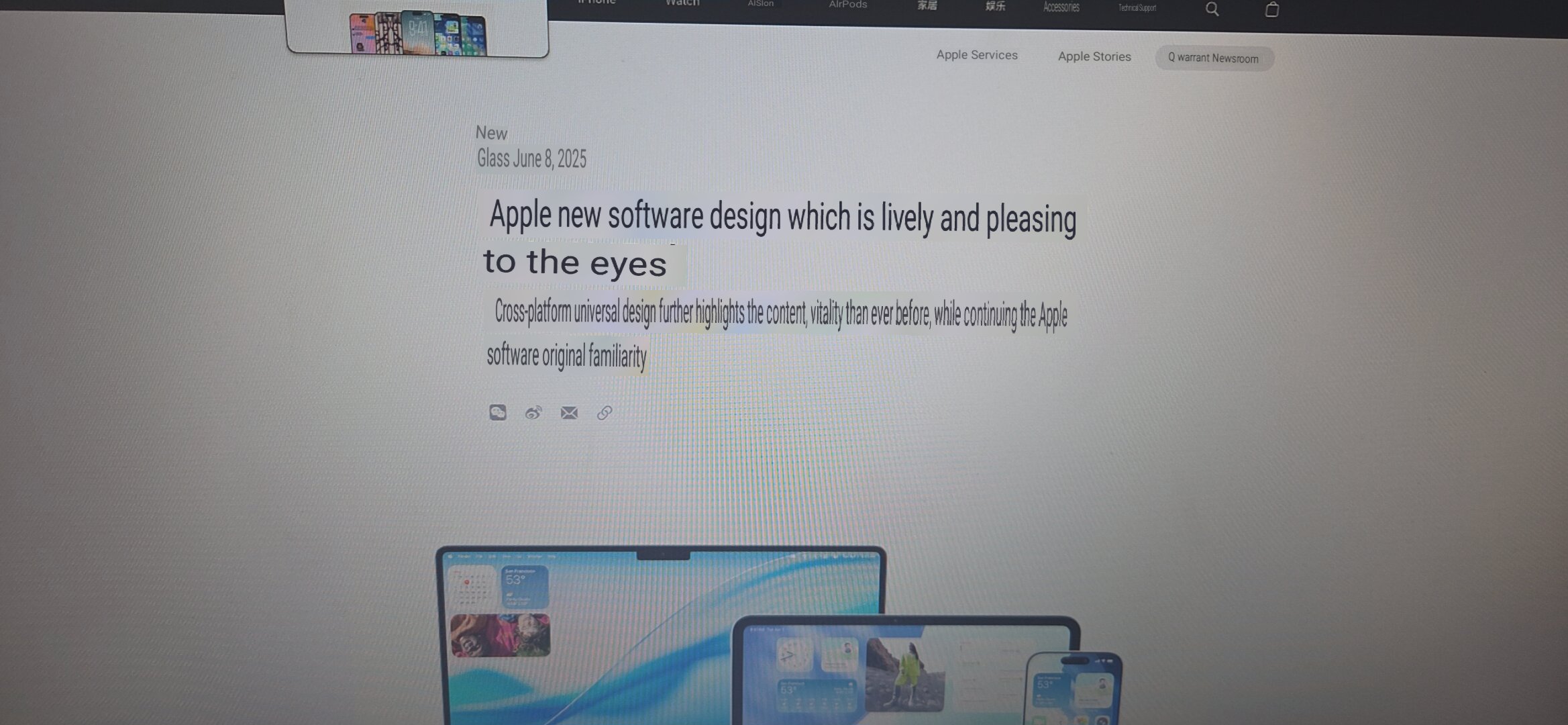
When it comes to Mandarin, it feels like Samsung really dropped the ball. Not only does it seem to struggle to pick up whole chunks of text, the formatting is totally illegible at times. Though what it does manage to translate seems to be equal to that of the English version, the camera itself seems to be struggling with large segments of Chinese script on the screen.
Apple also had some problems with the iOS 26 press release, revealing a bunch of random characters in place of whole words in the headline. It also seemed to skip half a sentence when discussing Apple's new universal Liquid Glass design. Interestingly, Google missed a couple of words here too, with the sentence starting with "launch brings" instead of "this launch."
There's a lot more variation in the Mandarin translations on all three devices, and the fact that Apple and Samsung seem to be missing whole chunks of text doesn't do the final result any favors. Still, what is actually translated is understandable, even if some of the word choices seem a little bizarre — like the repeated uses of the word "beautiful."
Speech translation
All three phones offer a bunch of different spoken translation modes, with support for individual lines and conversations where two different languages are being spoken. Unfortunately, as best I can tell, the built-in chatbots aren't able to do this for you.
Instead, you have to use the official translation apps, and do everything manually. Needless to say the experiences are rather different depending on which app you choose — though they all utilize AI to varying degrees.
Pixels utilize Google Translate, which is available on iPhone and Samsung Galaxy Phones as well. However Apple Intelligence has its own translation app, while Galaxy AI has a dedicated "Interpreter Mode" specifically for translating conversations. And there's a clear quality difference between the two.
Apple's translation app was by far the worst of the three, not because of the quality of the translation, but because of how little it was actually able to pick up. Any pause in the flow of speech, no matter how brief, could cause it to stop listening and translate what it heard — even if the speaker is in the middle of a sentence.
Overall, it felt like Samsung's Interpreter Mode was at an advantage because it was capable of listening in without you telling it to stop. The standard "listening" mode did this the best, though the two-way conversation mode typically needed me to tell the phone when to start listening in for the second language.
It could detect when the language changed by itself, but not right away. So you'd miss at least half a sentence before the phone registered that someone was talking.
Google Translate was somewhere in the middle, usually (but not always) listening in for longer periods of time than Apple Translate. But it would eventually stop when it thought there was a break in the speech. Which could still be very frustrating at times — and it should take a leaf out of Samsung's book.
French
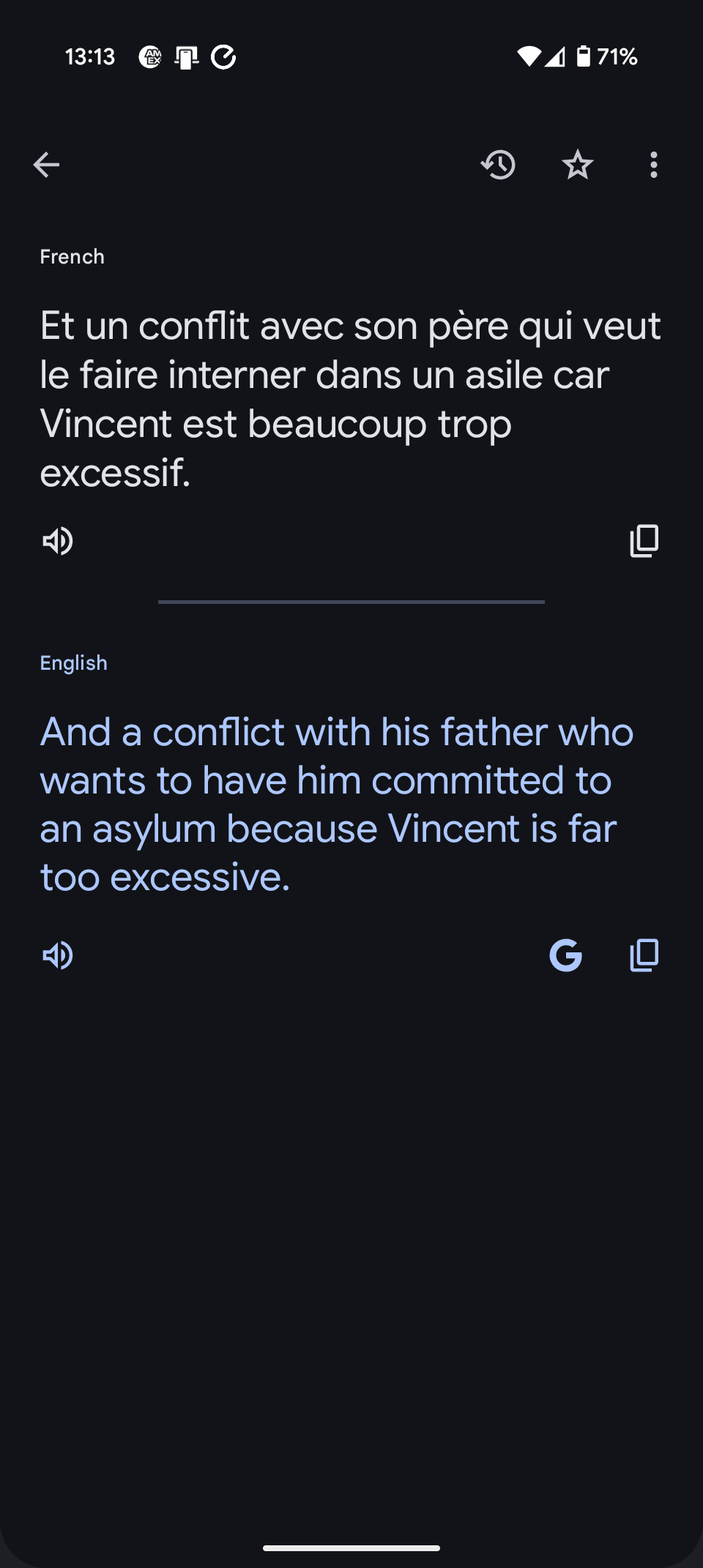
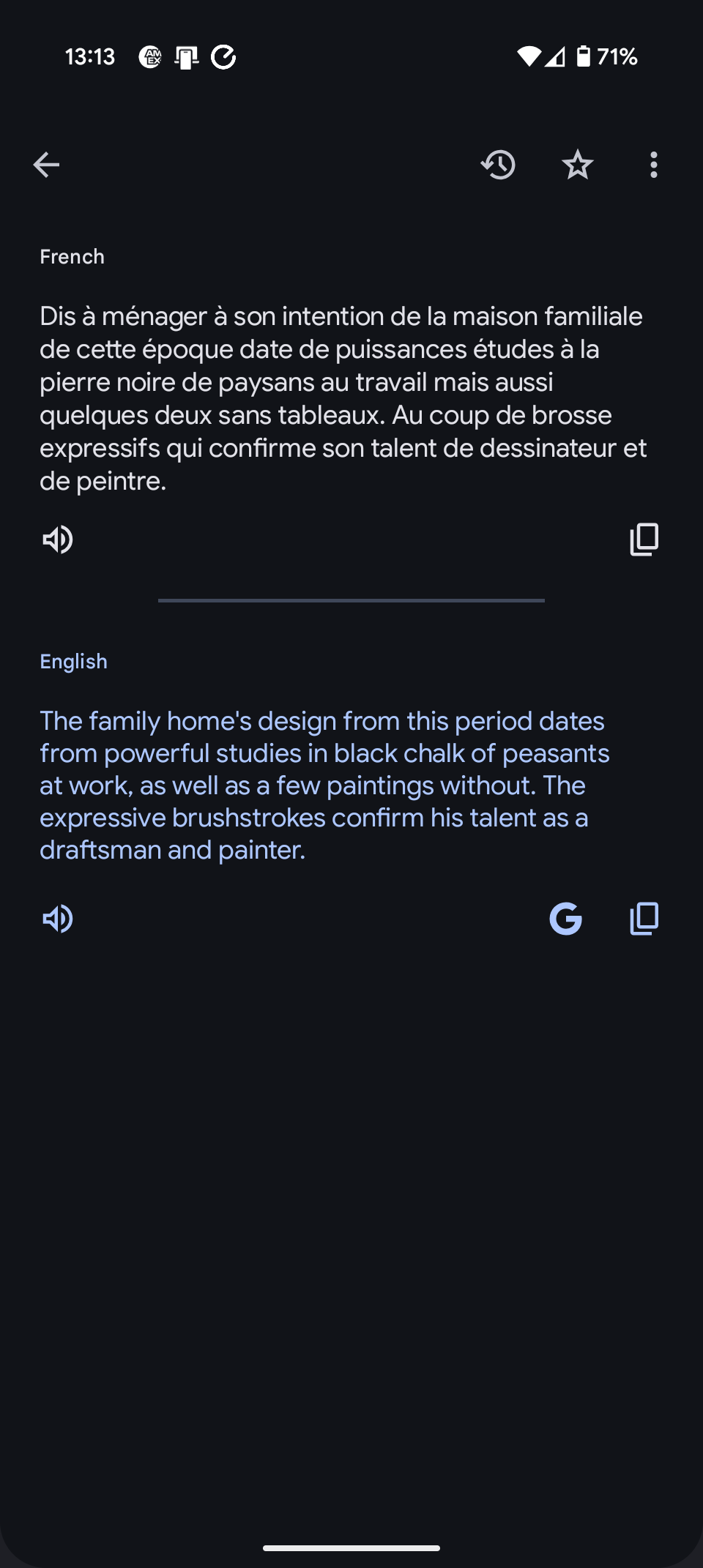
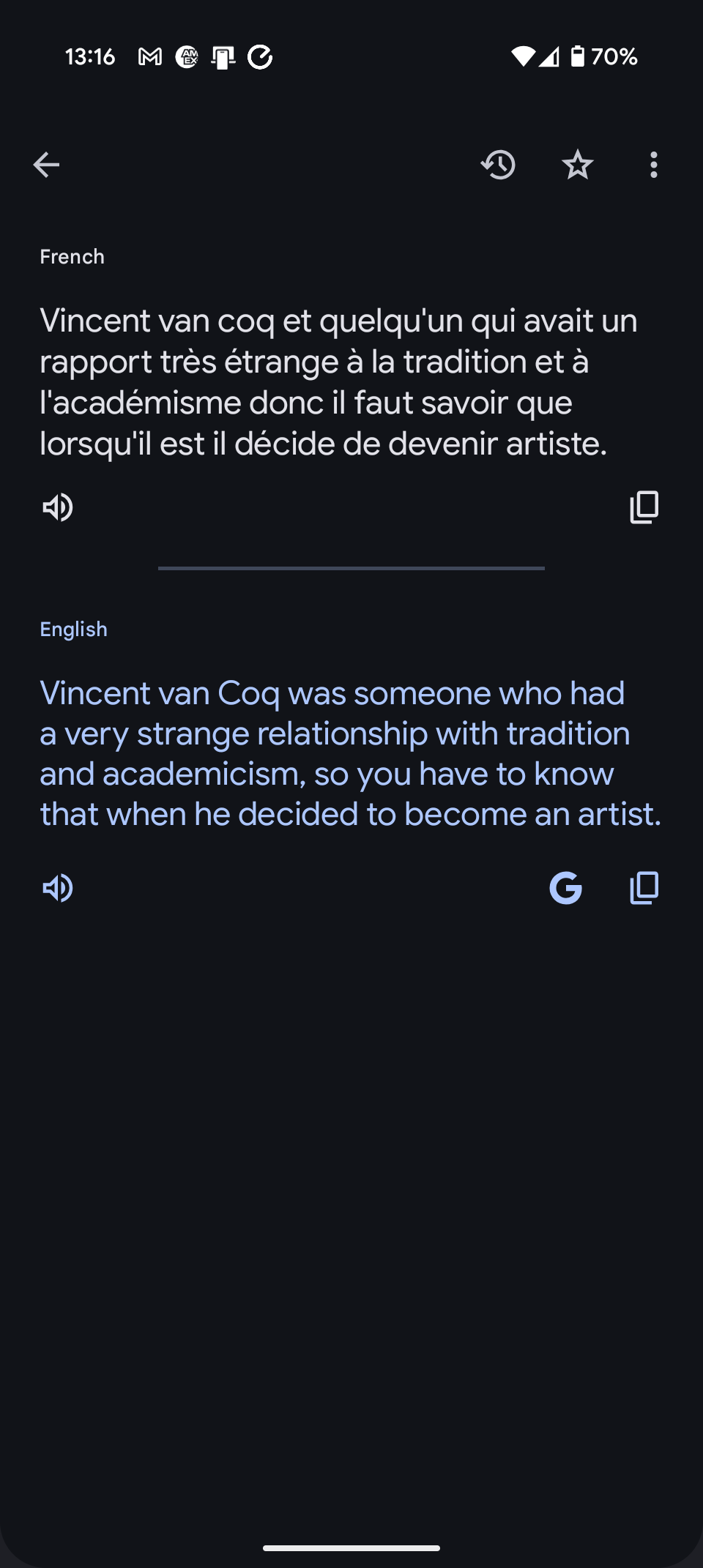
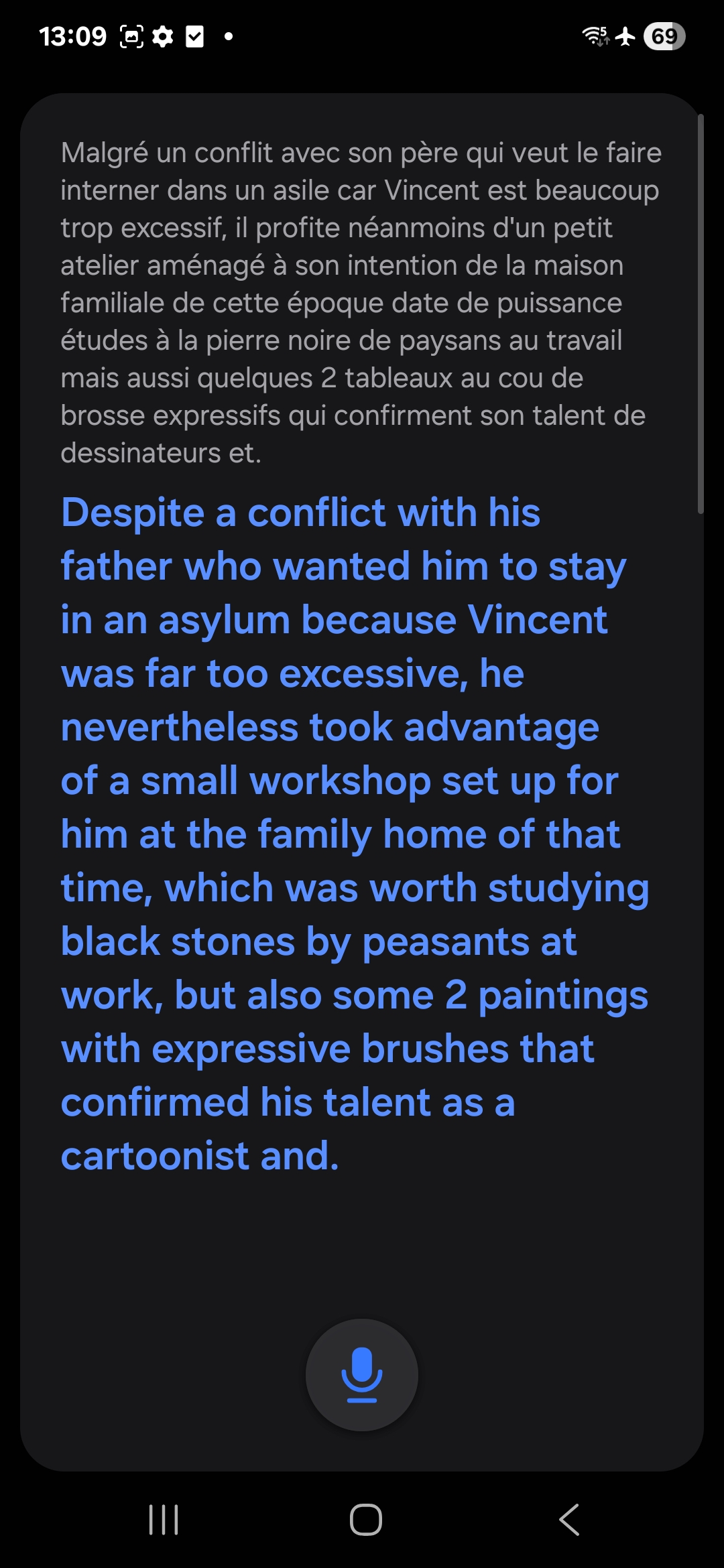
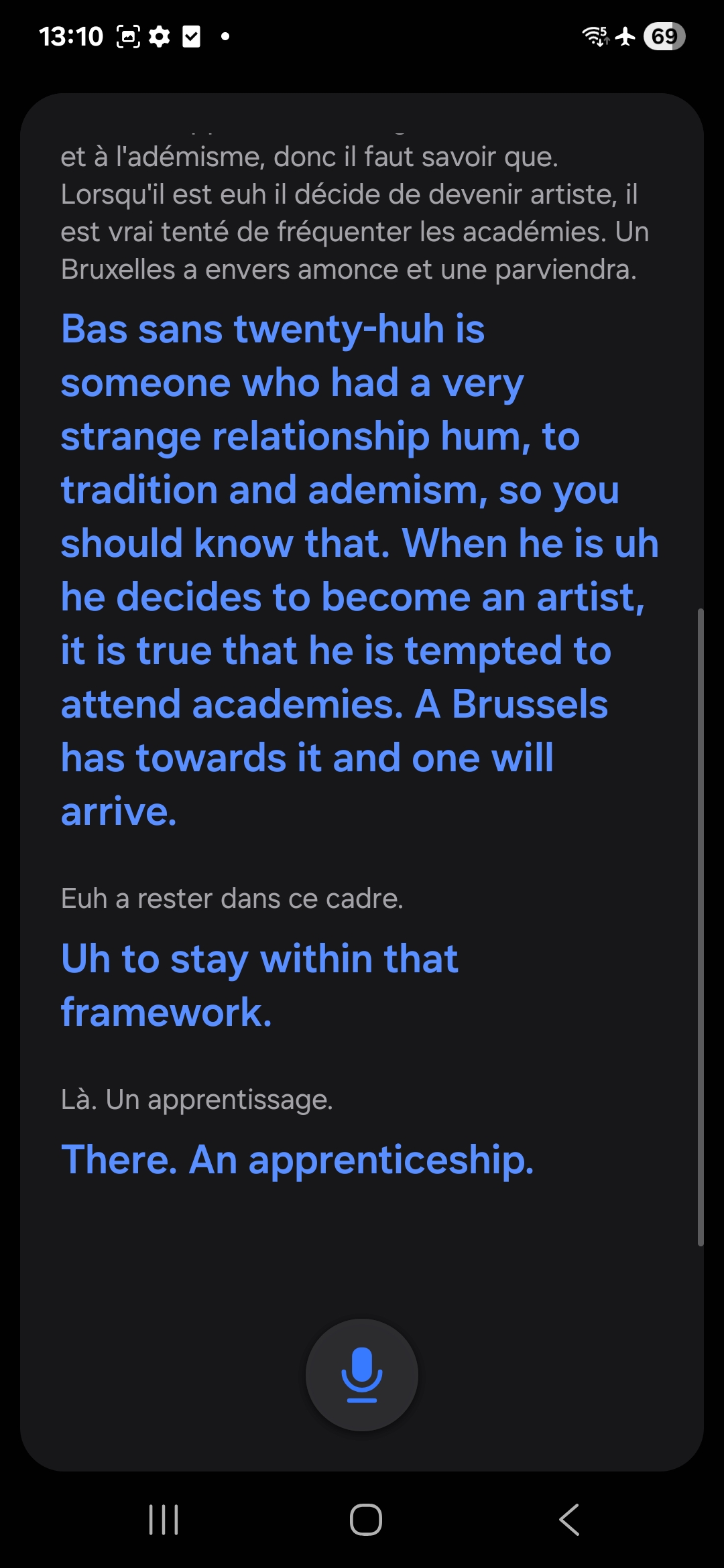
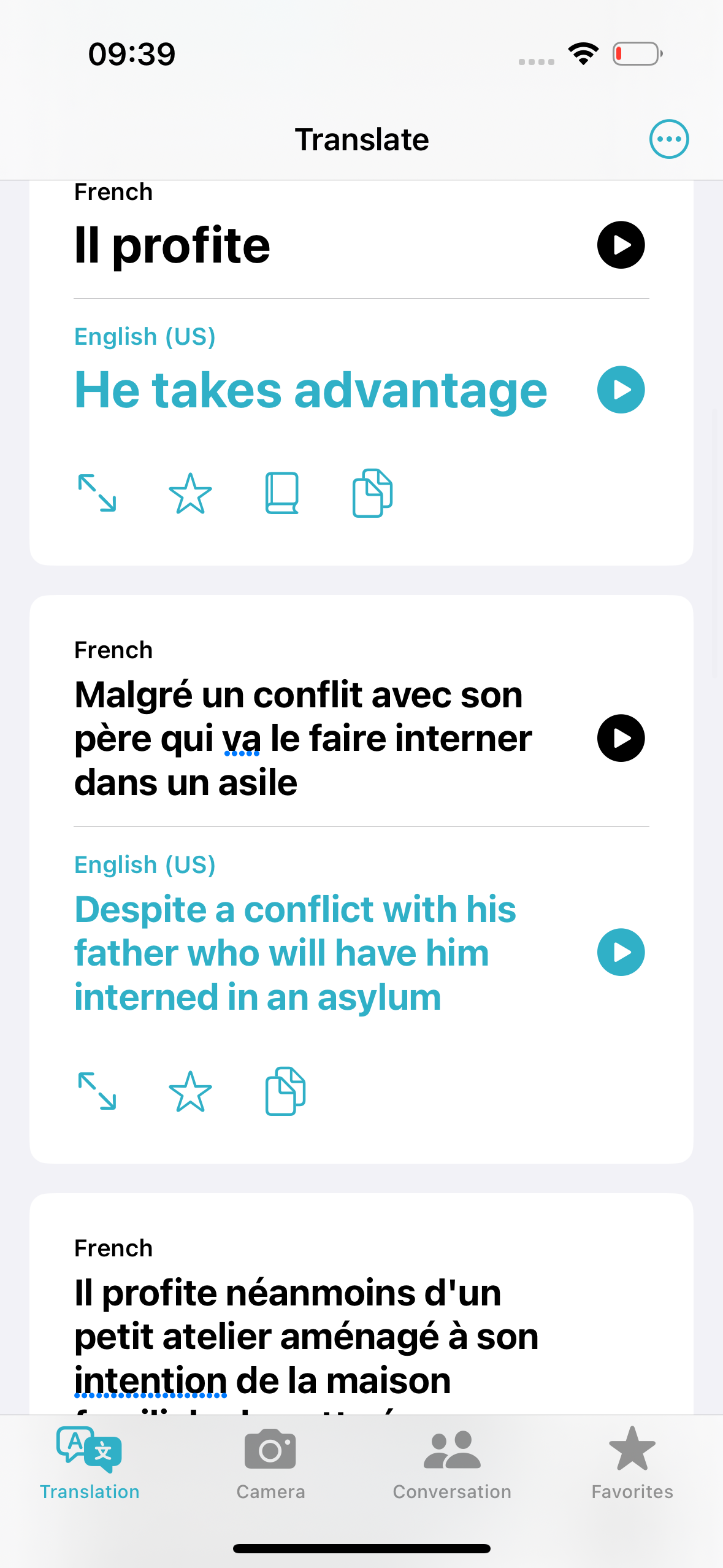
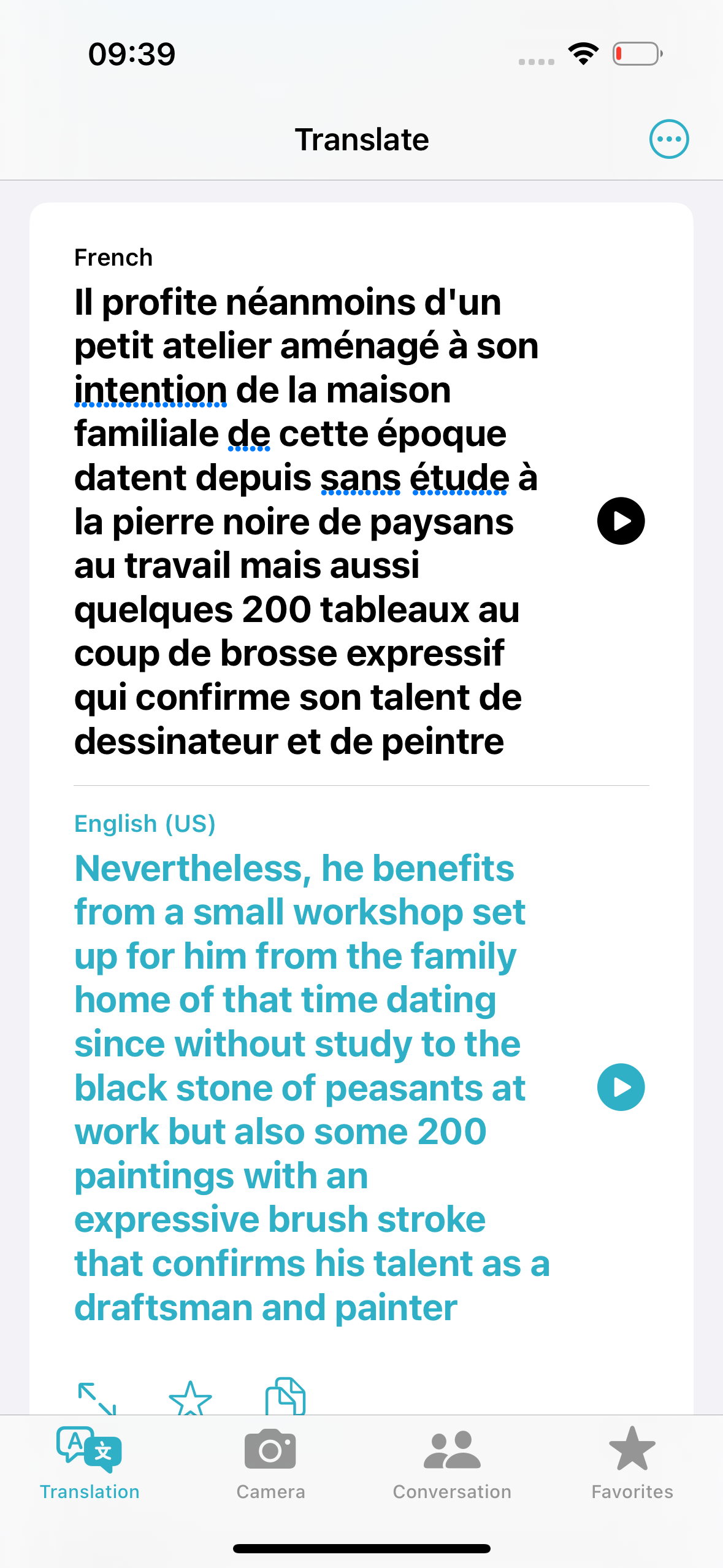
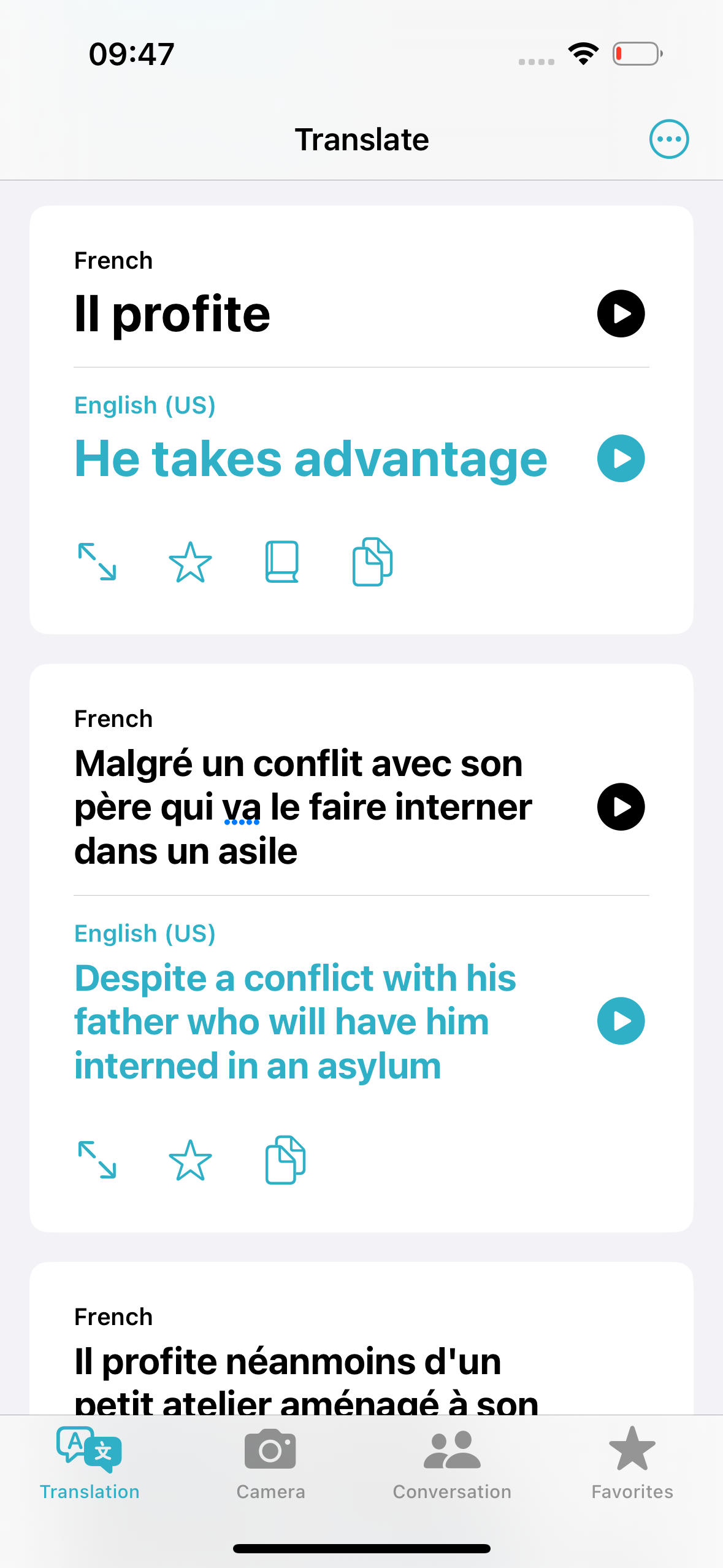
For French speech, I translated segments of a Netflix Documentary, "The Greatest Painters of the World: Van Gogh."
In a surprise twist, during my first stint using Apple Translate the app was actually very good at picking up French, and listening in for more than a few words at a time. But not consistently. In fact, any kind of pause in the flow of speech caused the app to stop listening, making translating large portions of speech very frustrating.
Samsung again excels at picking up extended speech, translating in near real time, while Google was something of a middle ground. While a lot of what the phones picked up was translated correctly, or near enough, there do appear to be plenty of missteps along the way.
A couple of good examples come from how Google and Samsung picked up the word "Van Gogh", with the former hearing it as "vingts-coque." Vints is 20, and coque has a lot of different translations — including "hull" or "shell". Neither of which are correct. Likewise, Google heard "Gogh" as "Coq", which means rooster.
In this instance, I'd argue that Samsung has the worst translation of the three. While it seems to be able to pick up individual words and phrases, a lot of what it's producing is quite difficult to read — no doubt because it was struggling to pick up the words correctly.
Google and Apple did a much better job, with a few mistakes here and there, but mostly managed to produce more legible translations. Sadly, the fact the two cut off so frequently, especially Apple Translate, meant that extra errors did slip through the gaps.
Spanish
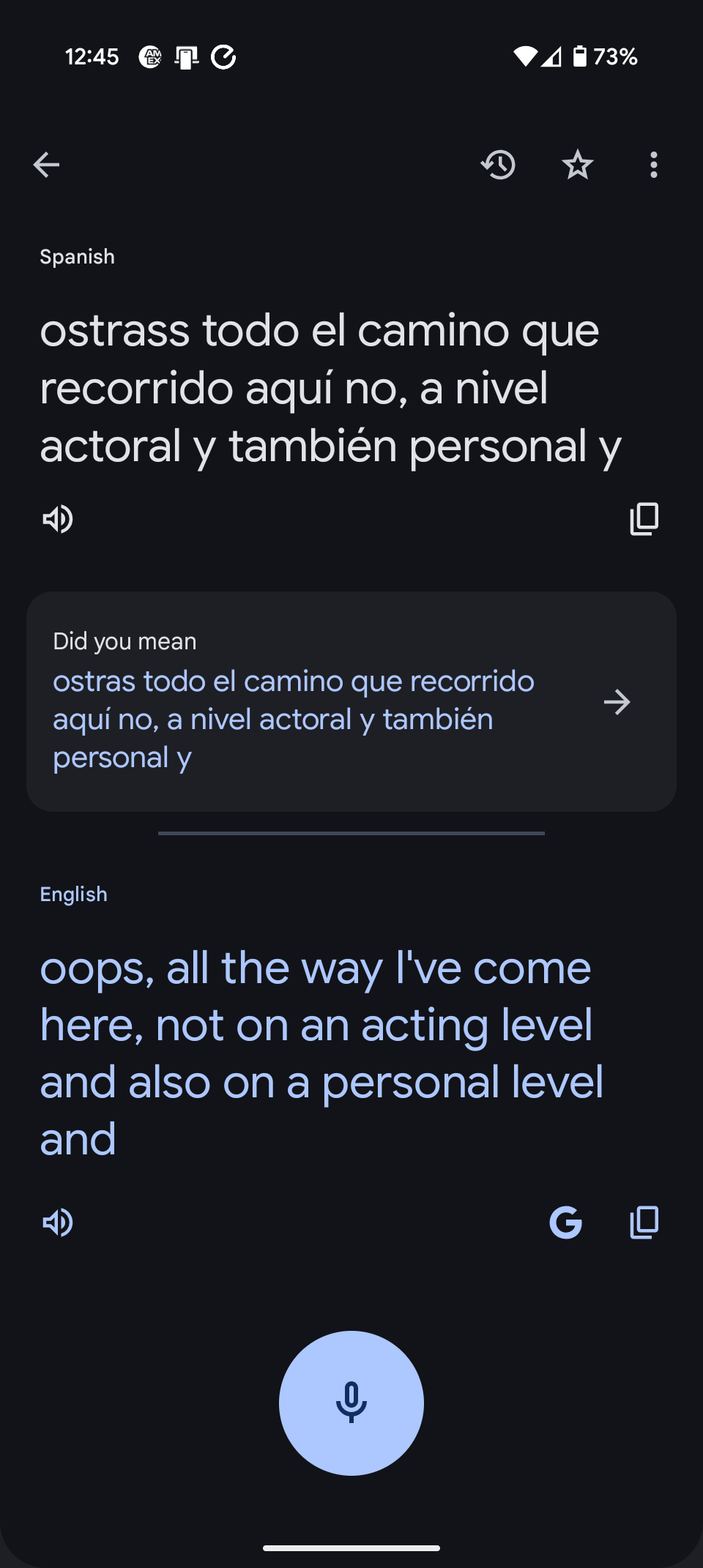
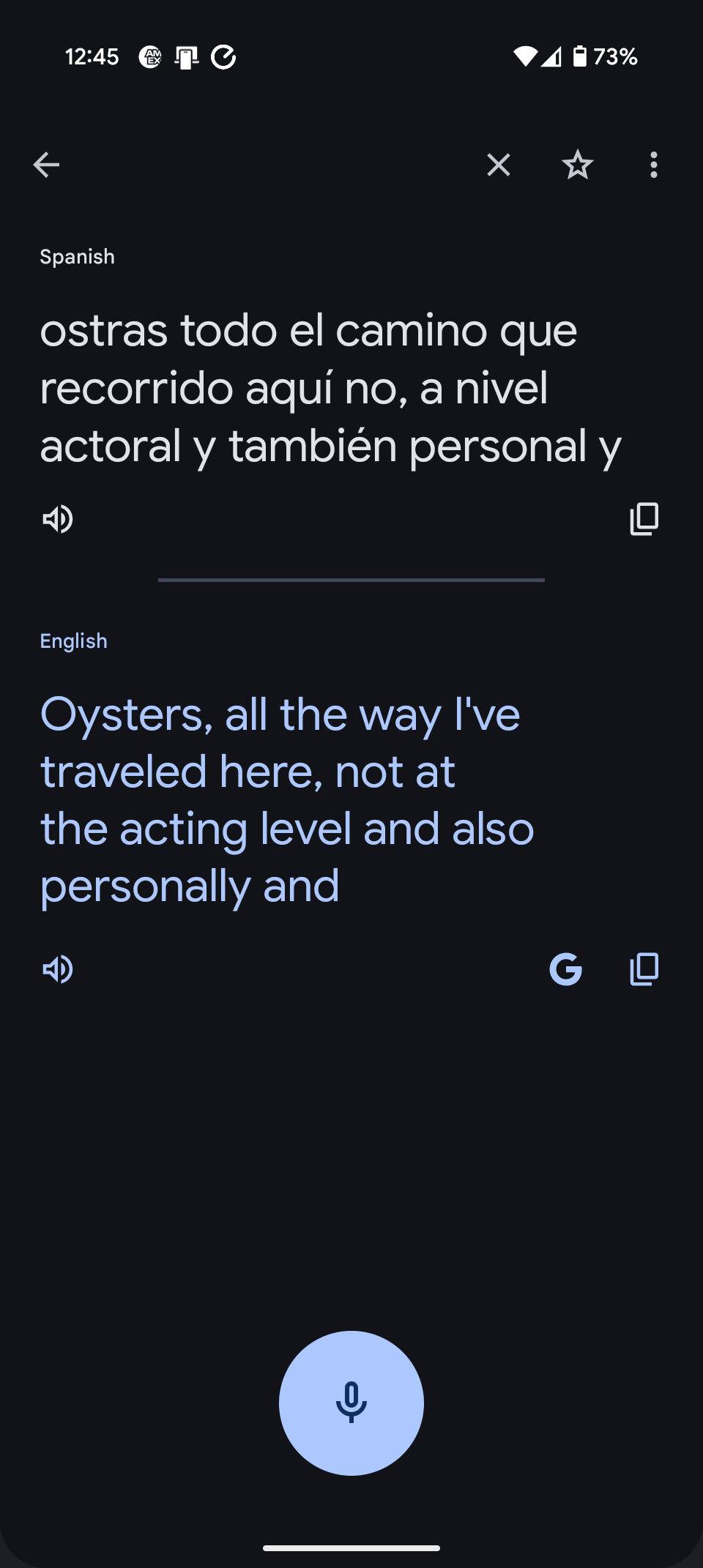
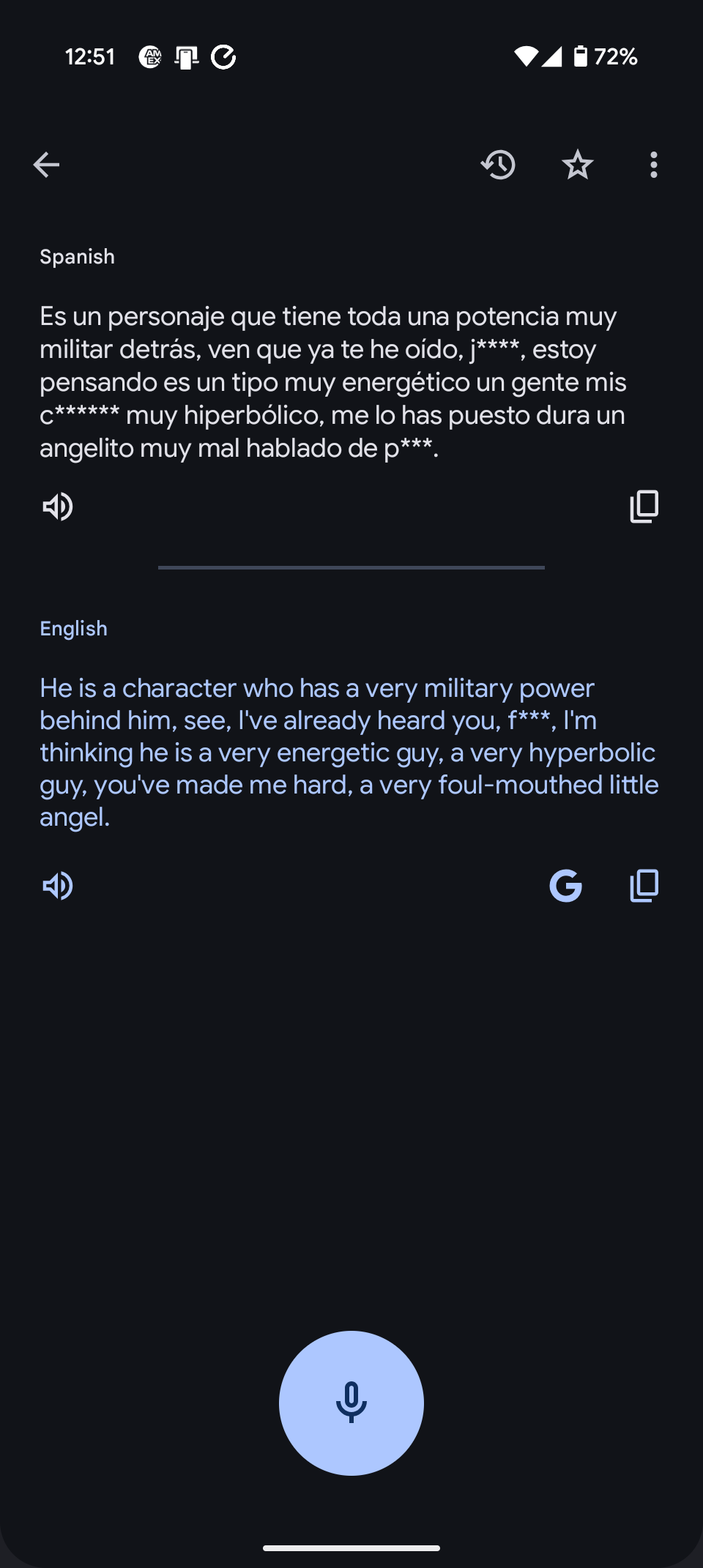
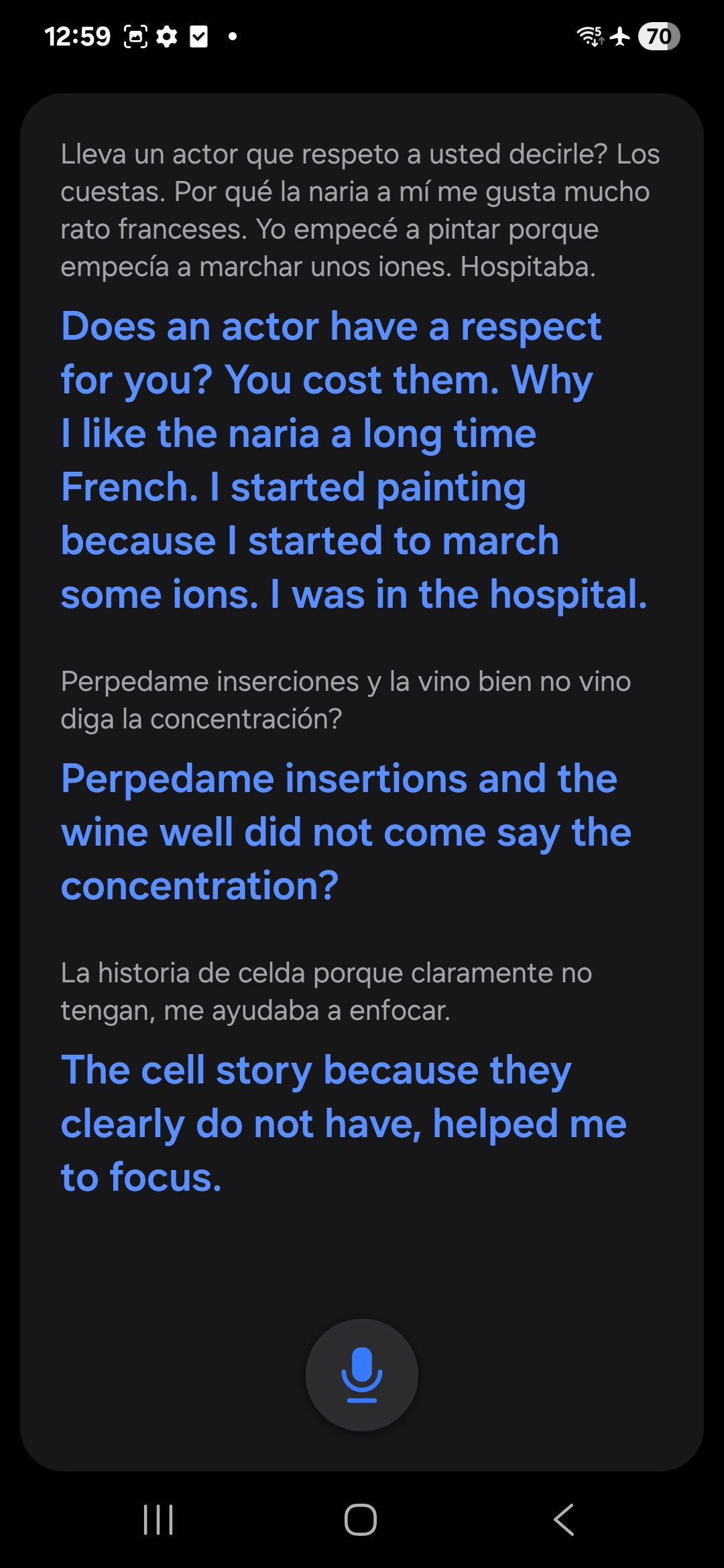
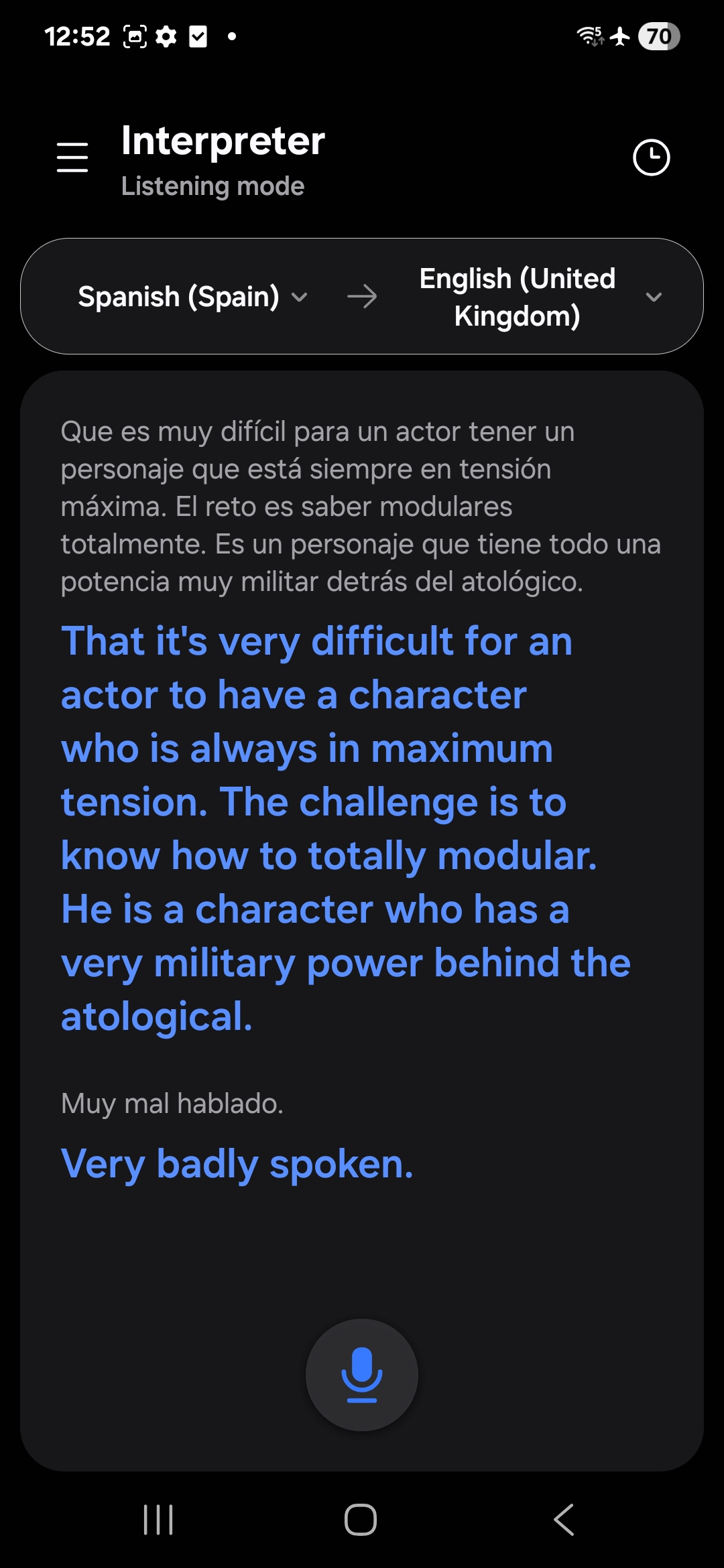
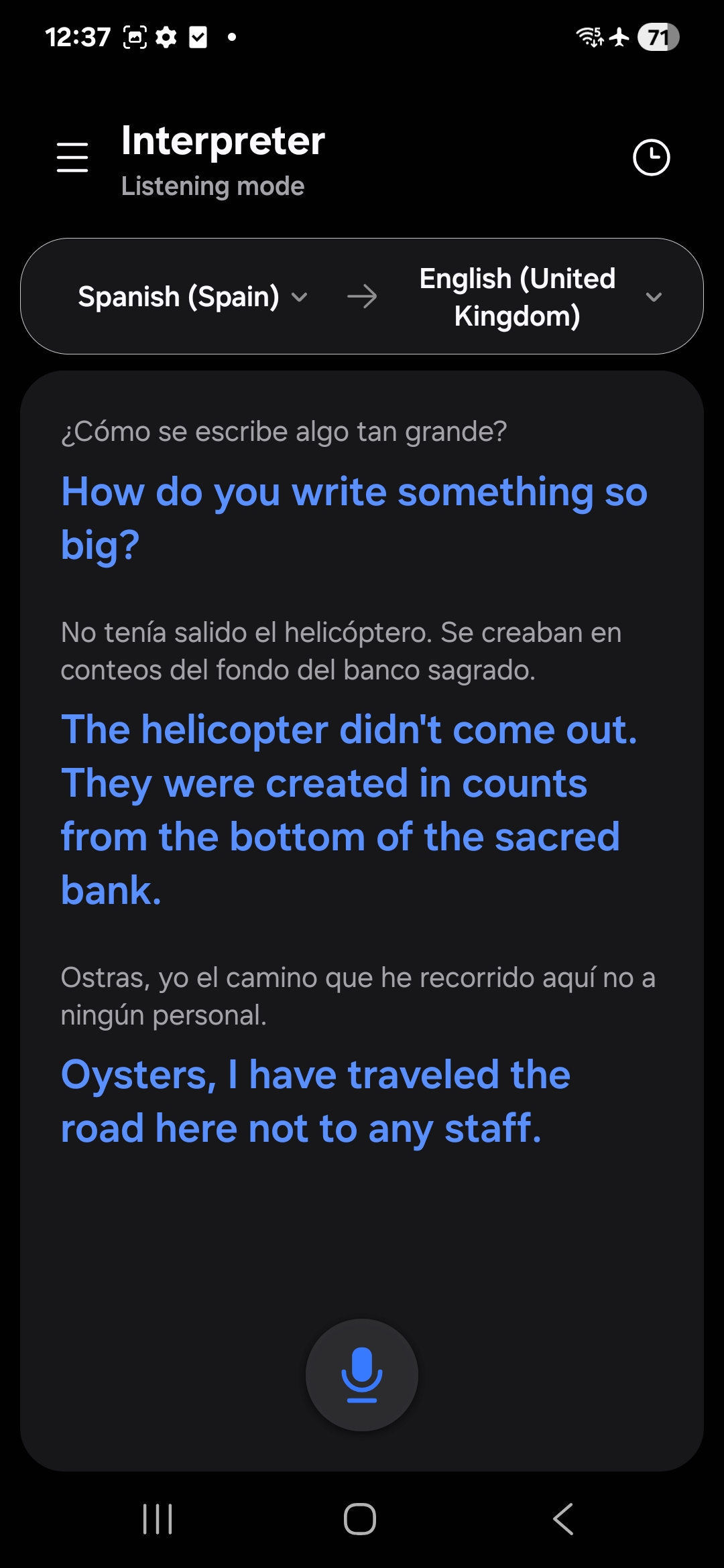
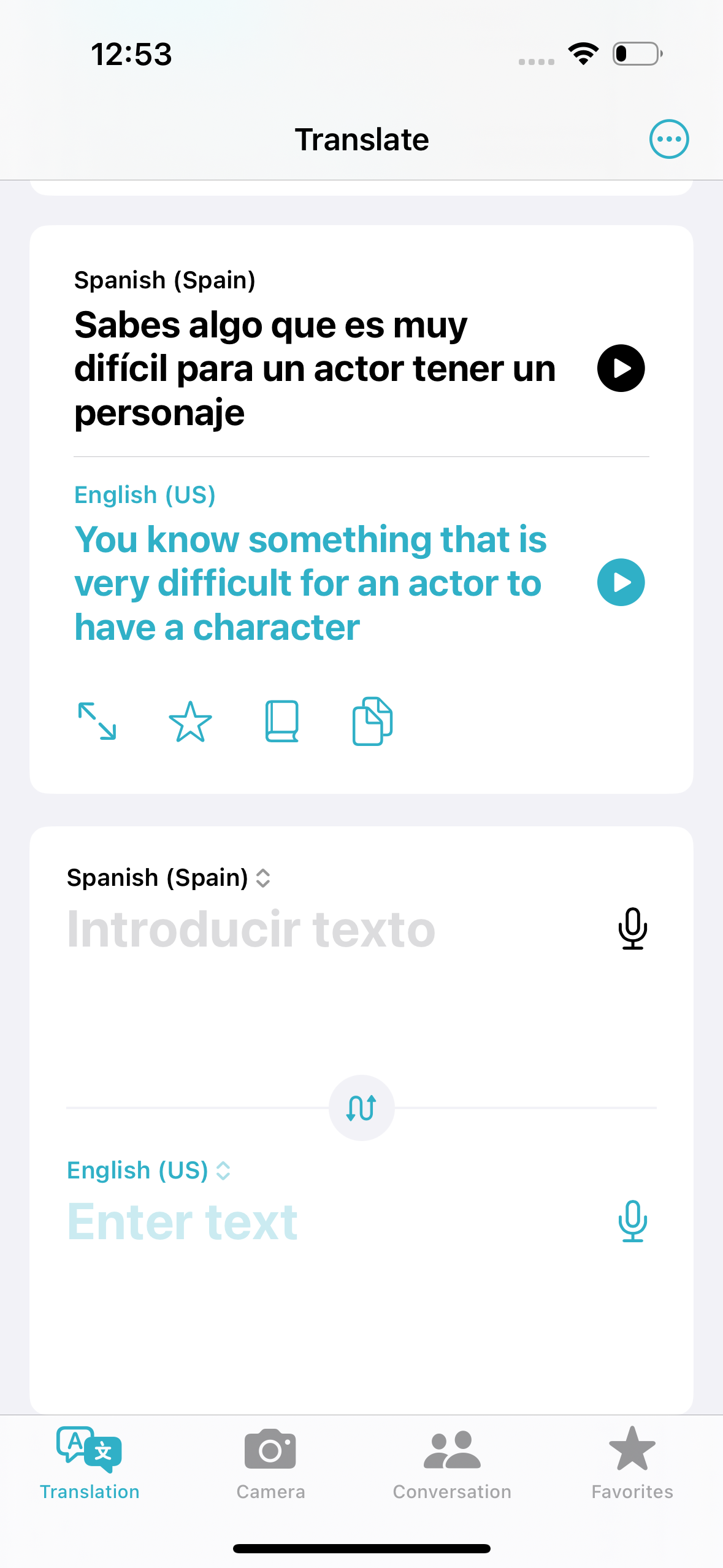
With Spanish, I opted for a different documentary, "Money Heist: From Tokyo to Berlin," which focussed on the making of Netflix's hit series Money Heist.
While you'd expect translation apps to have the most trouble with languages with the difficult languages like Mandarin, they actually seemed to face the most problems with Spanish. Admittedly I was translating speech based on European Spanish, which is different from dialects spoken in the Americas, but I had accounted for that by picking the "Spanish (Spain)" option where available.
It didn't actually help, and at times it would come out with complete gibberish.
One of the things that stood out most was when one of the cast said what the translation apps thought was "ostras", which means oysters. Google also suggested it could be Ostrass", which means "oops", but the Netflix subtitles had that line as "wow." Which is quite the difference.
Another example is when Samsung picked up "Se creaban en conteos del fondo del banco Sagrado," which it claims means "they were created in counts from the bottom of the sacred bank." Trying again and it said the line was "Esta se quedaban ahí goteo, abriéndoes port todos lados", which translated to "they were dripping there, opening up everywhere."
The subtitles said the line was "they stayed inside the helicopter taking photos, hugging." I know Netflix subtitles don't have a very good reputation, but the disconnect there is quite extreme to say the least.
Meanwhile, Apple Translate really struggled to pick up anything at all, and when it could it managed to pull in half a sentence. To the point where I wanted to give up many times. How that's such a different performance to French is something I'll never understand.
Mandarin
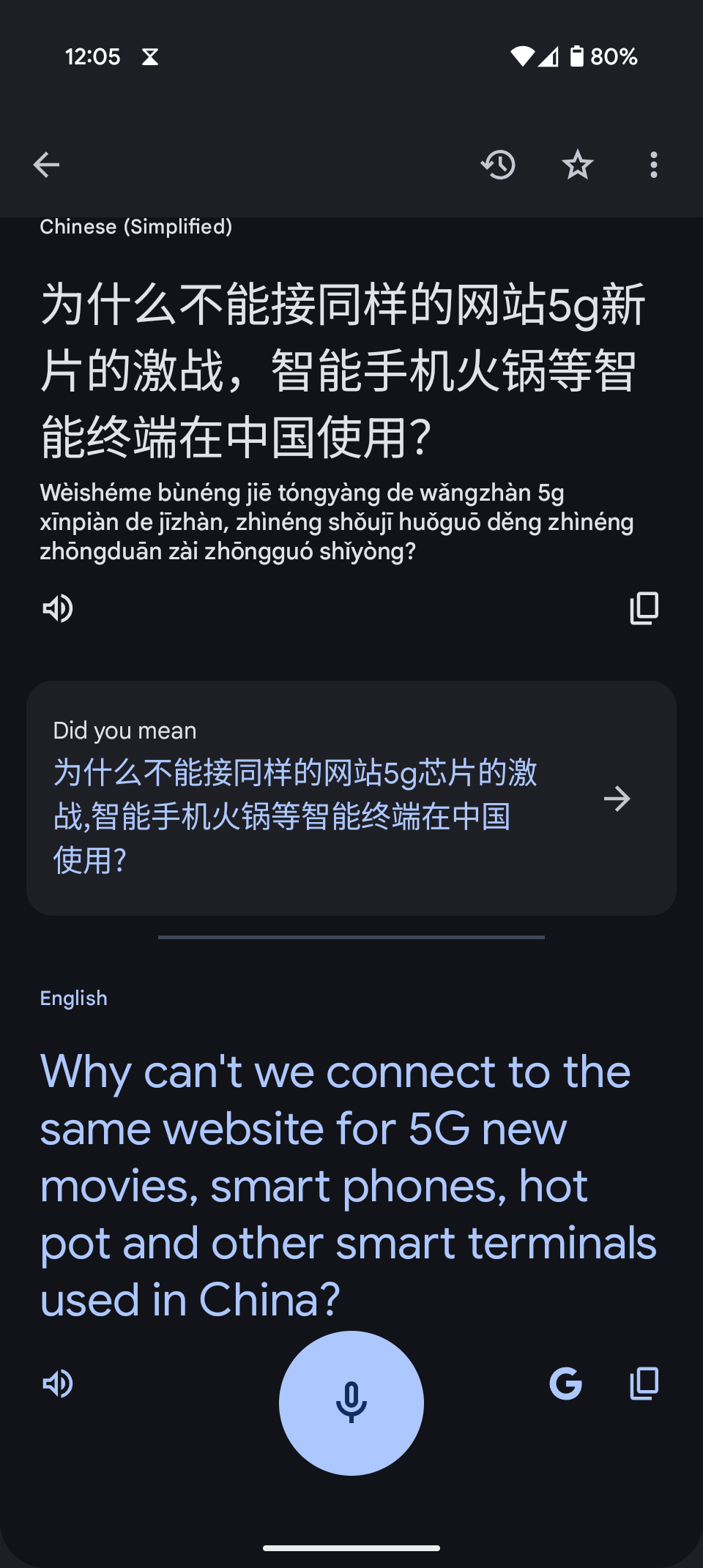
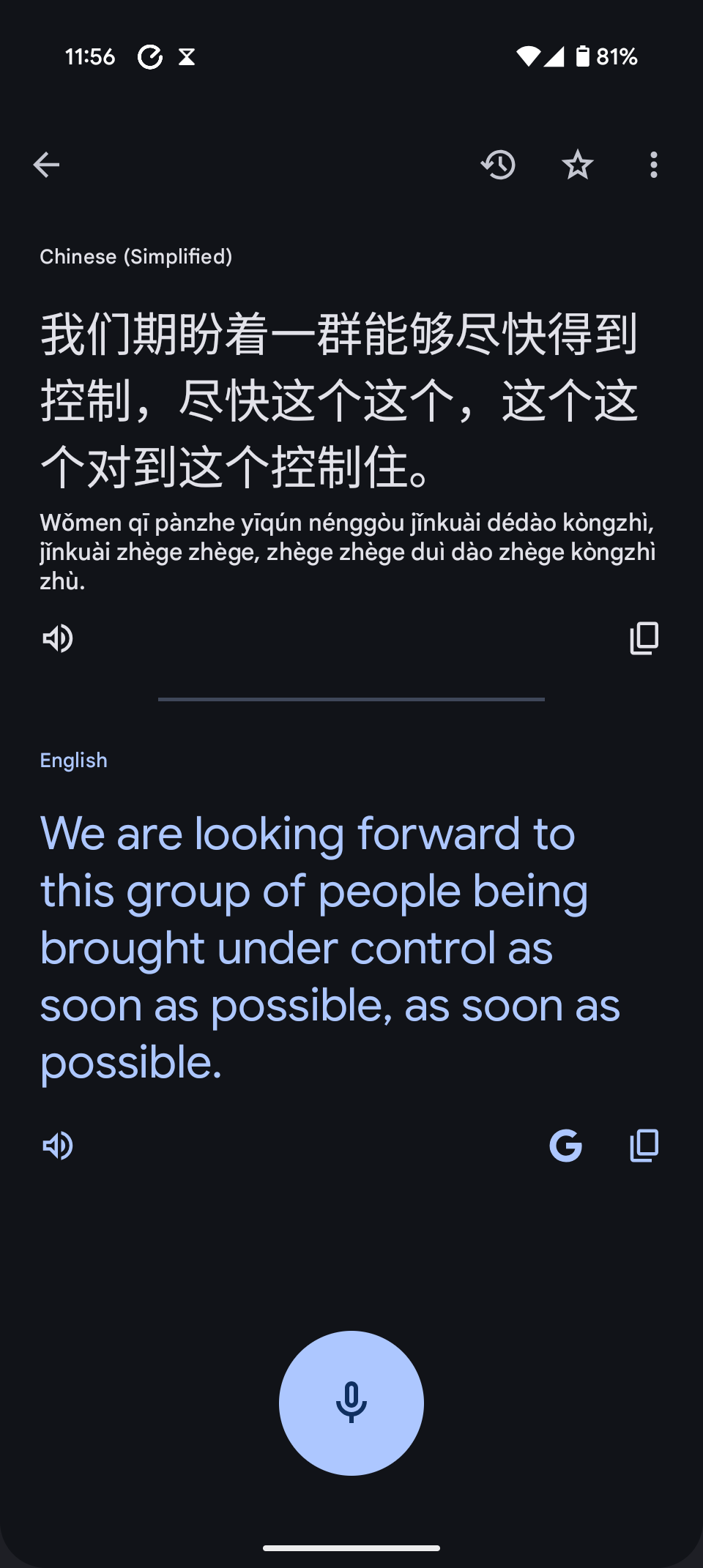
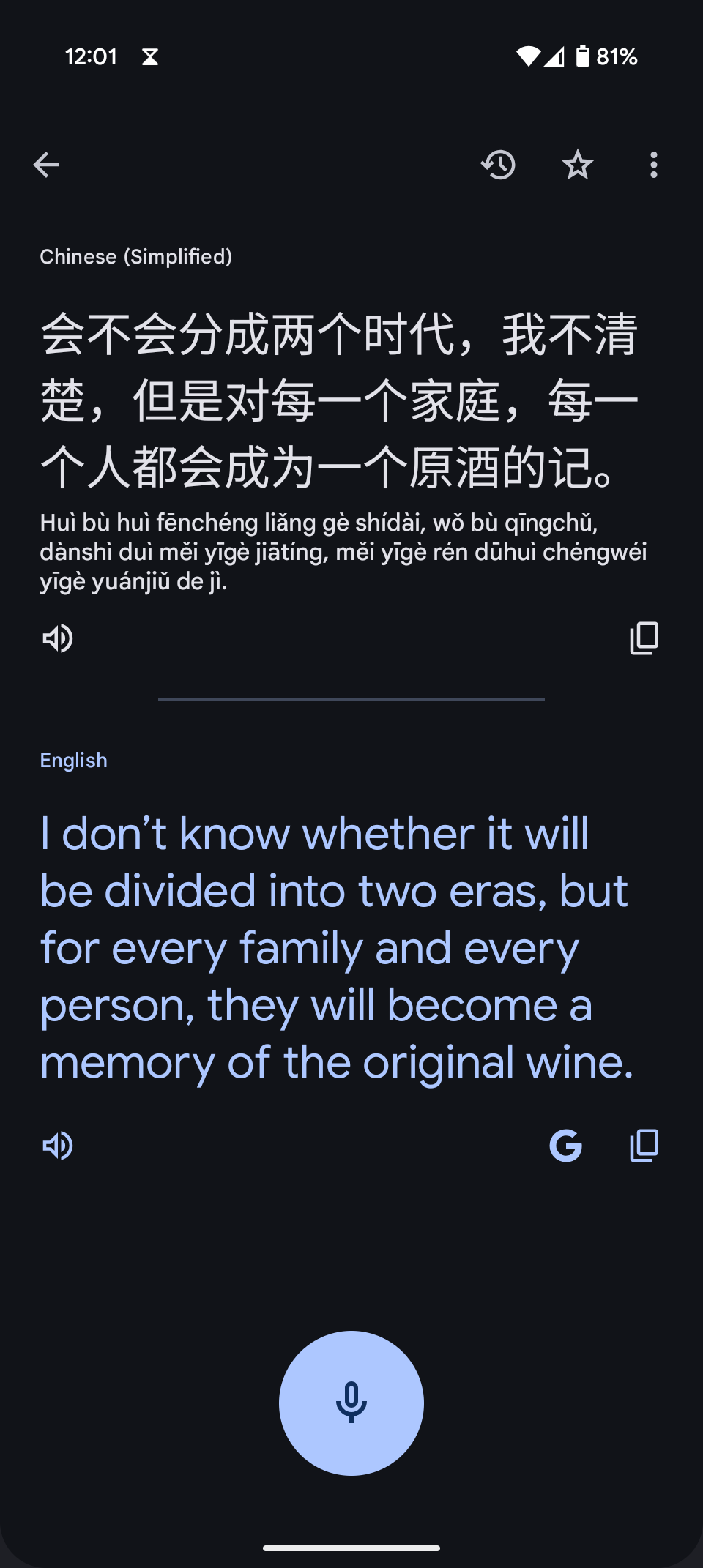
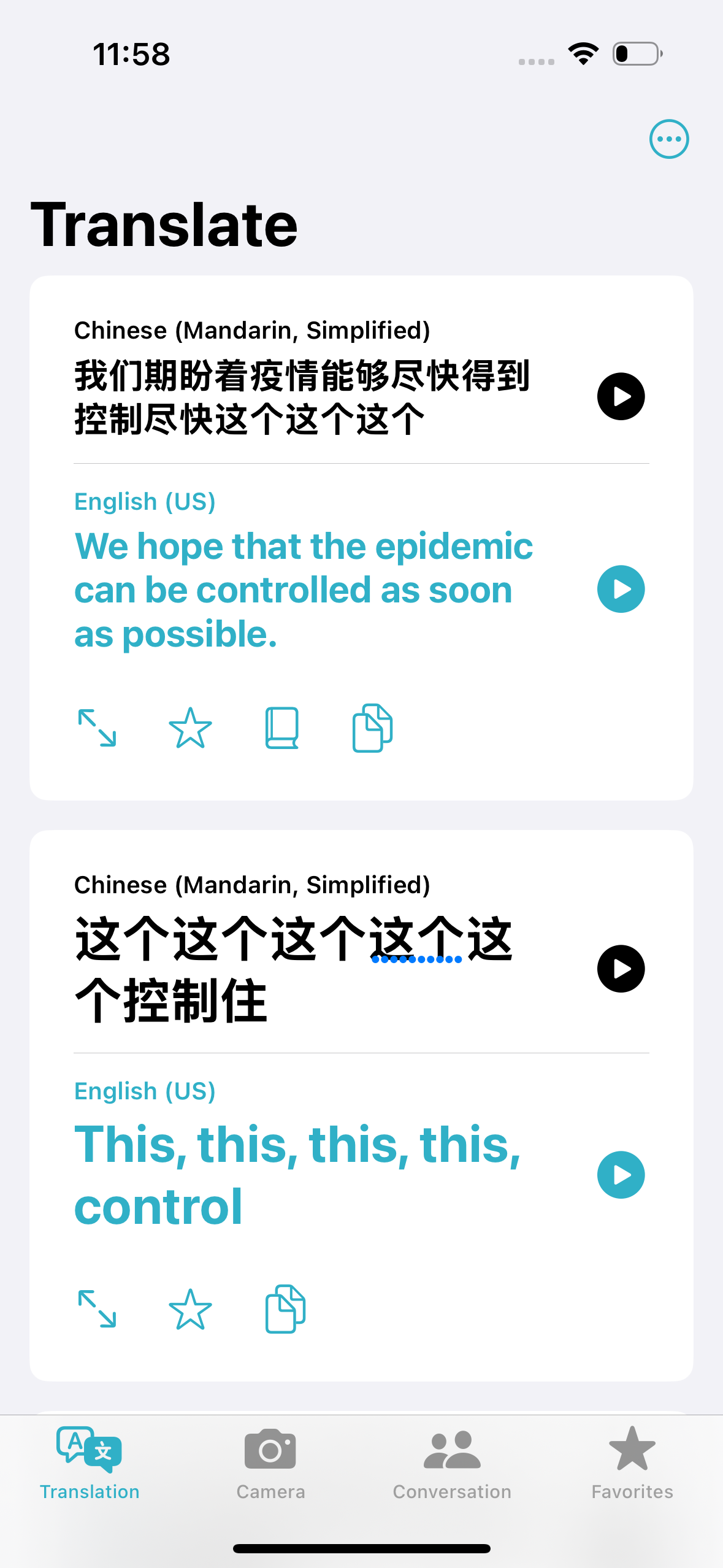
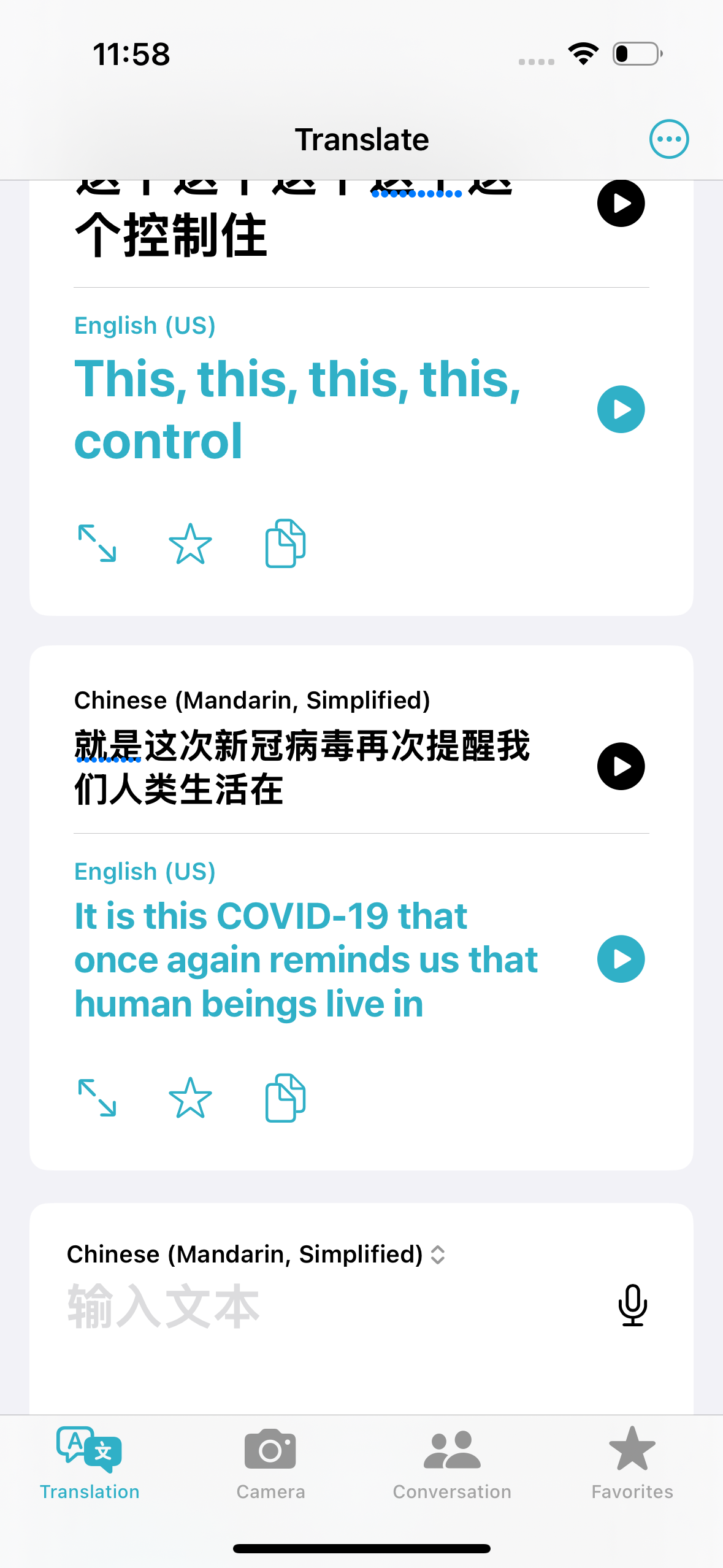
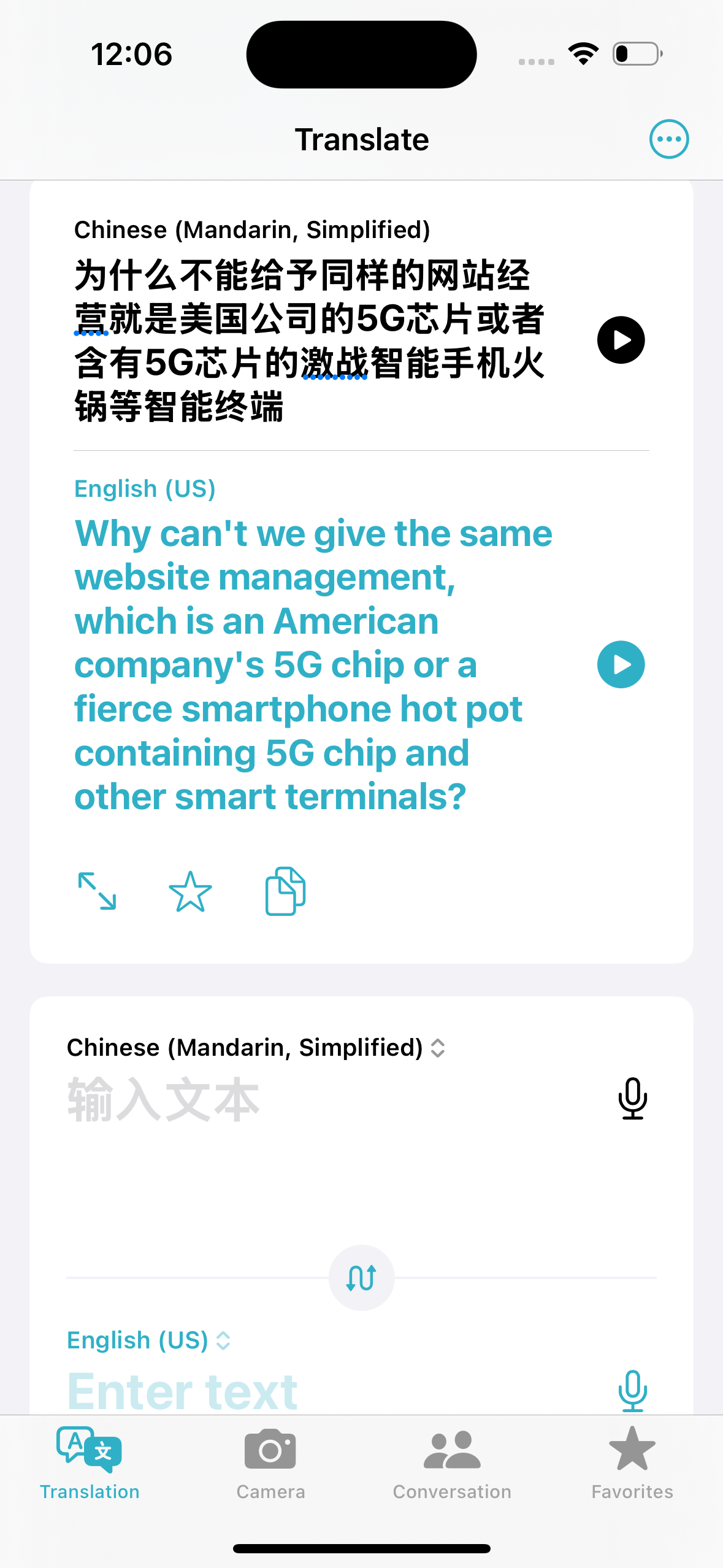
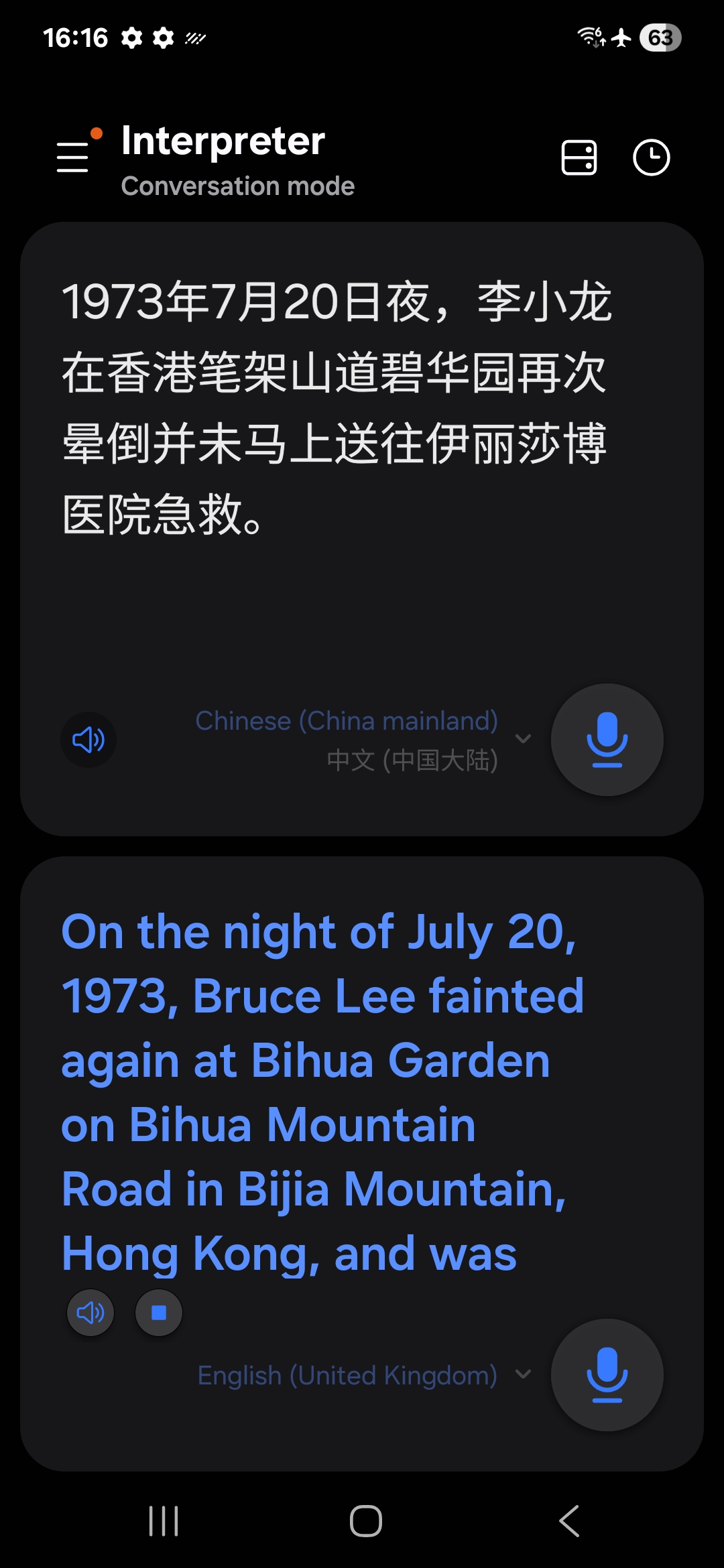

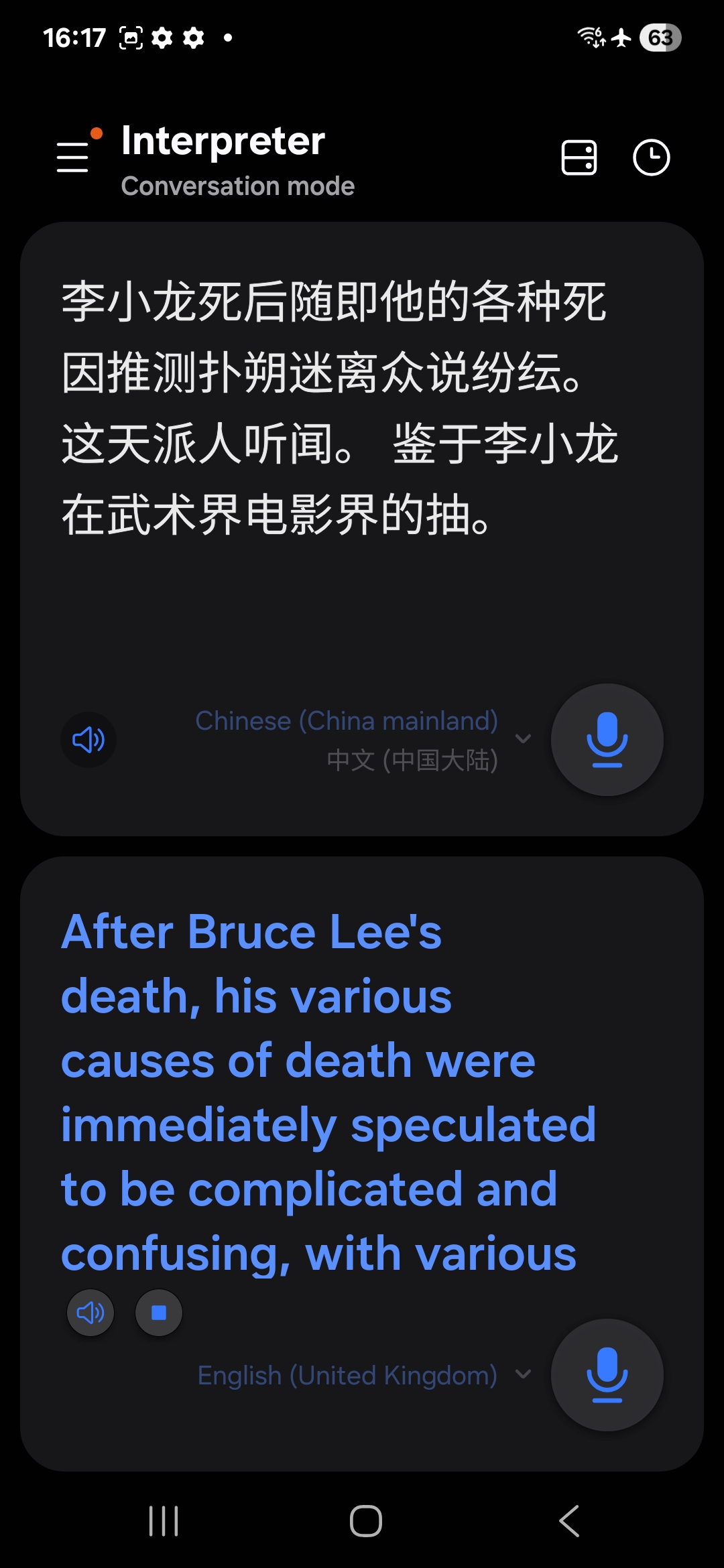
The translation apps' issue with Spanish was similar to my experience testing Mandarin. Here, my source video was a 2020 Huawei shareholders' meeting, since the stream featured a professional translator working between English and Mandarin.
On the very first line I tried to translate, discussing the then-new COVID-19 pandemic and how it was hoped the virus and epidemic could be brought under control. But Google decided that the speaker wanted "this group of people" to be "brought under control as soon as possible." Which has some very different connotations.
At another stage, the phrase that was translated as "unforgettable memory" ended up being called "family department" by Apple, and "memory of the original win" by Google. Samsung got the "permanent memory" part, but had already claimed that "every person will become" one.
In another instance of a discussion about the possibility of China banning American 5G chips, Samsung managed to get the gist of what was being discussed, but Google and Samsung did not.
Google talked about connecting to "the same website for 5G", and Apple talked about using "the same website management." Neither of which make the slightest bit of sense, even with context.
Samsung certainly came out best with Mandarin, and while Google and Apple could translate the general idea of what was being said, they still struggled. The fact that Apple also kept cutting off mid-sentence was definitely not helping things, either.
Verdict
All three AI platforms have their own respective positives and negatives, and with performance that is roughly on par with everything except voice translation. Text translation seems to be roughly equal across all three devices, even if some of the words differ on occasion.
Likewise, the camera translation tools work quite well, though Samsung certainly comes in last. Not because of any major performance issues, but because it's hard to access the camera translation tools, and the AR tool itself makes the translation rather hard to read. These would likely be easy things for Samsung to fix, though.
Translating real speech is a clear low point for all three. Apple, for cutting off the recording far too quickly even if the translation was generally rather good. Samsung, meanwhile, was the opposite: Continually recording and translating until told otherwise, but regurgitating nonsense in the process. Google Translate probably had the best middle ground, but still struggled at times — especially with the Spanish.
So if you're going to translate speech in real time, make sure the people are speaking slowly and clearly. Otherwise you're just going to miss stuff, and get dodgy translations in the process.
Plus, don't forget, Google's translation tools are not restricted to Pixel phones. Google Translate, Lens and the Chrome browser are all available on the Apple App Store and Google Play — giving Samsung and iPhone users access to all the same translation tools alongside their first-party options.
More from Tom's Guide
- Apple WWDC Interview: Craig Federighi and Joz on Siri delay, new Apple Intelligence features and what's next for AI
- OpenAI wants to be your next Google — here’s how close it is
- AI on phones feels too much like homework — and Apple should use iOS 26's redesign to fix that

Tom is the Tom's Guide's UK Phones Editor, tackling the latest smartphone news and vocally expressing his opinions about upcoming features or changes. It's long way from his days as editor of Gizmodo UK, when pretty much everything was on the table. He’s usually found trying to squeeze another giant Lego set onto the shelf, draining very large cups of coffee, or complaining about how terrible his Smart TV is.
You must confirm your public display name before commenting
Please logout and then login again, you will then be prompted to enter your display name.
